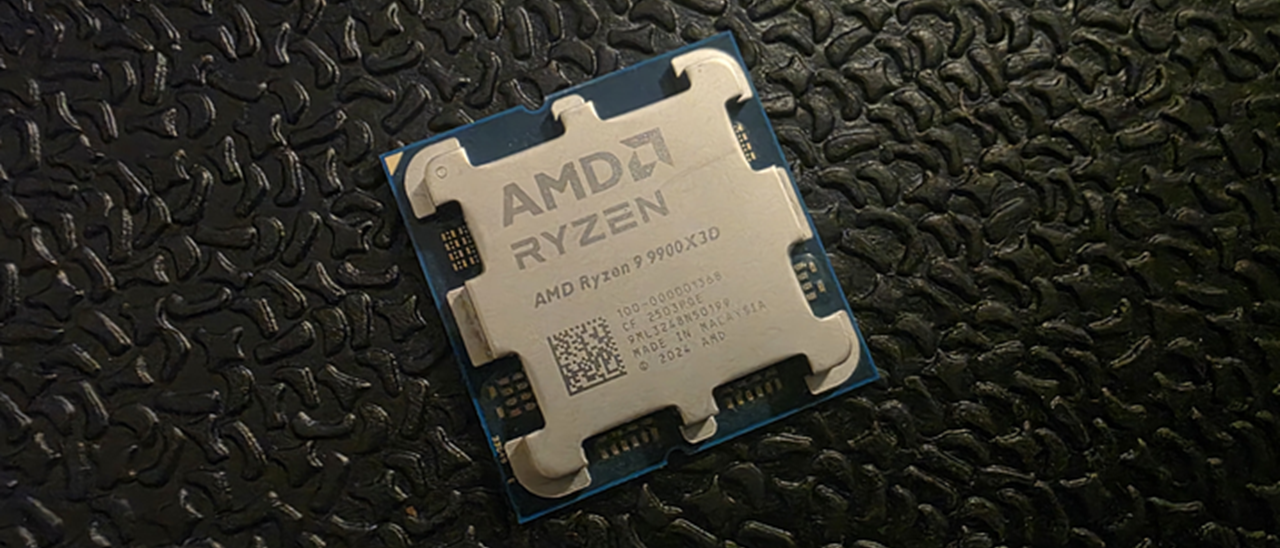Why you can trust Tom's Hardware
AMD Ryzen 9 9900X3D Gaming Benchmarks — The TLDR
We'll start with the high-level view of gaming performance, using the geometric mean of our 16 gaming benchmarks at 1080p, which is then followed by our individual benchmarks further down the page. We're testing with an Nvidia GeForce RTX 5090 FE to reduce GPU-imposed bottlenecks as much as possible, and differences between test subjects will shrink with lesser cards or higher resolutions and fidelity.
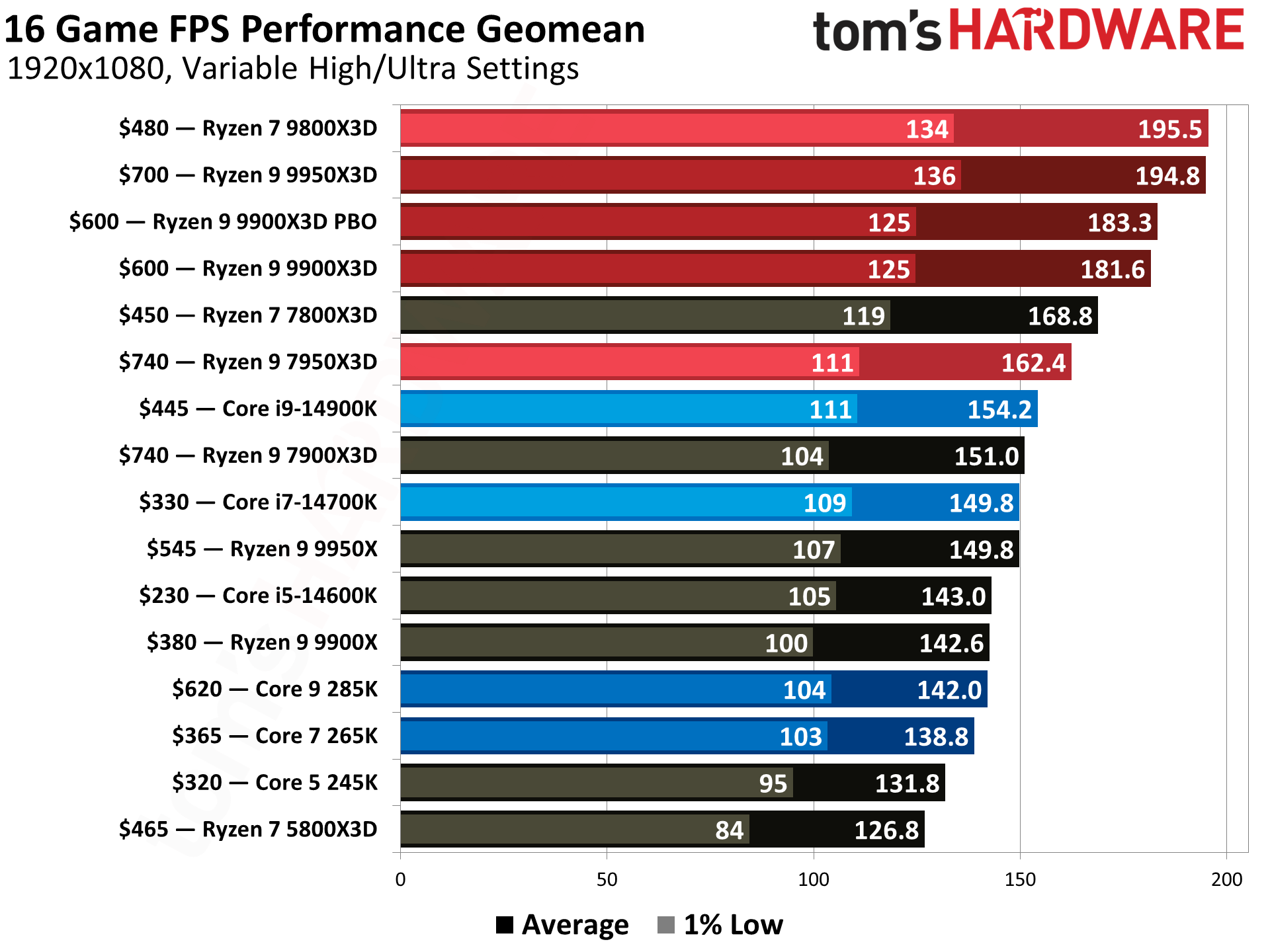
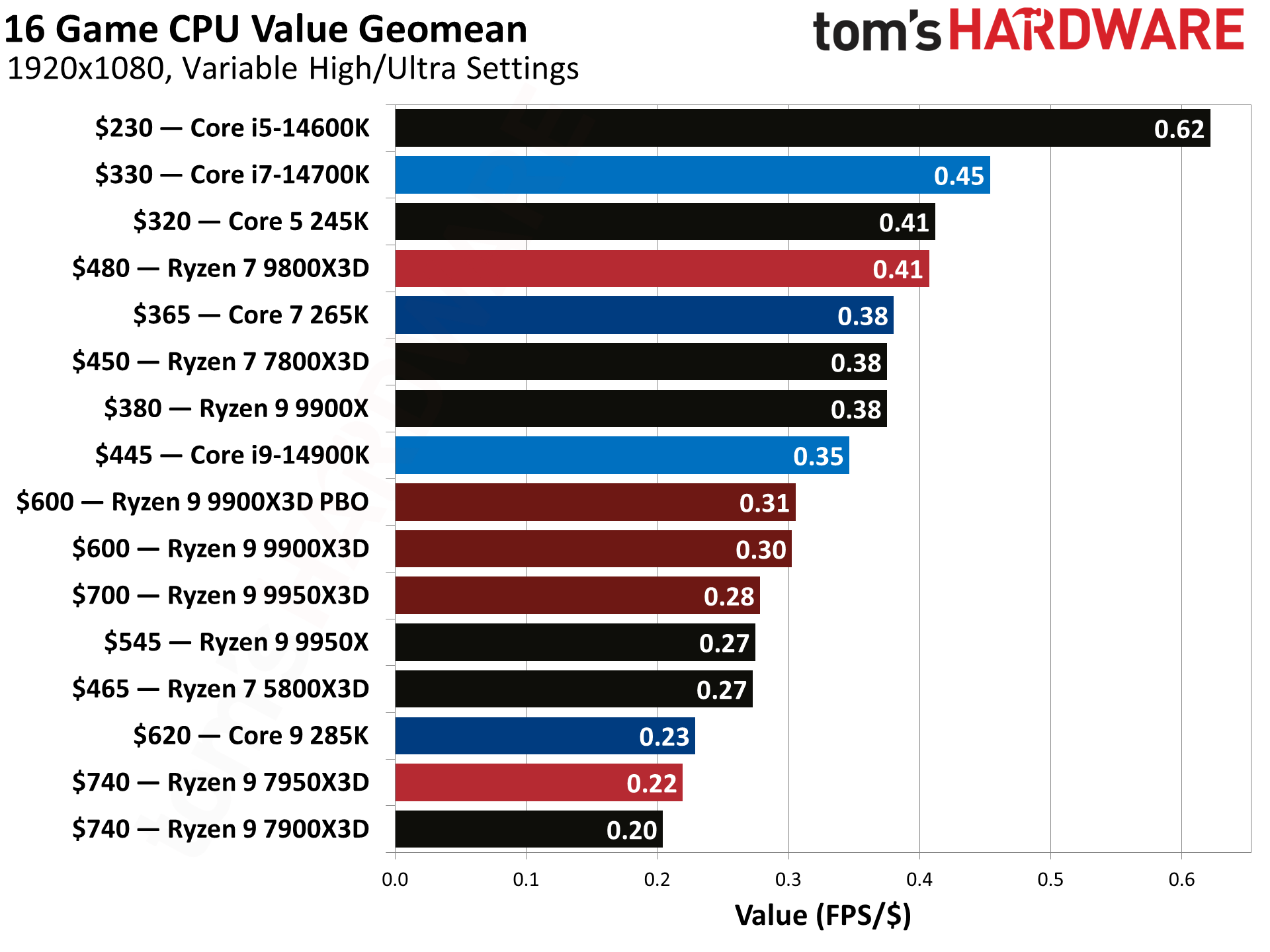
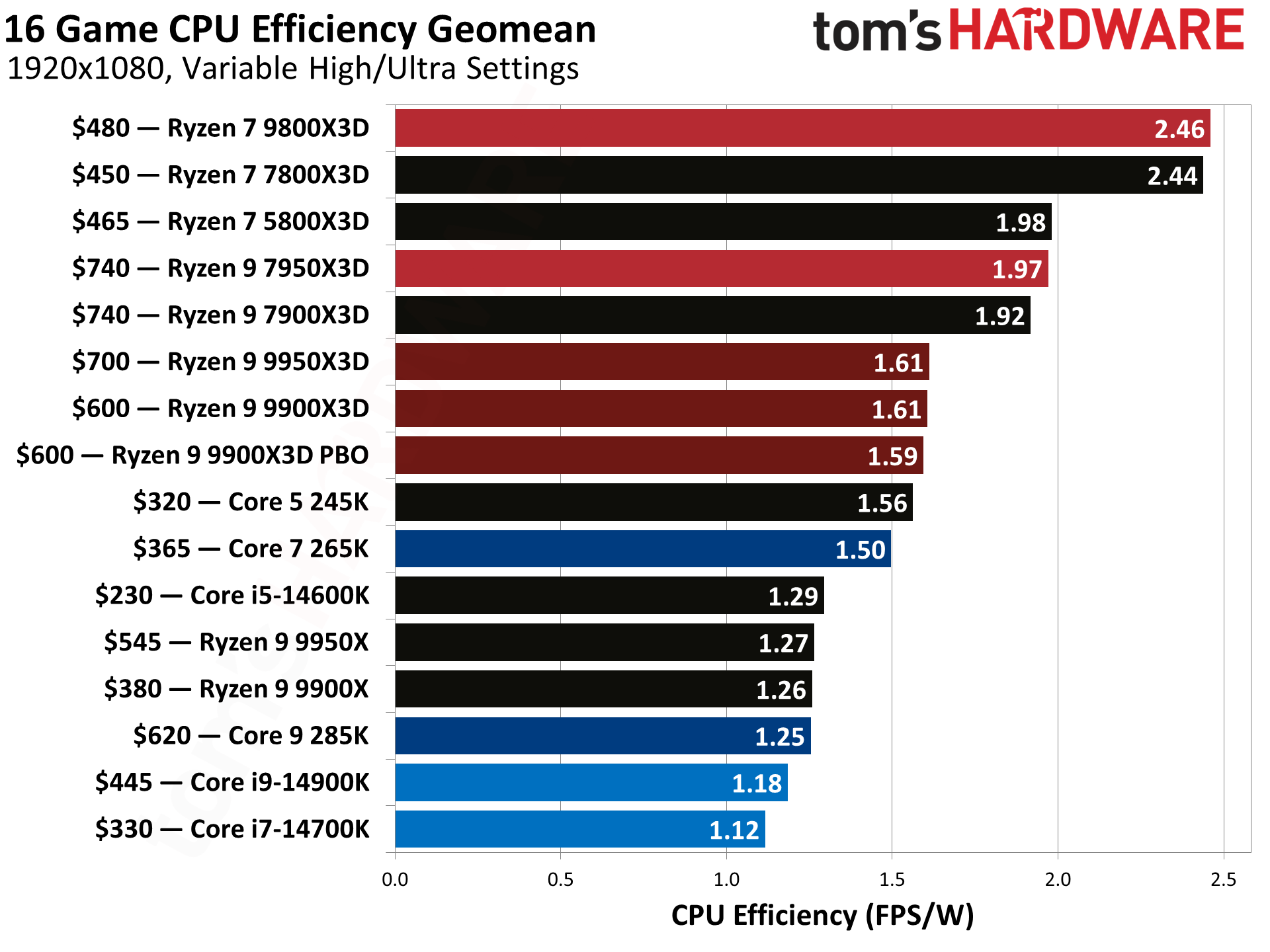
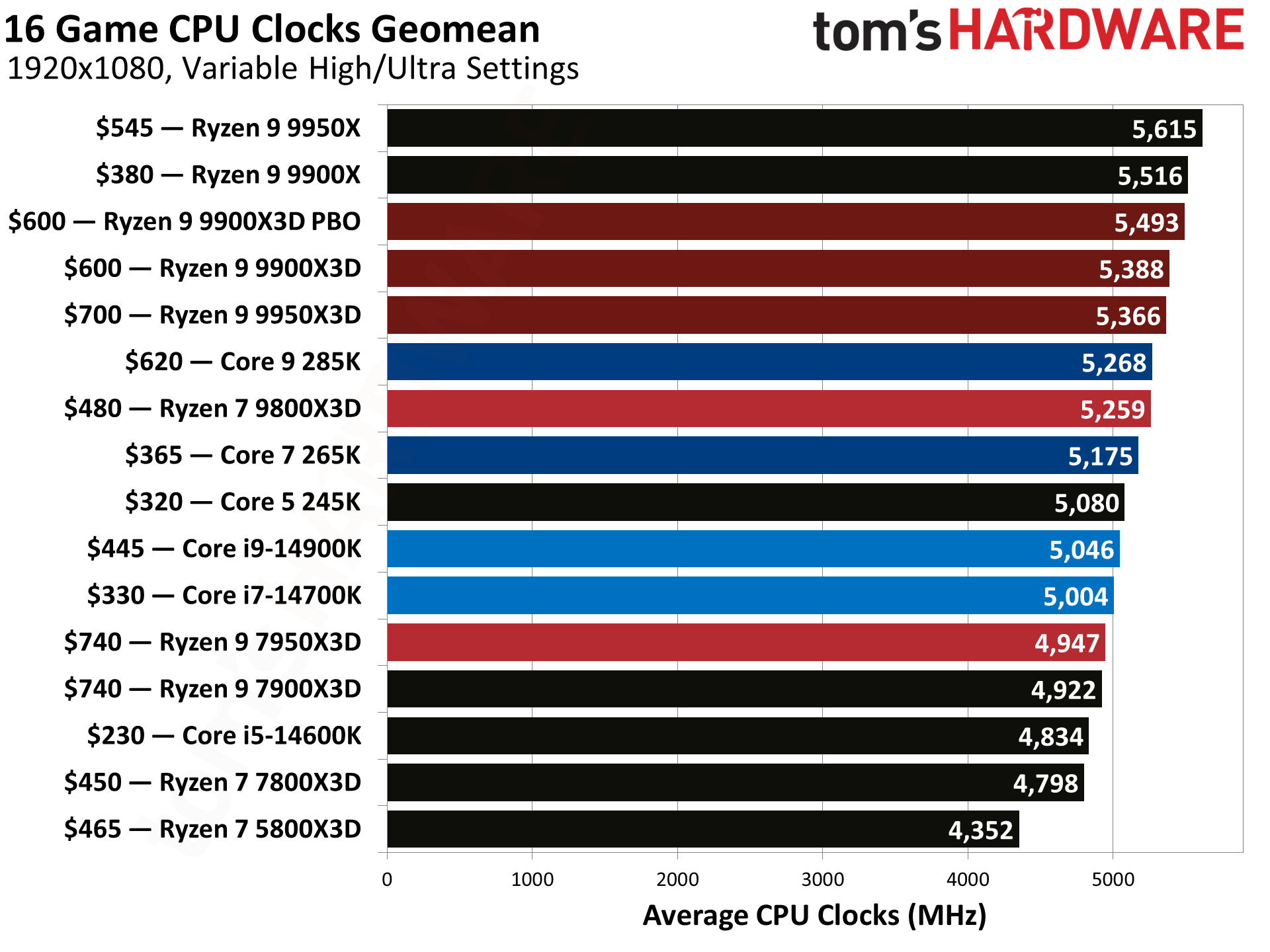
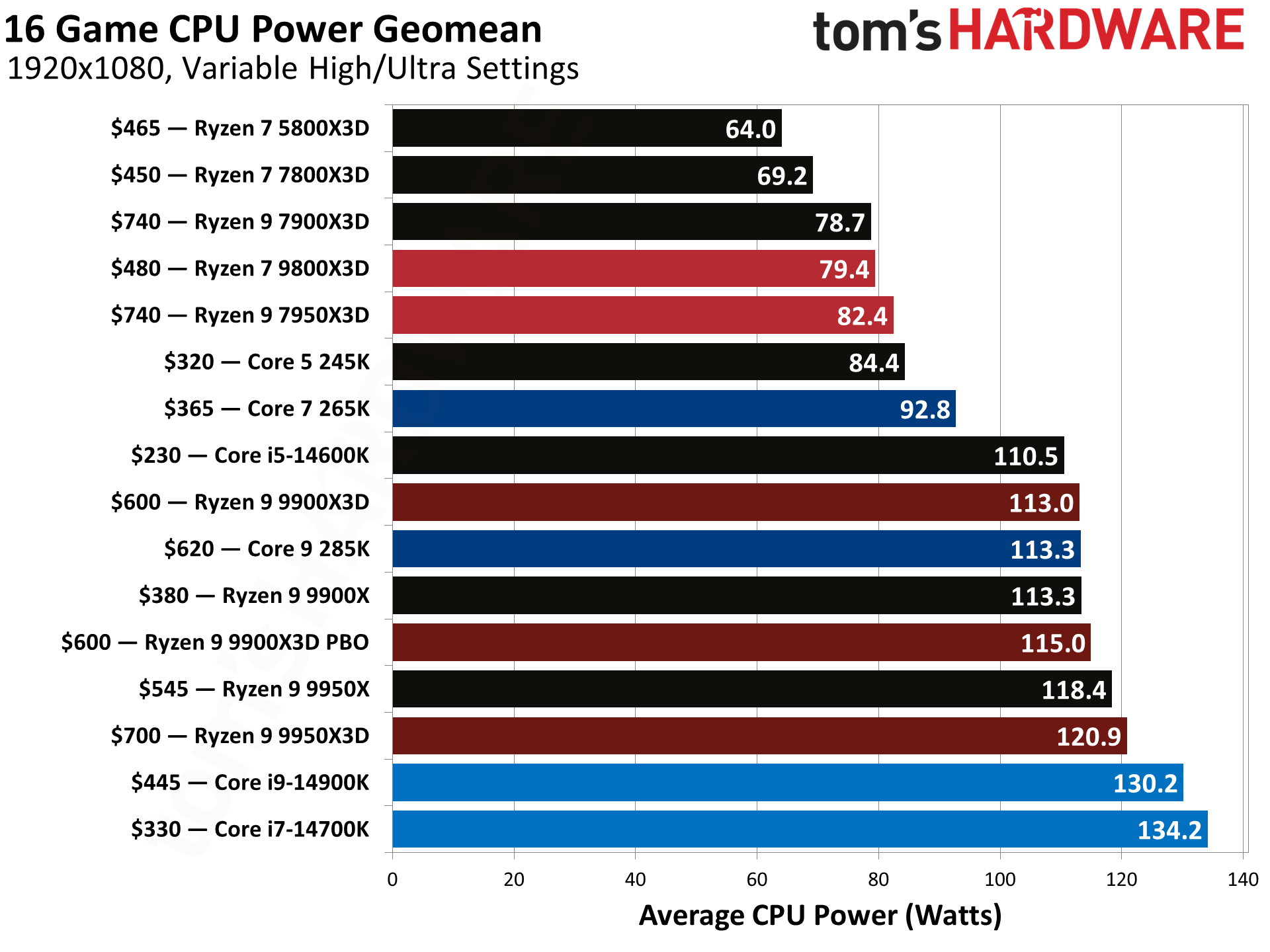
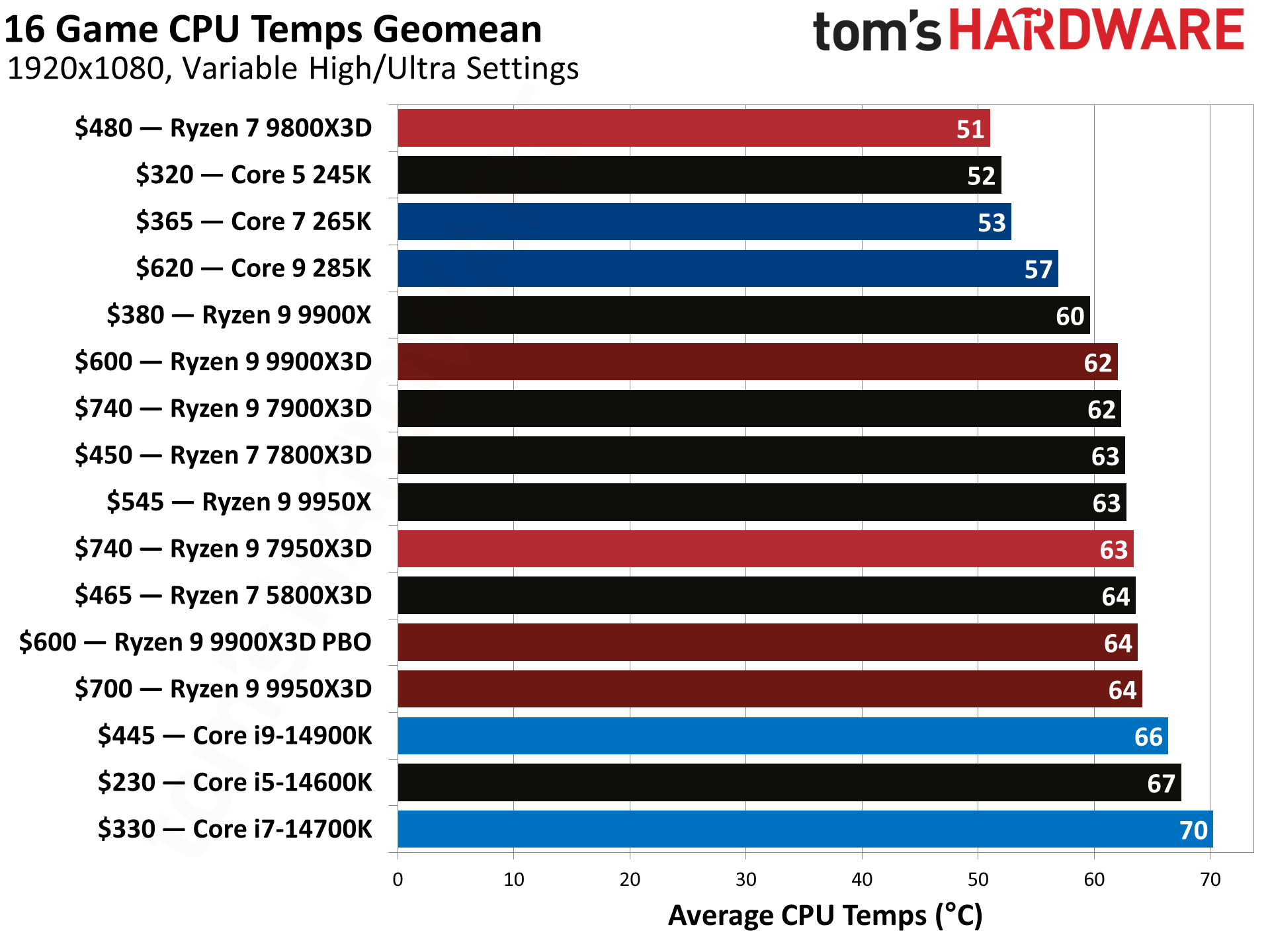
As expected, the Ryzen 9 9900X3D beats Intel's competing chips easily. The 9900X3D is 28% faster on average in 1080p gaming than Intel's current-gen Core Ultra 9 285K and 18% faster than Intel's fastest gaming chip, the previous-gen Core i9-14900K. That cements the entire Ryzen 9000X3D lineup as comfortably in the gaming performance lead over Intel's competing chips. However, the Core i9-14900K costs $155 (26%) less for roughly 15% less performance in gaming, giving it some room as a value alternative — albeit with higher power use that can eat into the pricing difference over time.
For those interested solely in gaming, the Ryzen 9 9800X3D remains the best value in the X3D lineup — this chip costs $120 less than the 9900X3D but is roughly 8% faster. It's also the fastest gaming chip on the market, by the slimmest of margins against the 9950X3D. If you don't need more heavy lifting in productivity apps or don't commonly do heavy multitasking during gaming (e.g. recording, encoding on the CPU, etc.), the 9800X3D remains the best overall choice.
If you need more grunt power, the Ryzen 9 models come into focus. If you look solely at the fps-per-dollar metrics, the Ryzen 9 9900X3D has a slight lead over the 16-core 9950X3D; the 9950X3D is 7.3% faster but costs 17% more, skewing the calculation in the 9900X3D's favor. However, the 9950X3D does hold the performance lead over the 9900X3D.
The Ryzen 9 9950X3D and Ryzen 7 9800X3D are both faster in gaming because AMD's thread-targeting mechanisms make them operate as eight-core processors during gaming, whereas the 9900X3D operates as a six-core chip. That means the 9900X3D isn't as future-proof for gaming in titles that effectively utilize heavier core/thread counts, calling into question the wisdom of spending $600 for what's essentially a six-core chip for gaming.
The difference between the two Ryzen 9 X3D processors is more important in productivity applications, especially given the target market and the slim pricing difference. As you'll see on the following page, there's a much larger difference in heavily-threaded applications that makes it hard to select the 9900X3D over the 9950X3D — the latter is 27% faster in threaded applications, but only costs 17% more. If you're already willing to spend $600 for a gaming-optimized chip that's also great at productivity work, earmarking an extra $100 for the Ryzen 9 9950X3D, which is faster in both gaming and applications, is a no-brainer.
The 9900X3D is 20% faster than the comparable previous-gen Ryzen 9 7900X3D, an impressive gen-on-gen gain. It's also 12% faster than the previous-gen flagship, the Ryzen 9 7950X3D, backing up AMD's claims.
AMD has finally brought full overclockability to its X3D series, but we tested with AMD's simple auto-overclocking Precision Boost Overdrive feature (marked with 'PBO' in the chart). It delivered an imperceptible sub-1% gain in gaming, so we left that entry out of the individual game tests below. However, PBO is more impressive in the heavily threaded workloads in our productivity benchmarks, as you'll see on the following page. More targeted tuning might yield better results in gaming, but as always, your mileage will vary.
Our gaming suite is heavily skewed toward CPU-limited titles, and our selection is also very 3D V-Cache-friendly, though not all games will benefit equally. The competition between AMD and Intel chips can vary based on the title (particularly with X3D models) and the GPU you use. It's best to make an informed decision based on the types of games you frequently play, so be sure to check out our individual game tests below. (Our lab isn't as temperature-controlled as we would like, so consider the gaming temperature measurements a rough guide.)
The results below are very repetitive, so we'll skip most commentary on the individual titles. We've also included AMD's benchmarks with a broader range of 40 titles at the end of this page to provide a more balanced view of the impact of 3D V-Cache in some titles that don't benefit from the extra L3 capacity.
A Plague Tale: Requiem Benchmarks
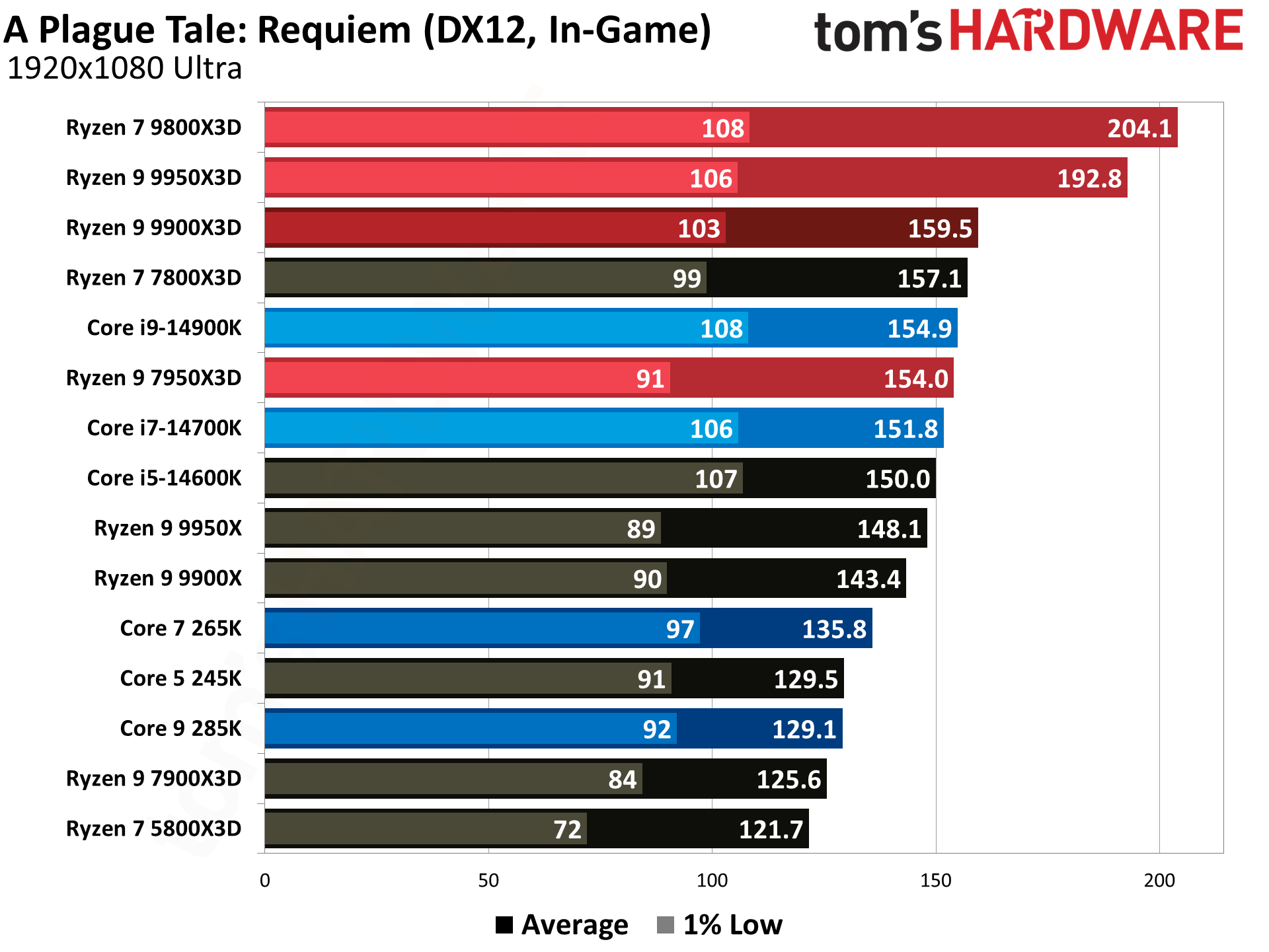
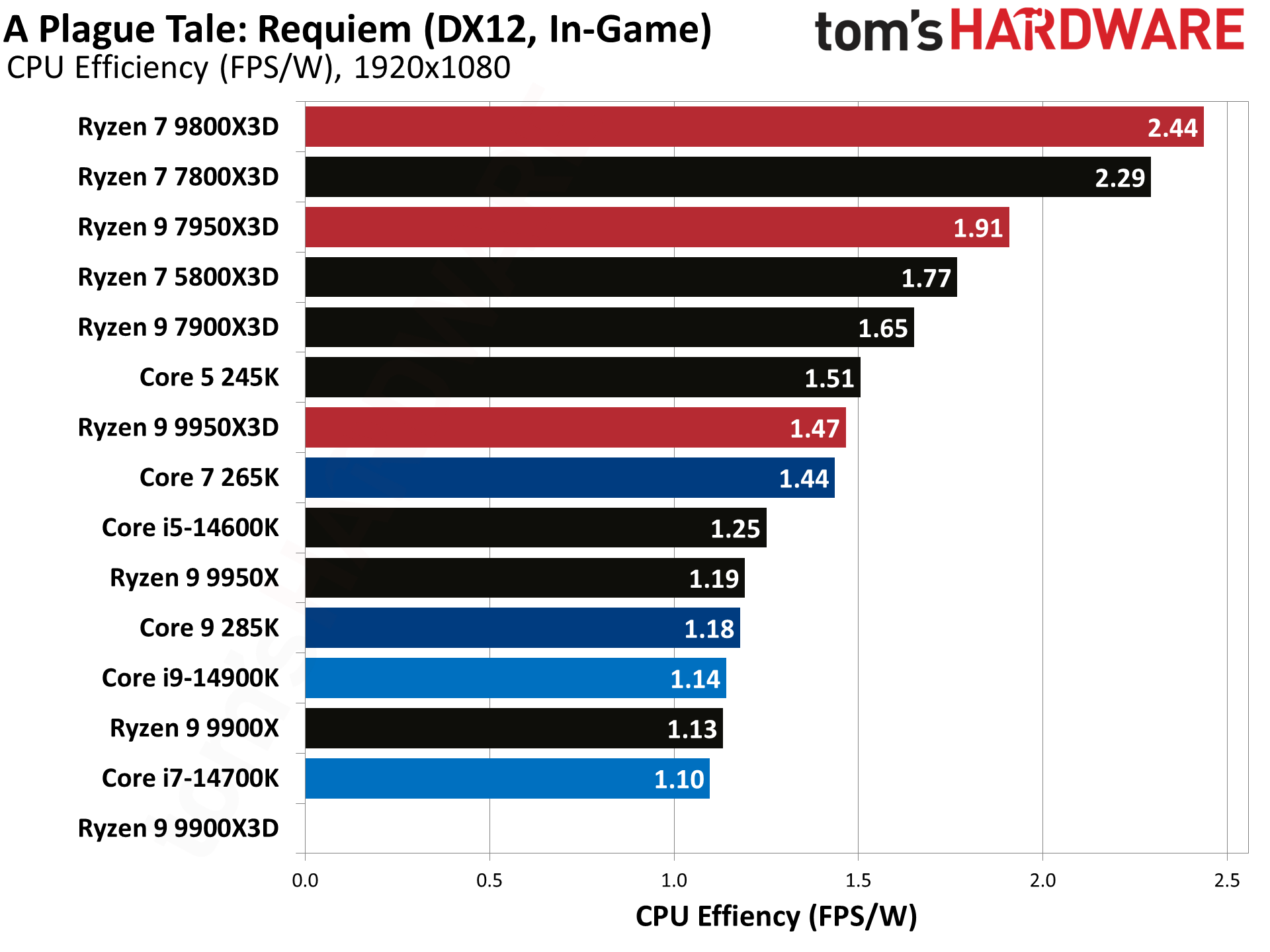
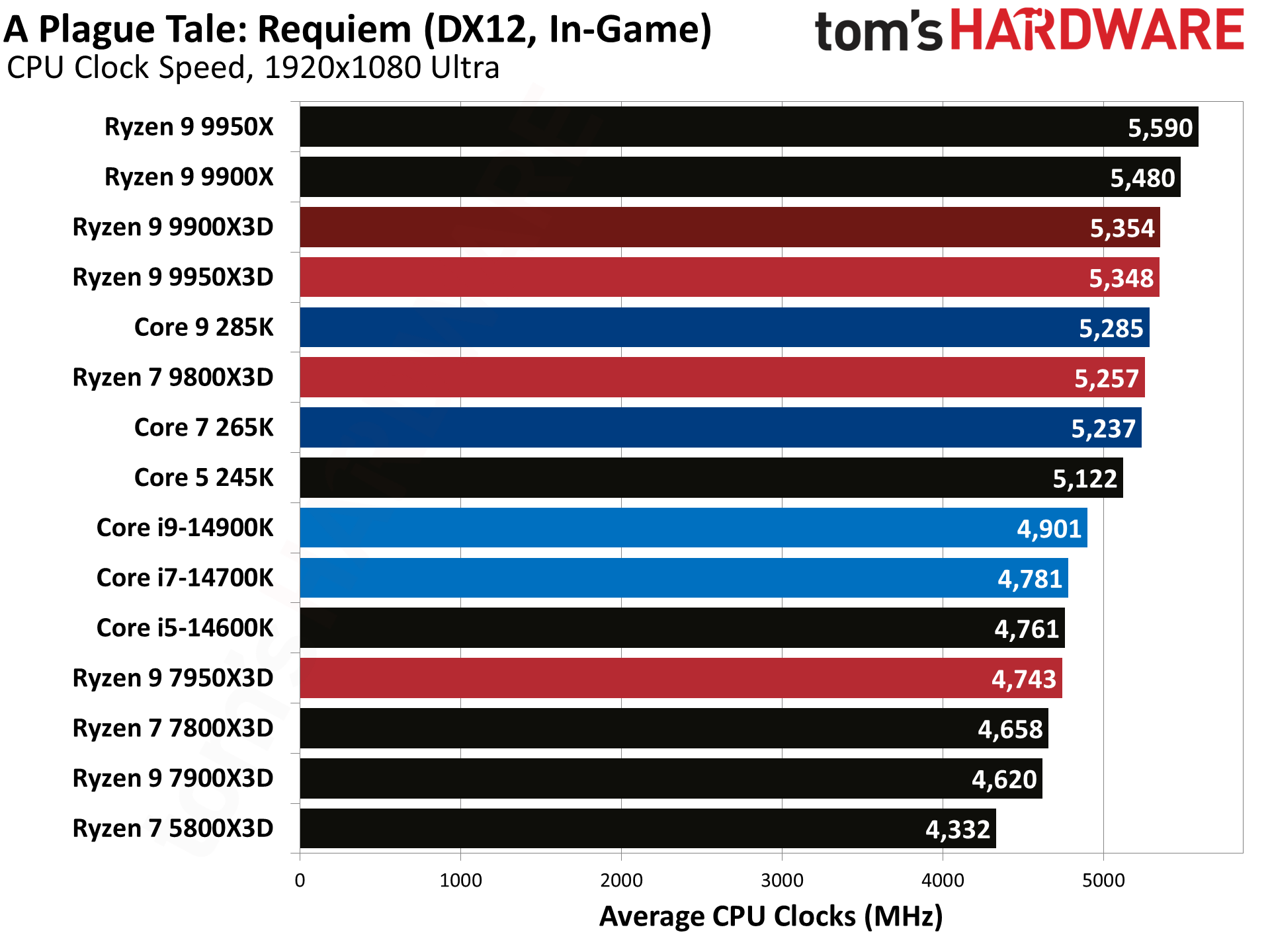
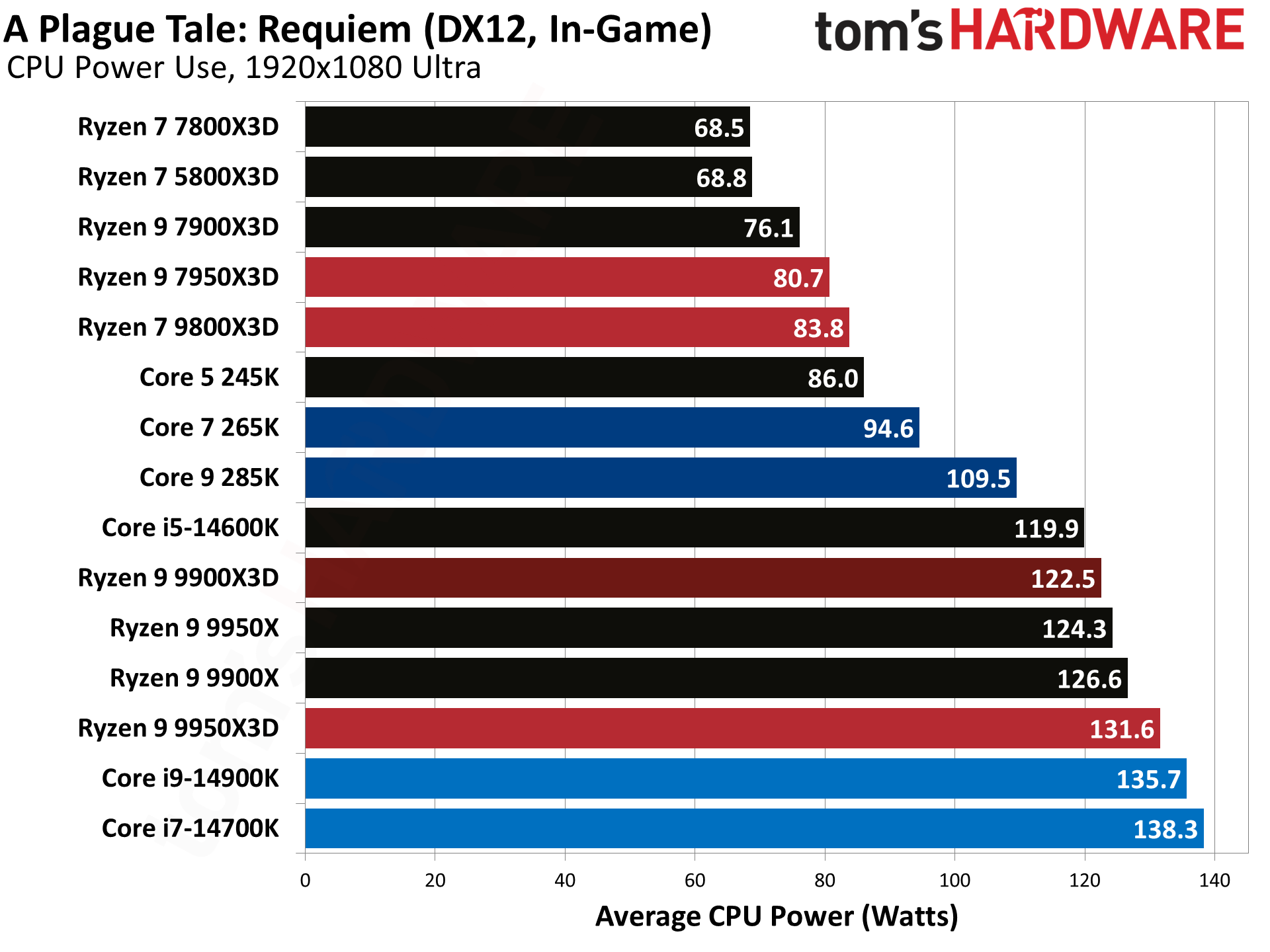
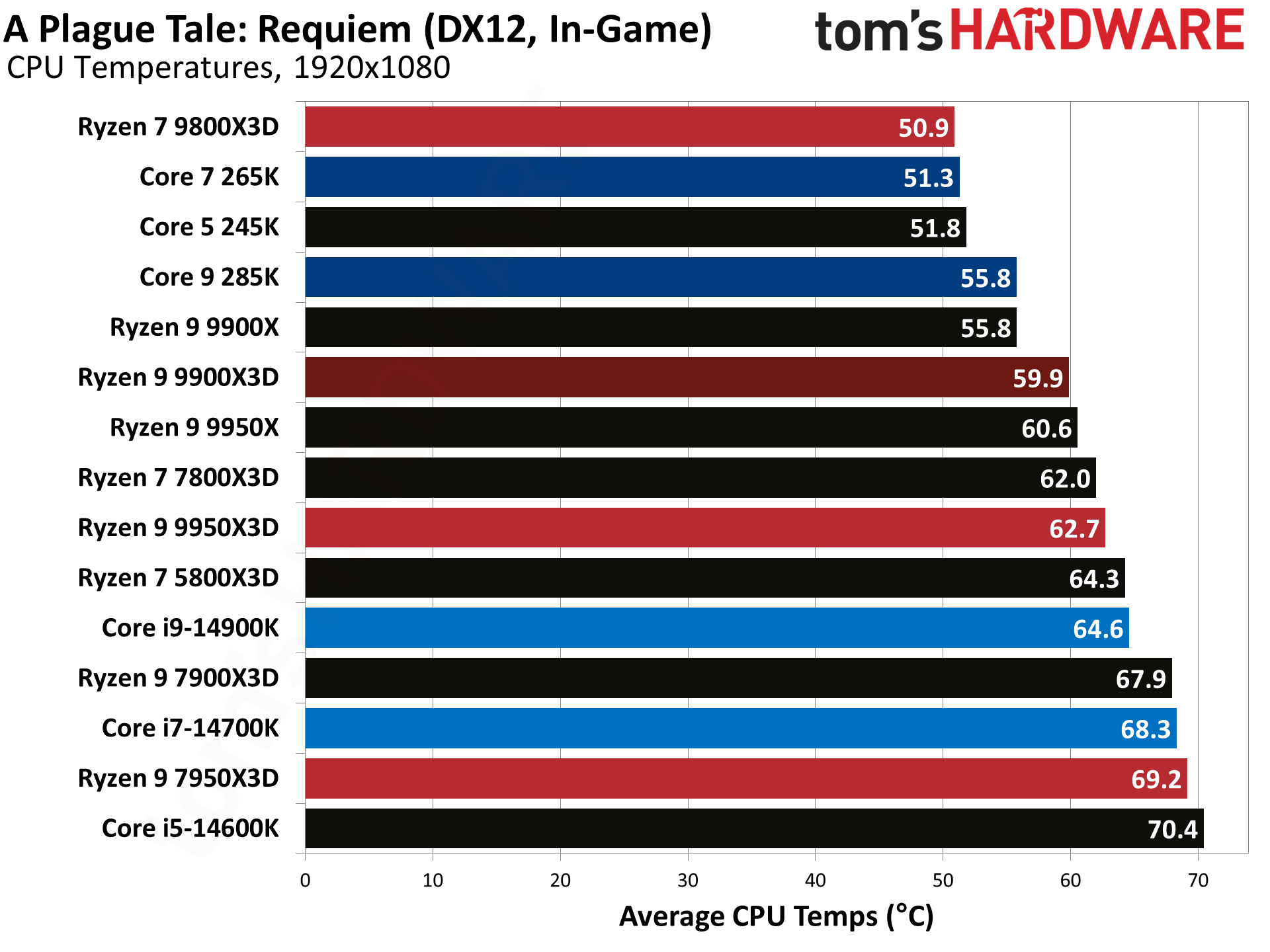
This is one of the bigger deltas in favor of AMD's other chips. The 9900X3D places third, but it's only barely faster than the prior gen 7800X3D.
Baldur's Gate 3 Benchmarks
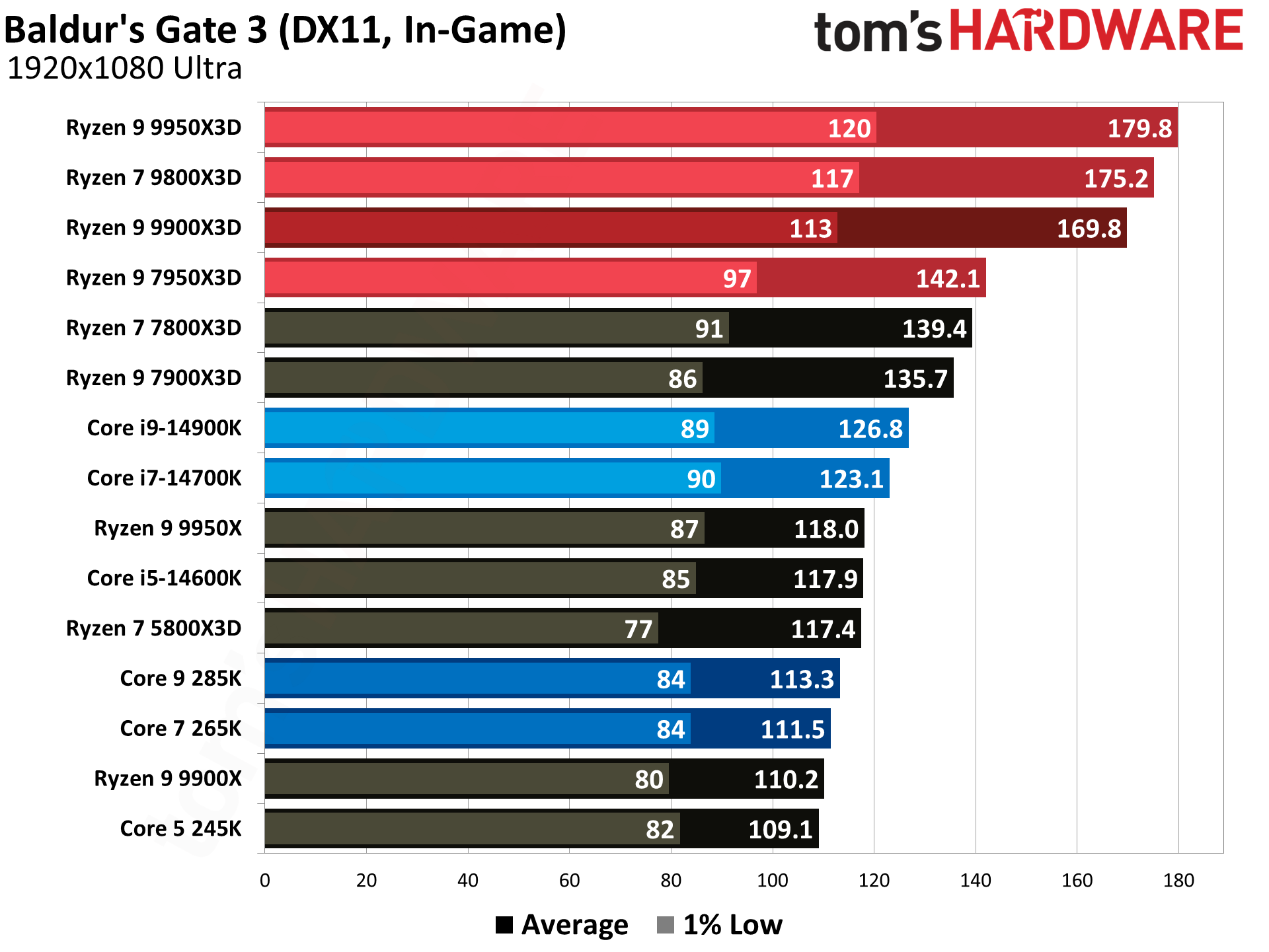
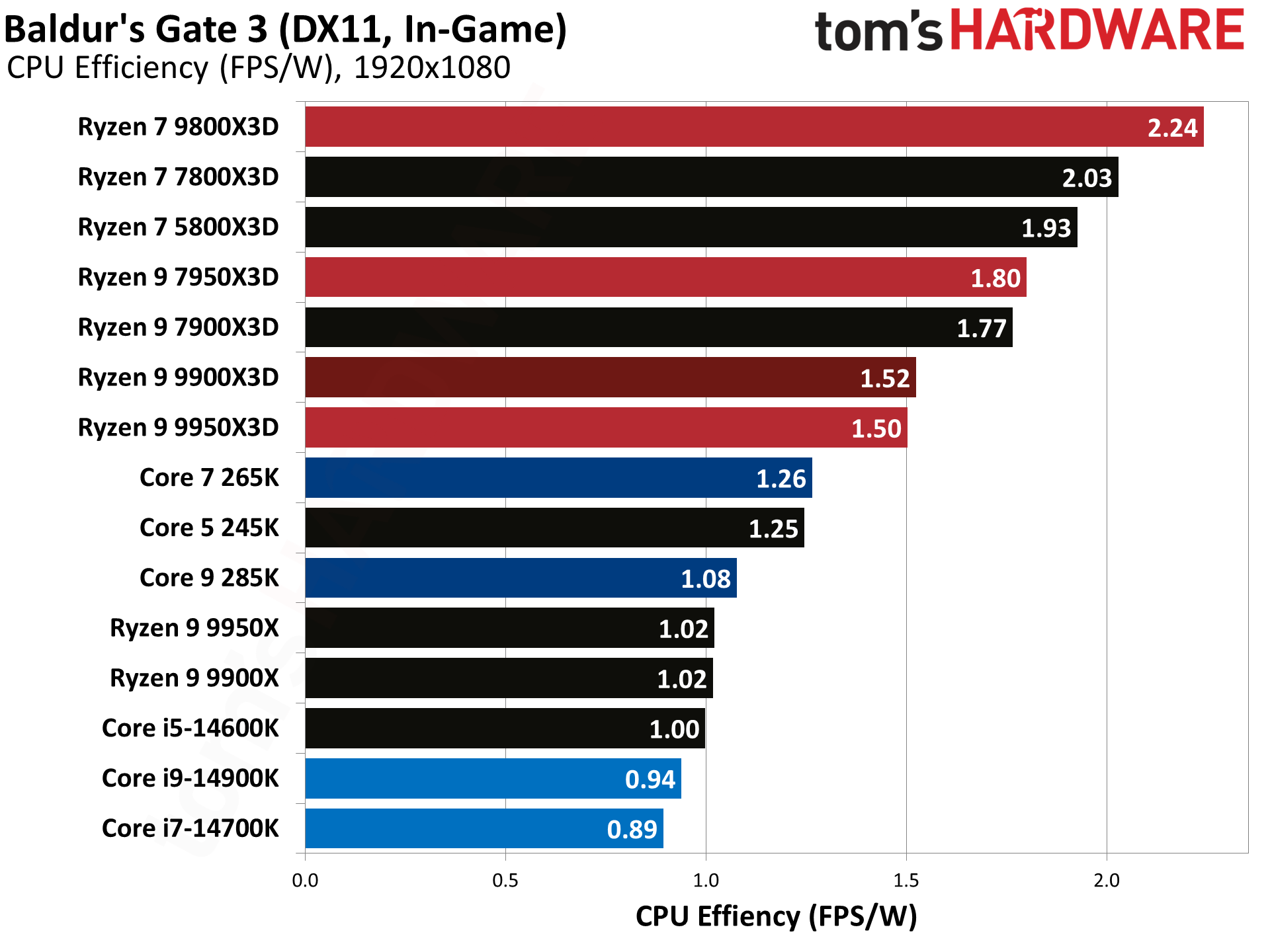

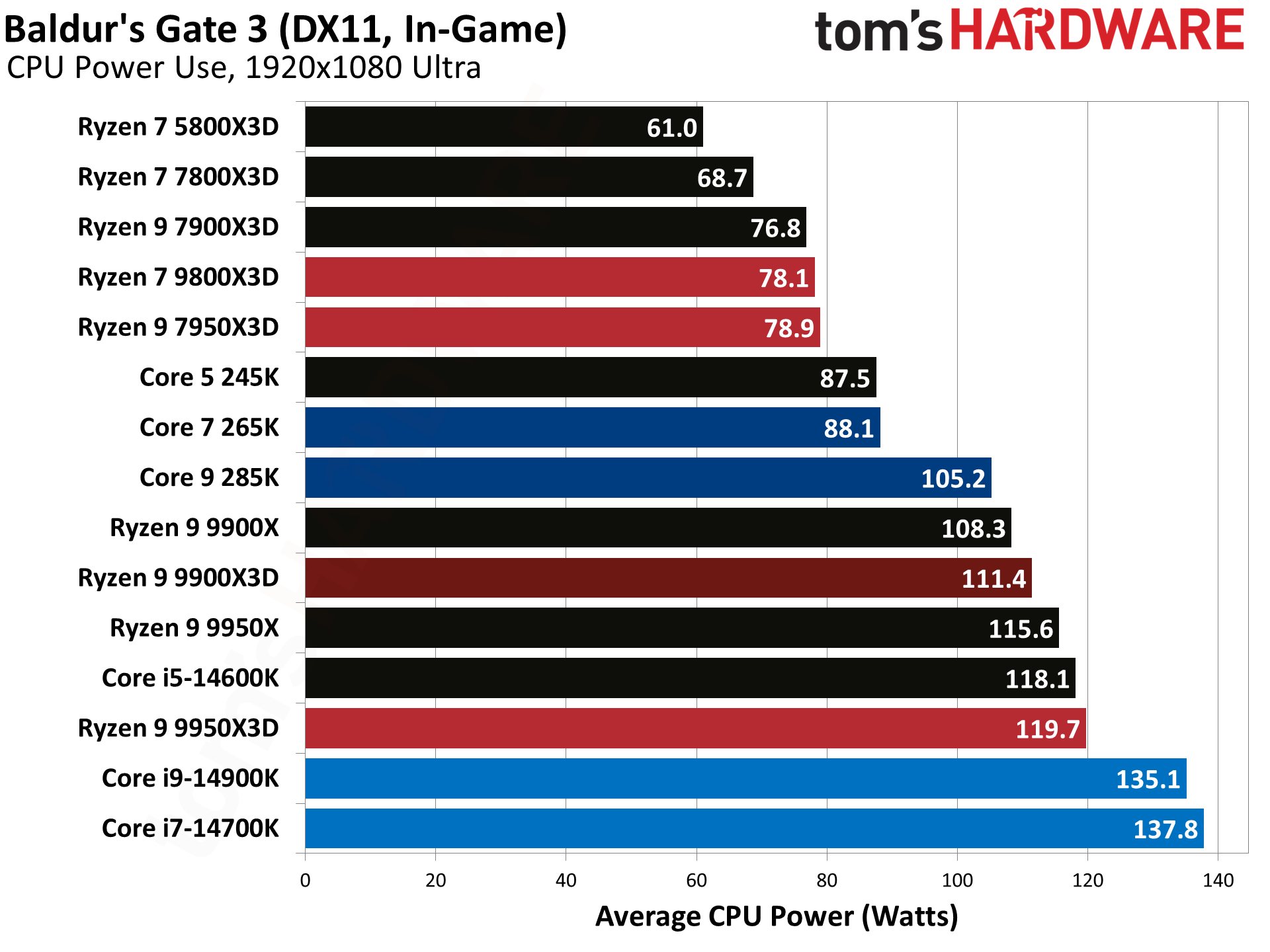
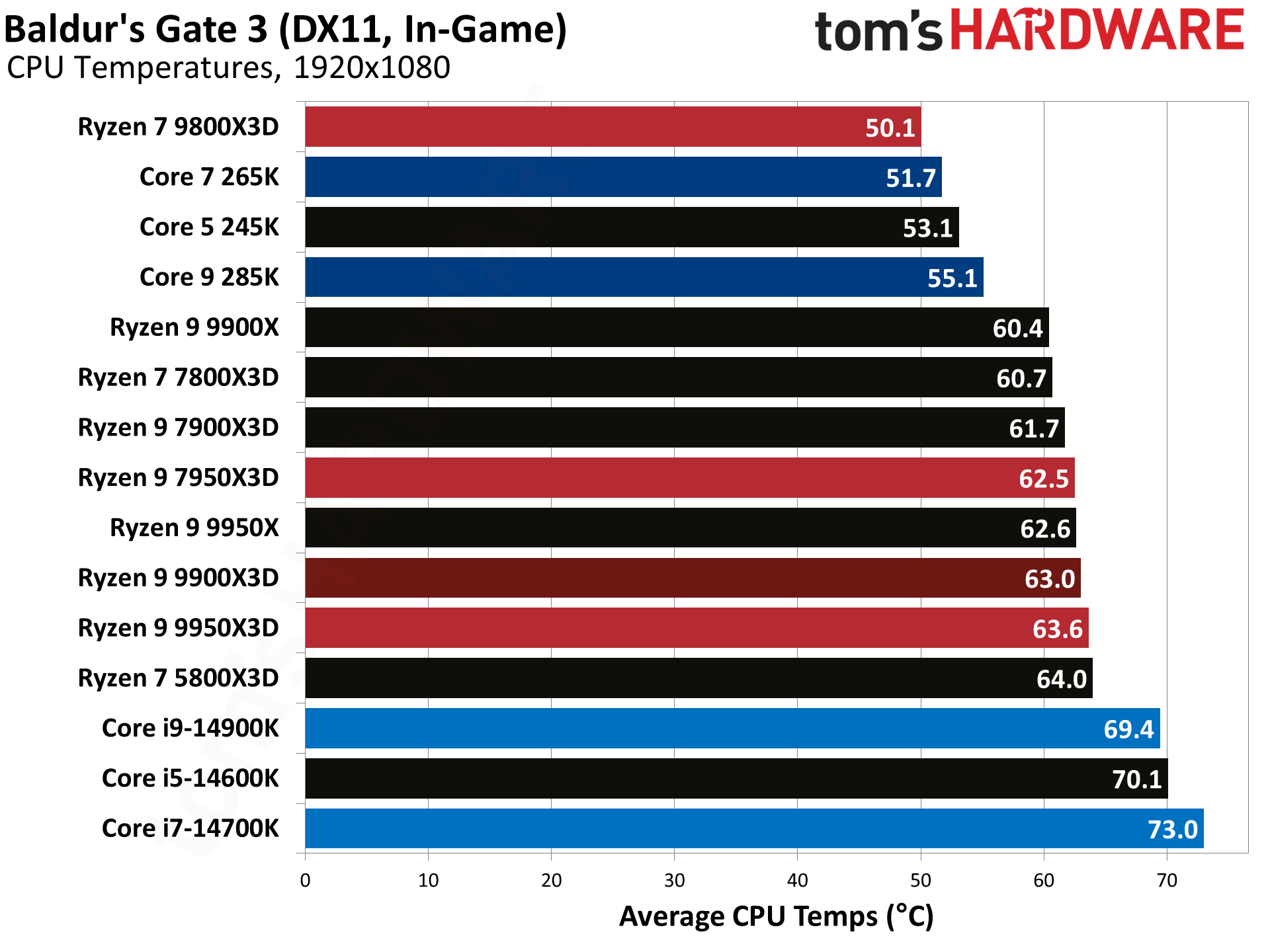
Cyberpunk 2077 Benchmarks
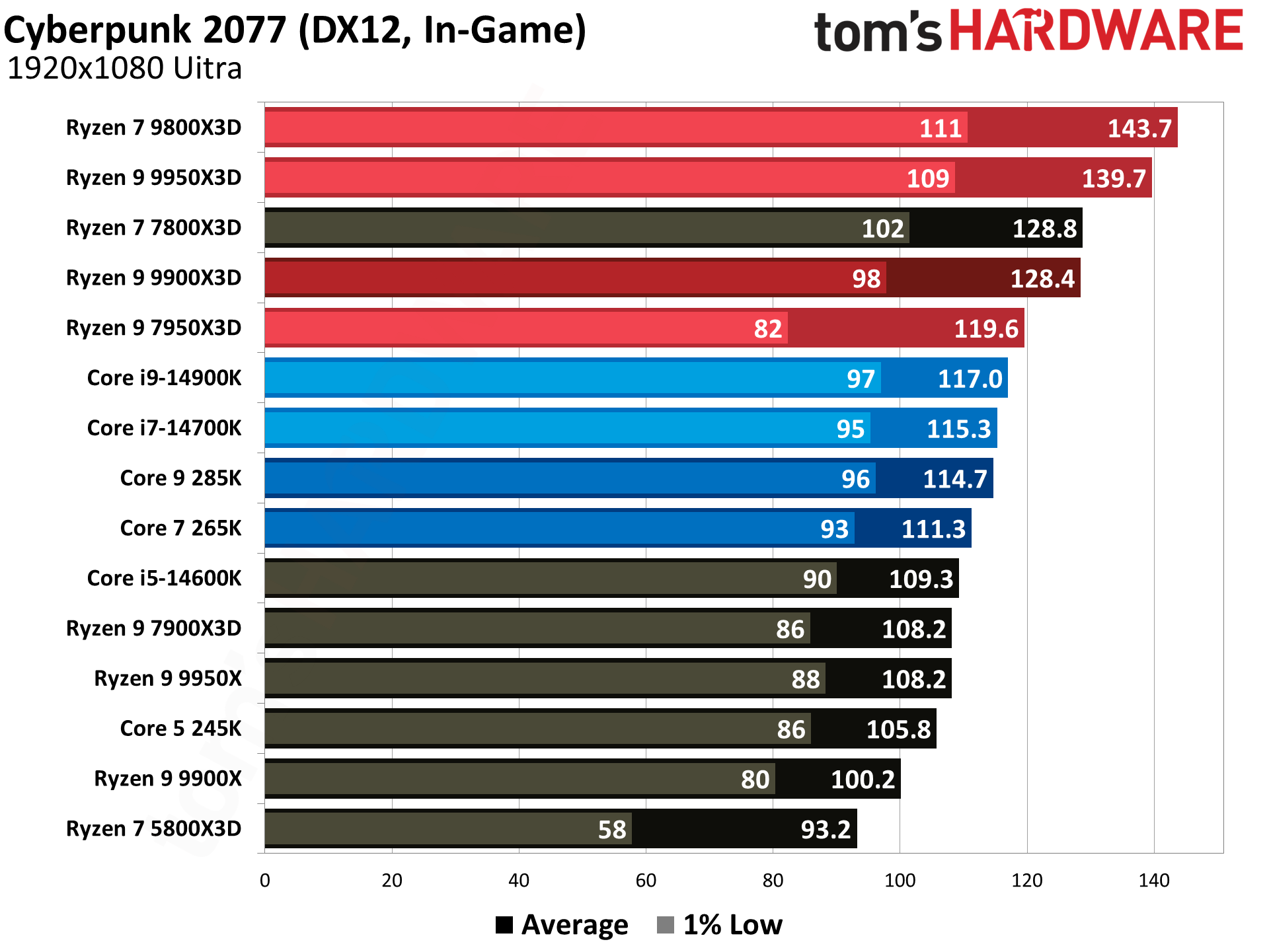
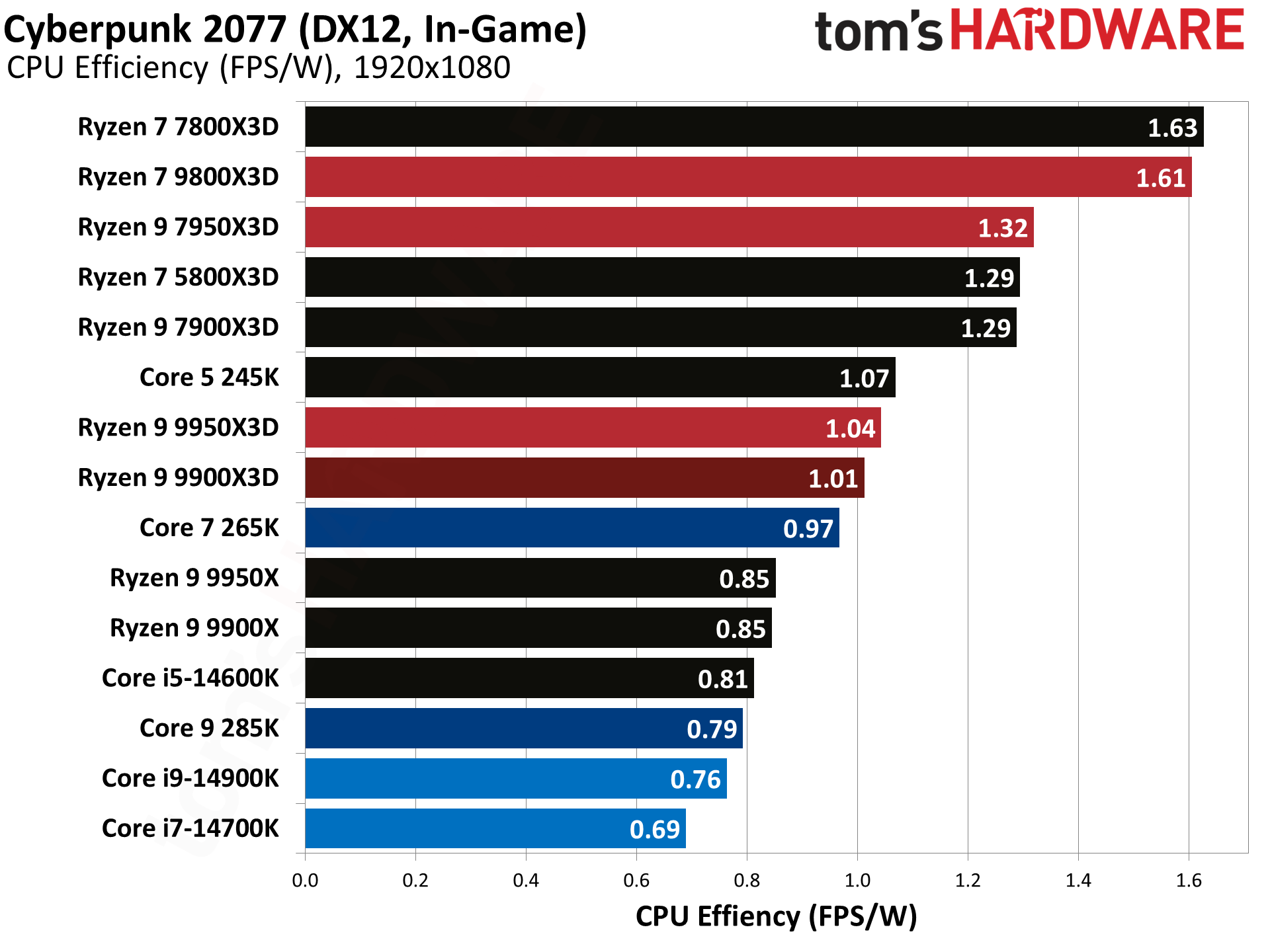
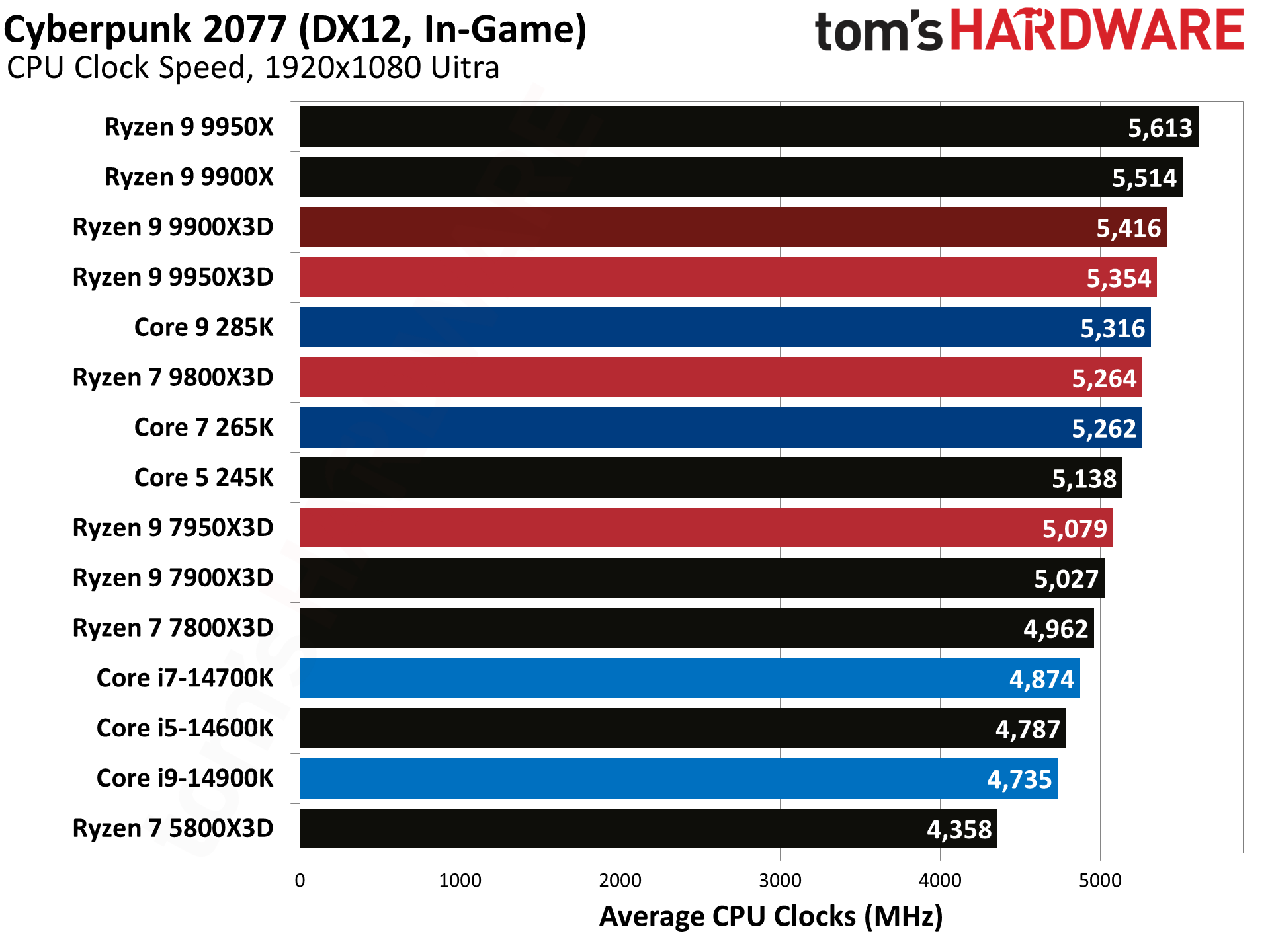
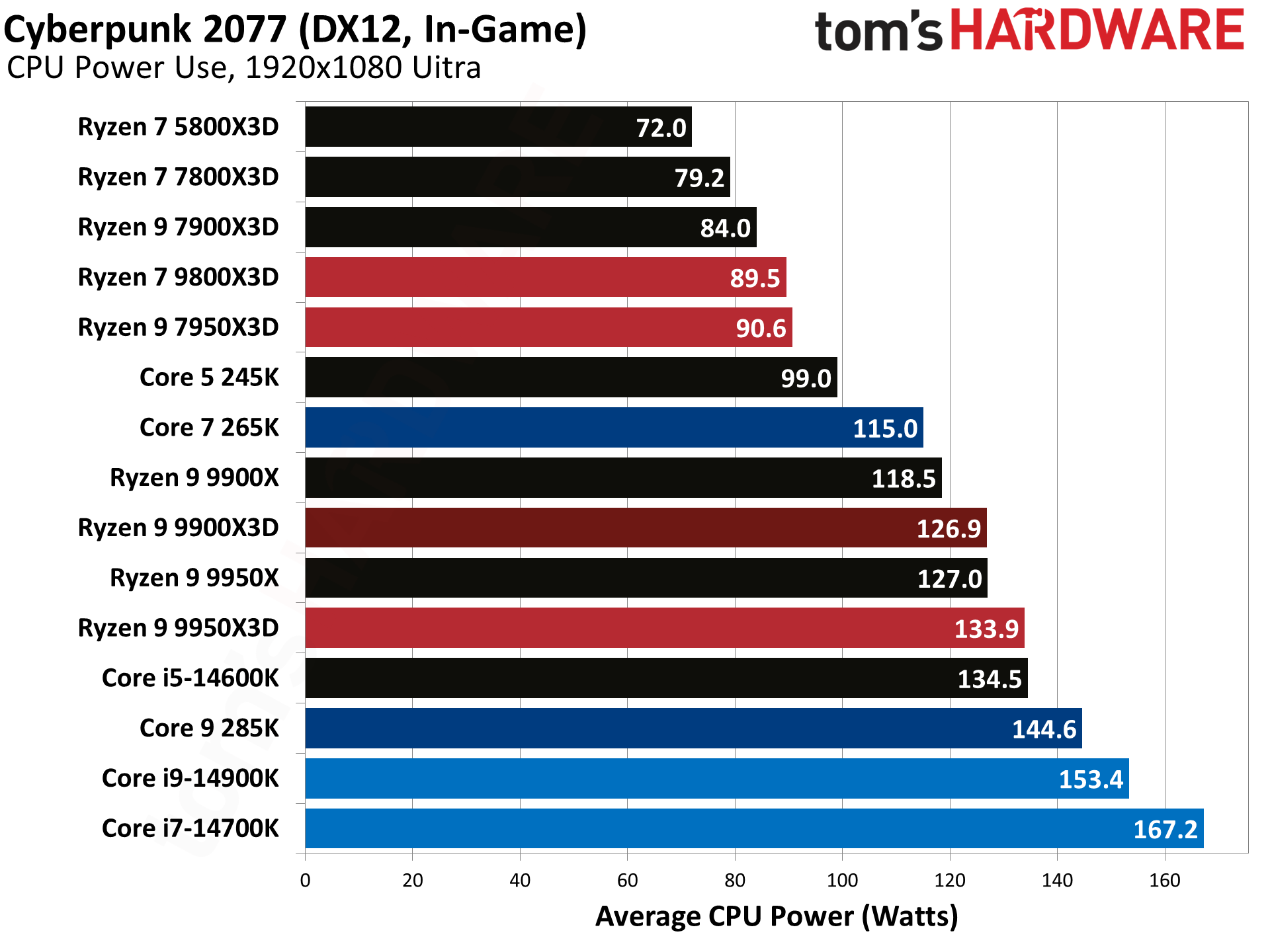
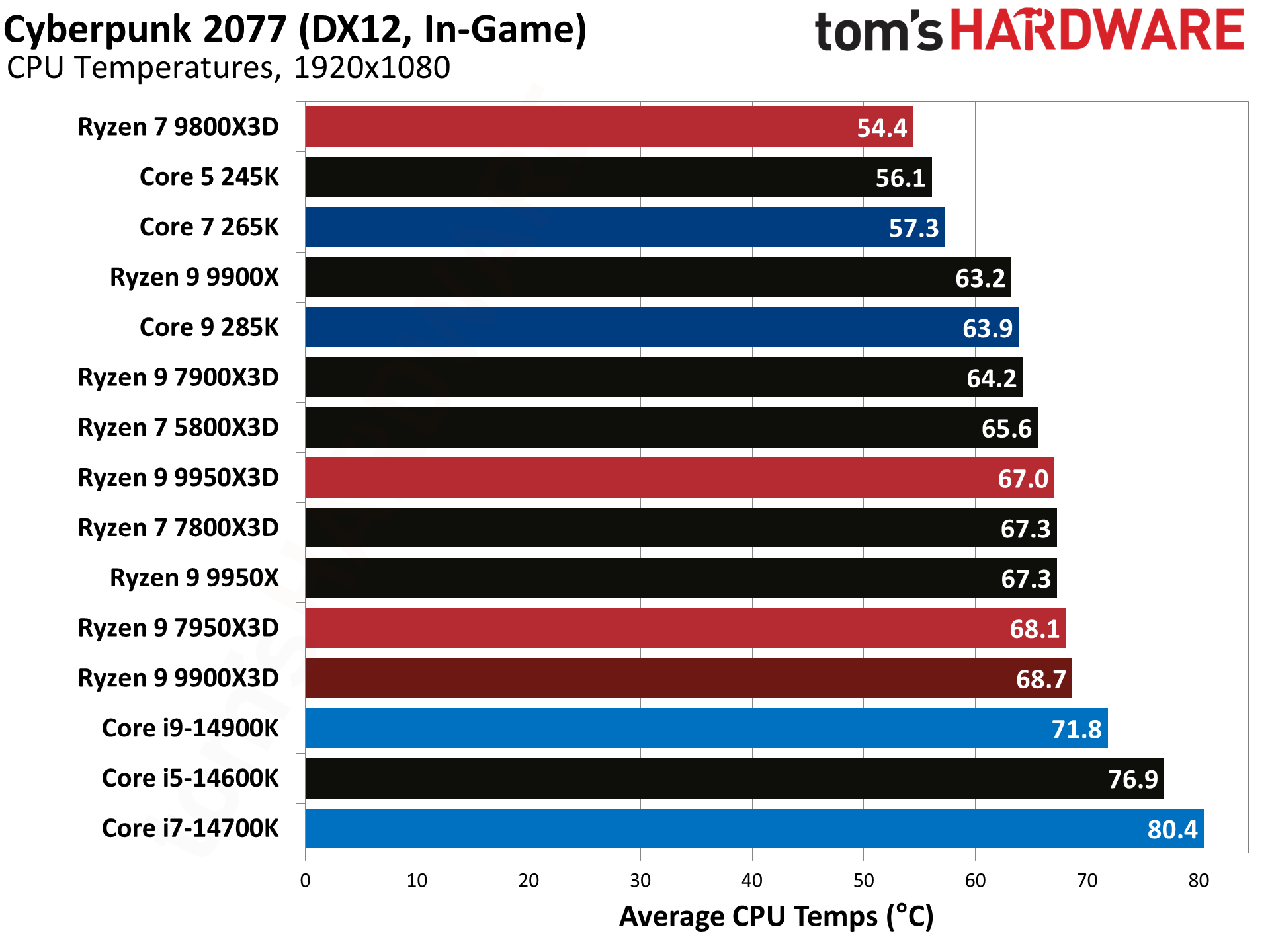
Cyberpunk 2077 can be an incredibly GPU-heavy game with ray tracing, so we're opting for the more CPU-constrained ultra (non-RT) settings without upscaling. Note that none of our CPU gaming tests have upscaling of any form enabled.
F1 2024 Benchmarks
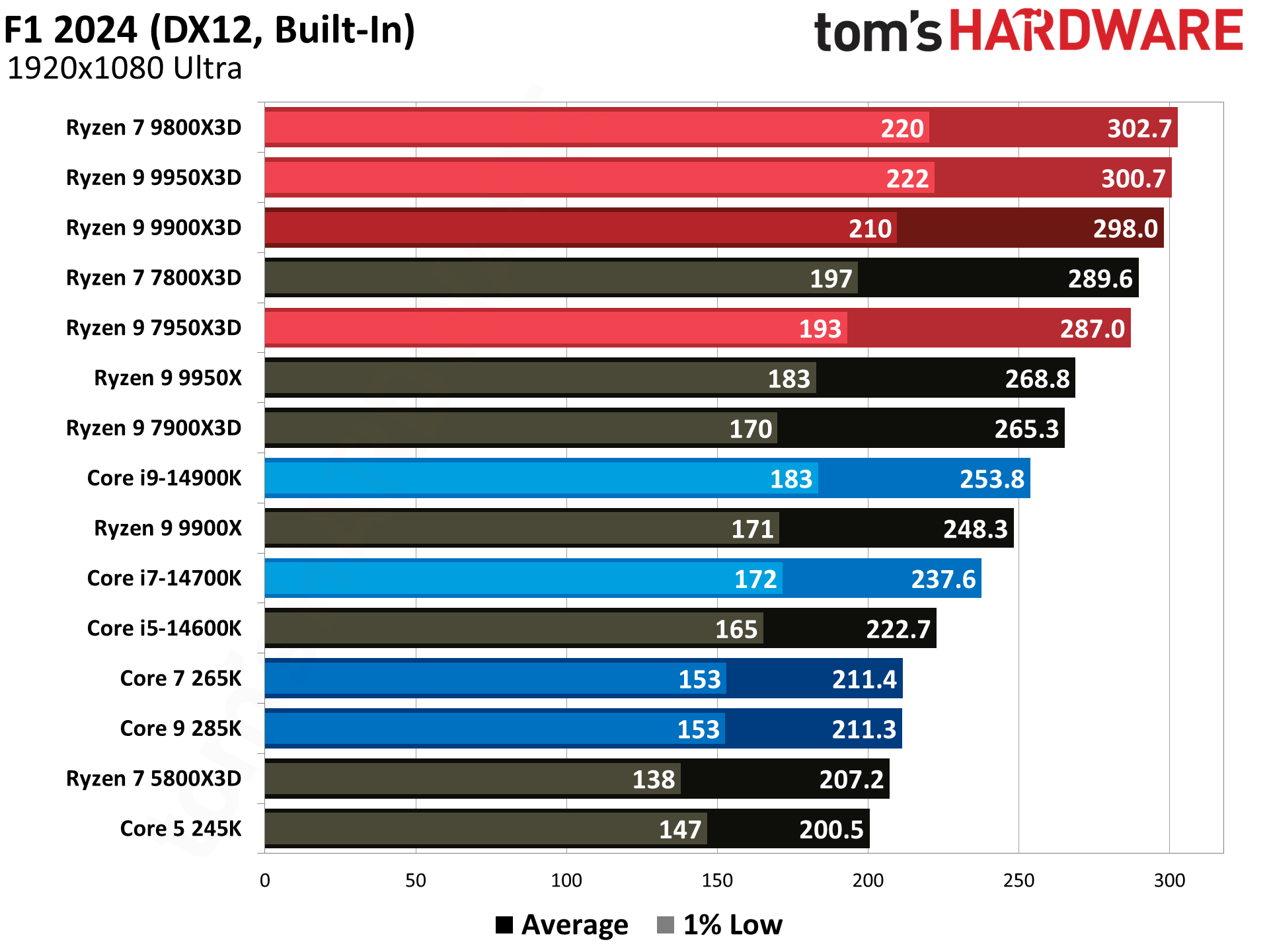
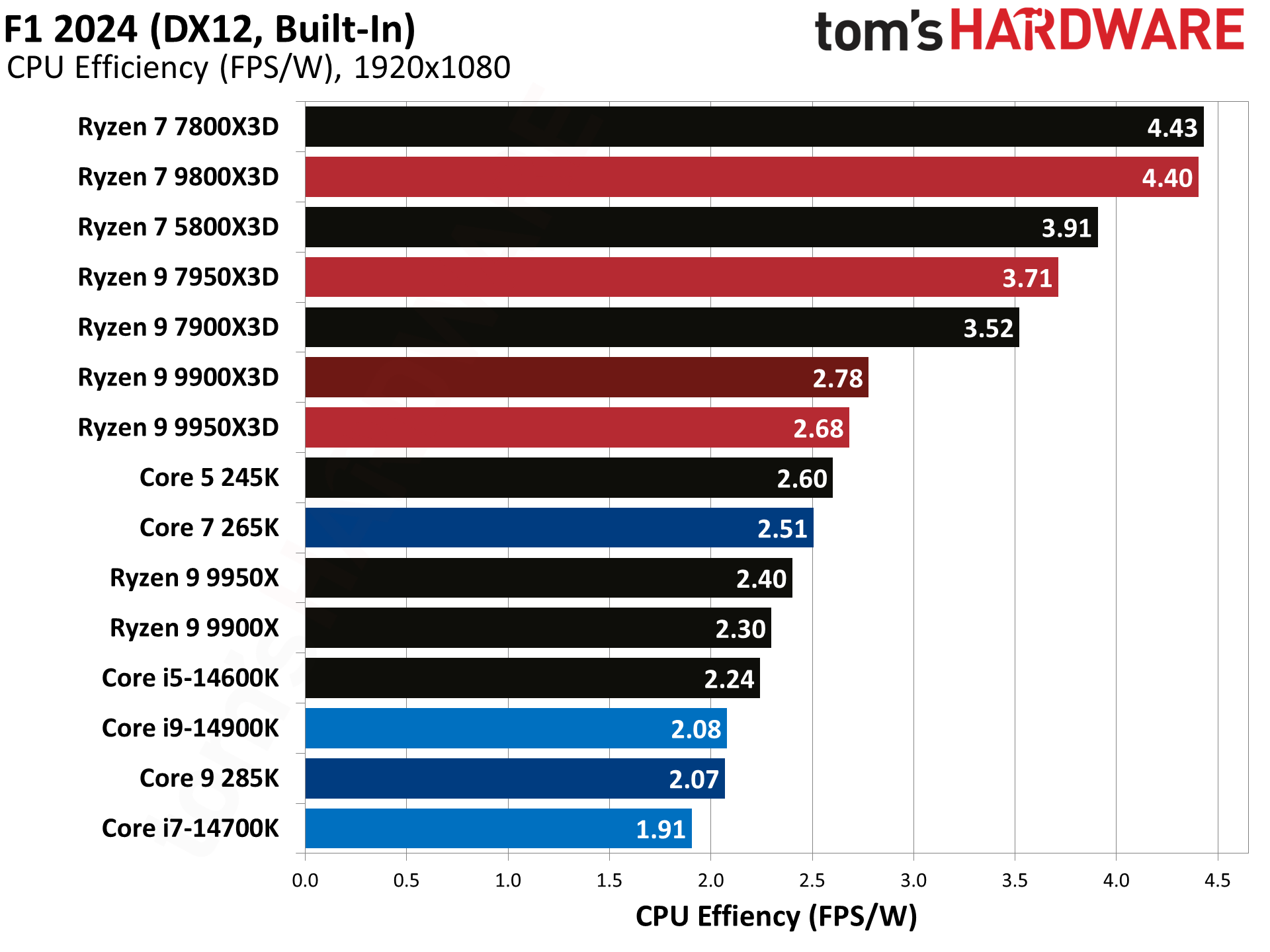
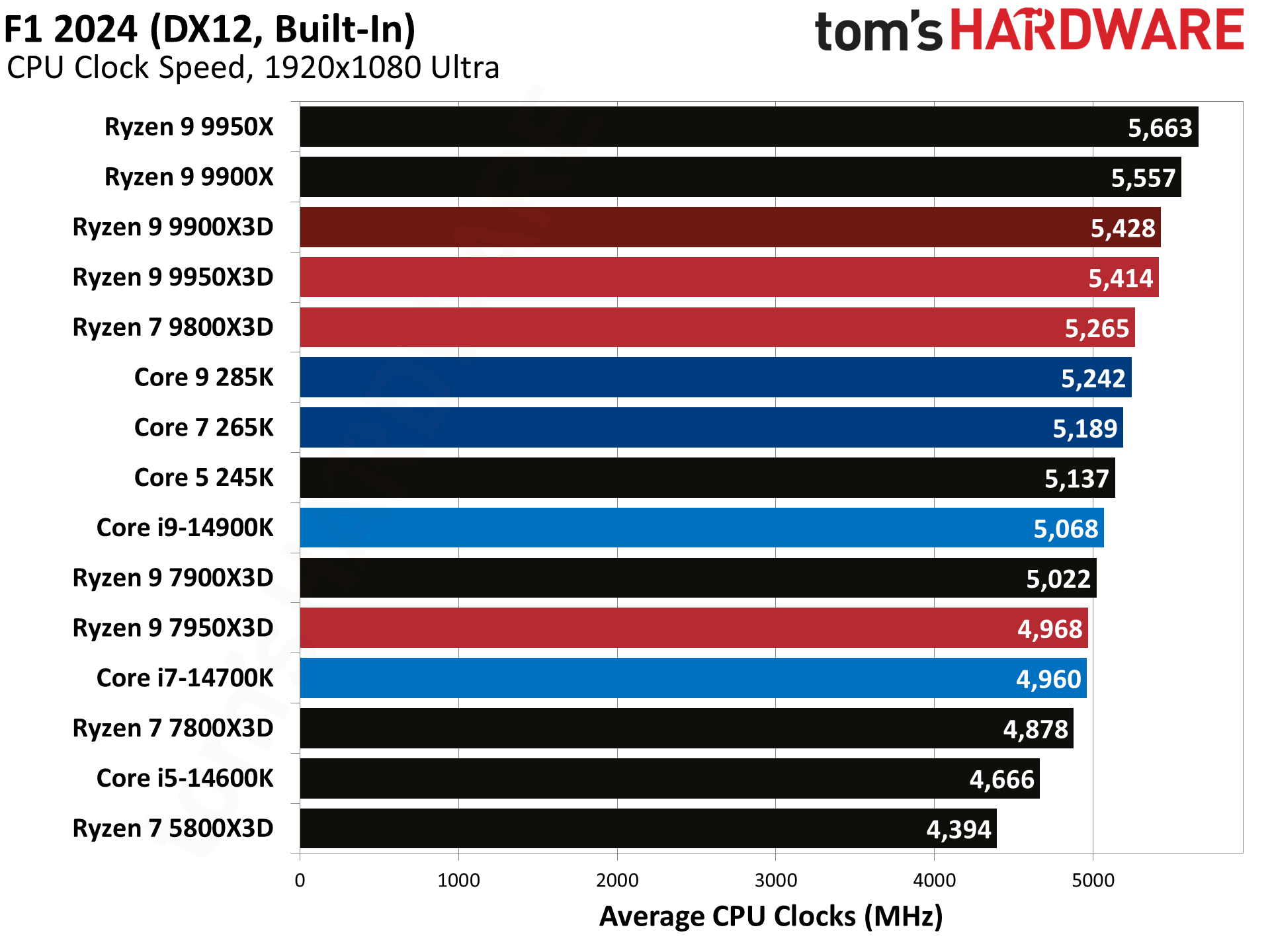
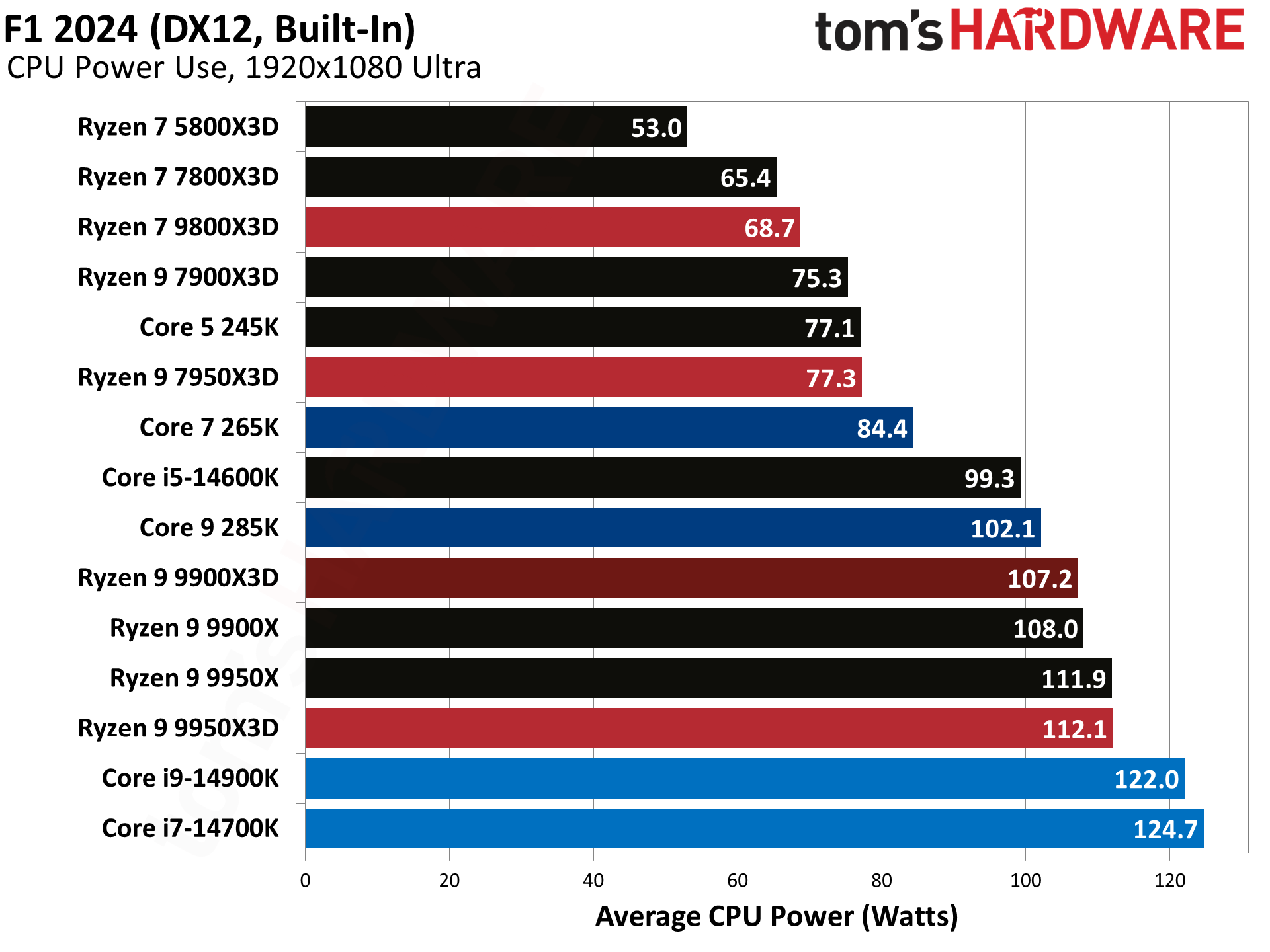
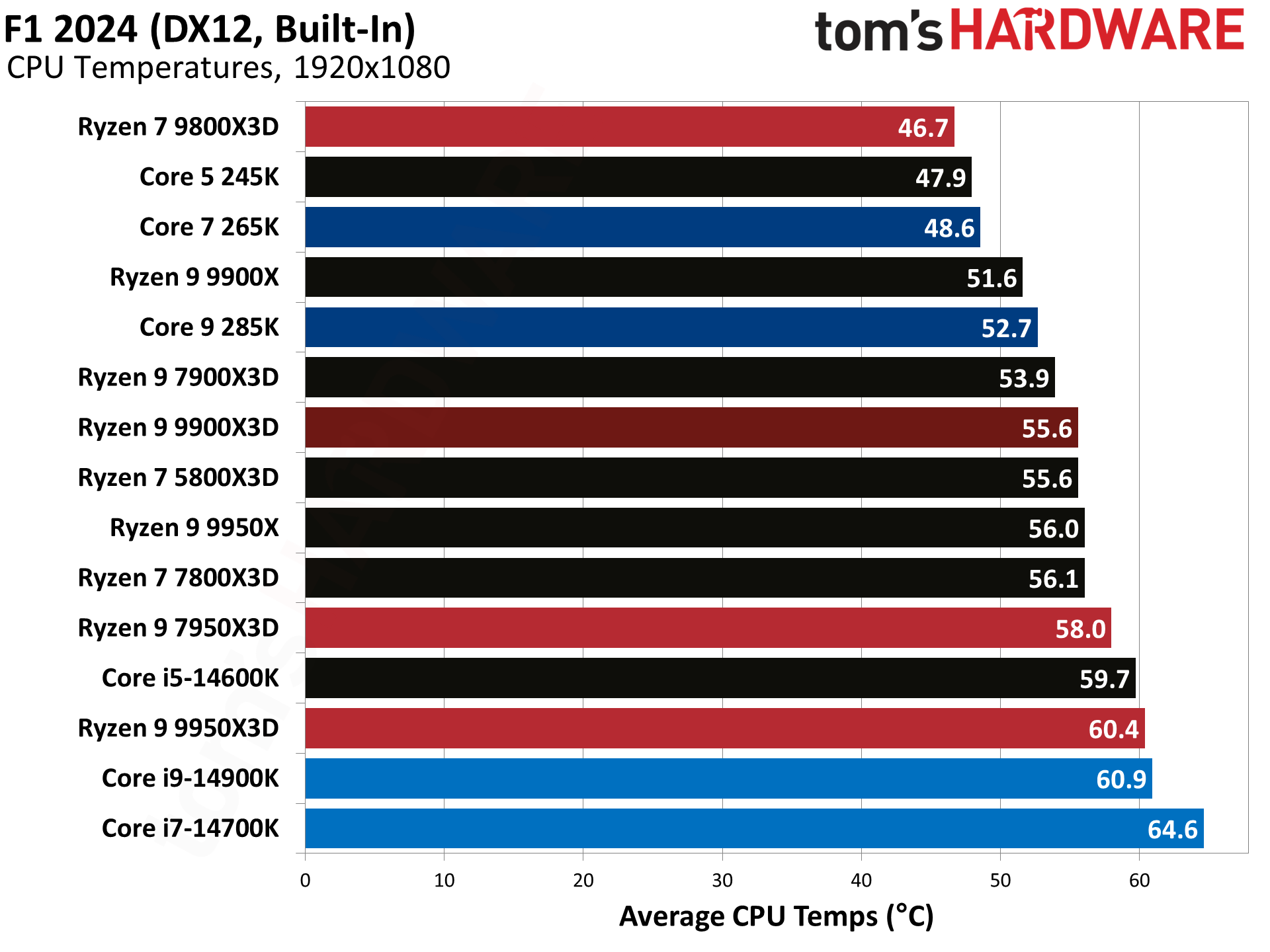
We tested F1 24 with the ultra preset, which does enable some RT effects. The game is relatively lightweight compared to other games, and we're still hitting 200+ FPS on most CPUs.
Far Cry 6 Benchmarks
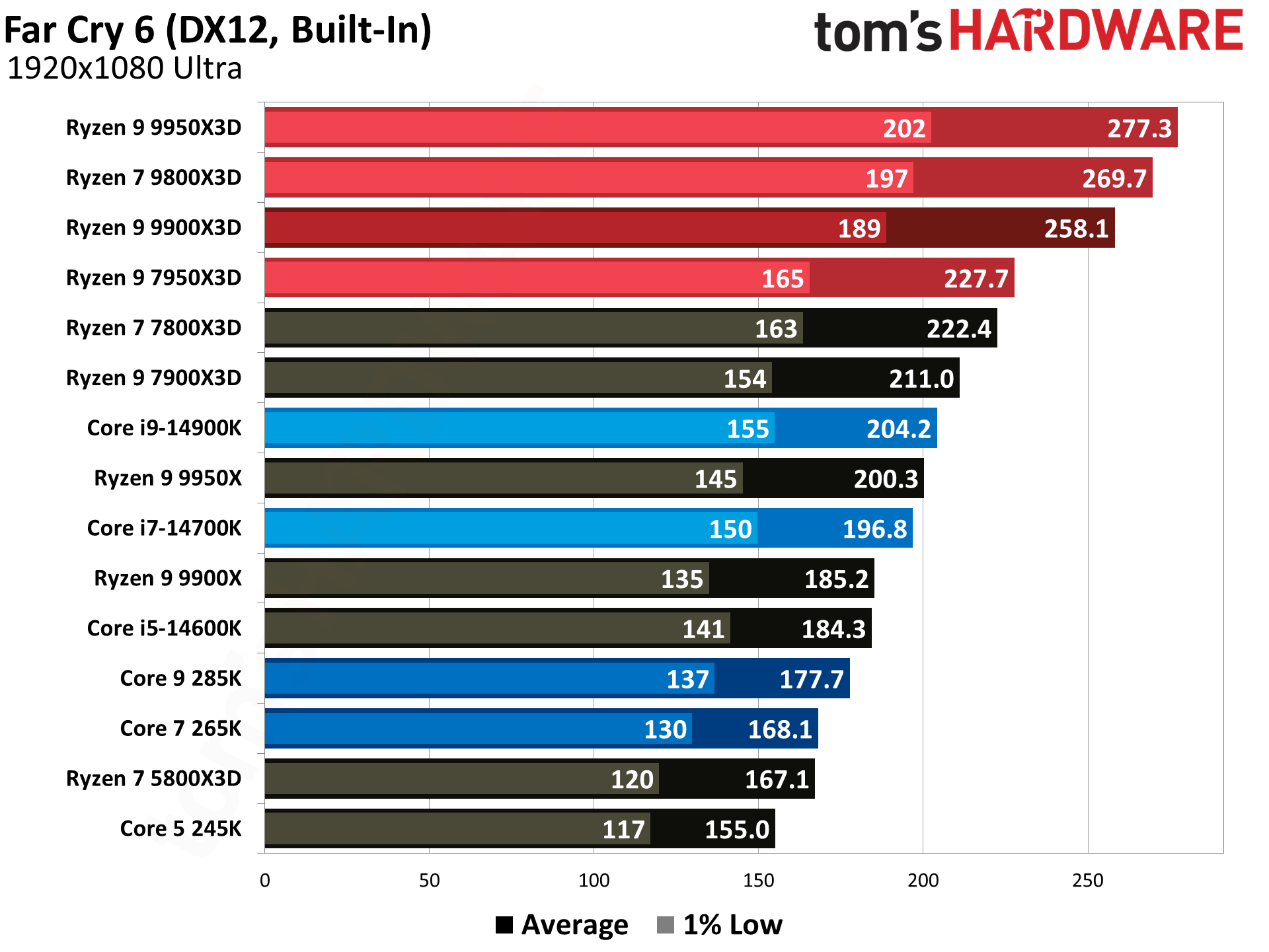
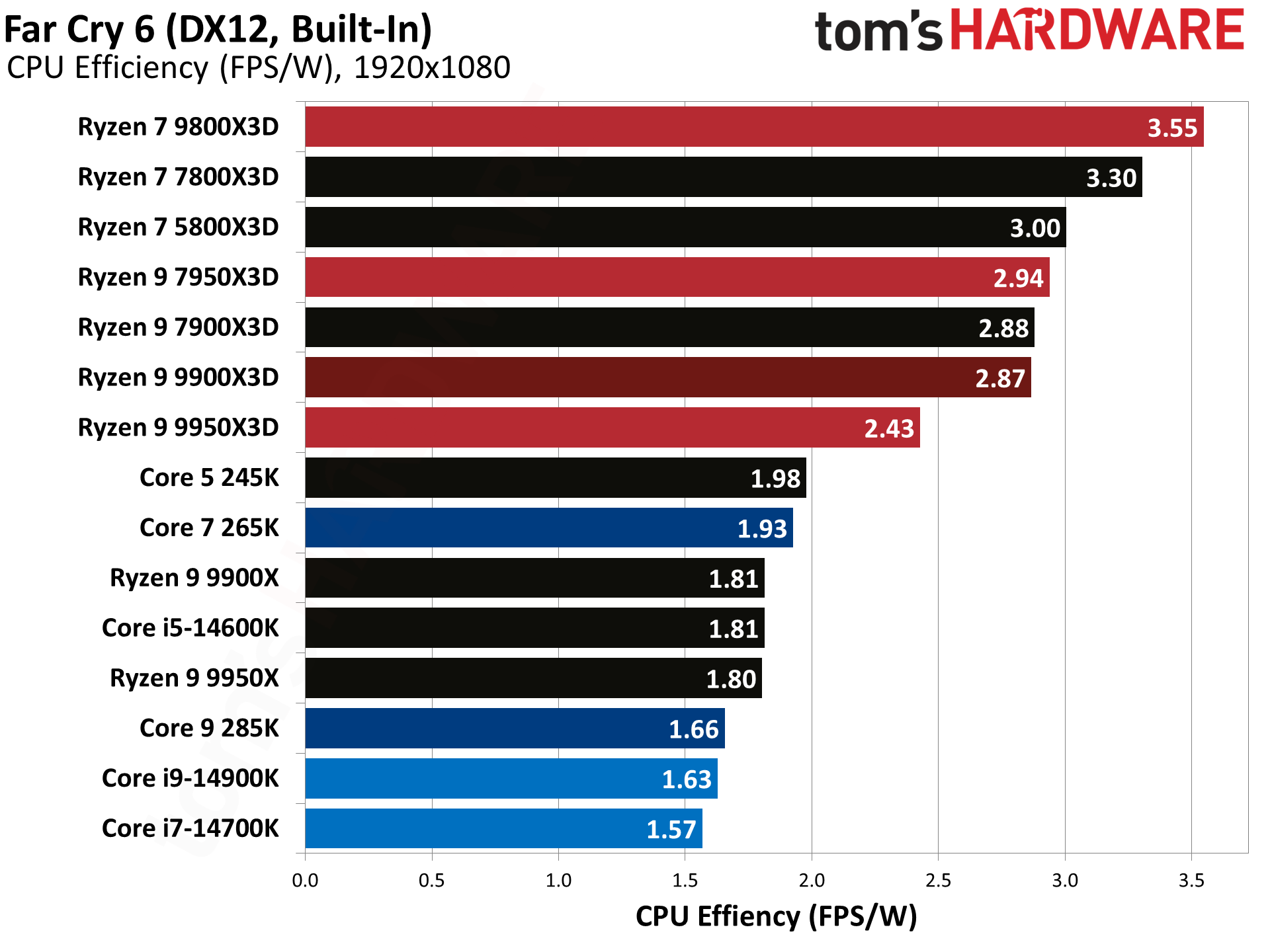
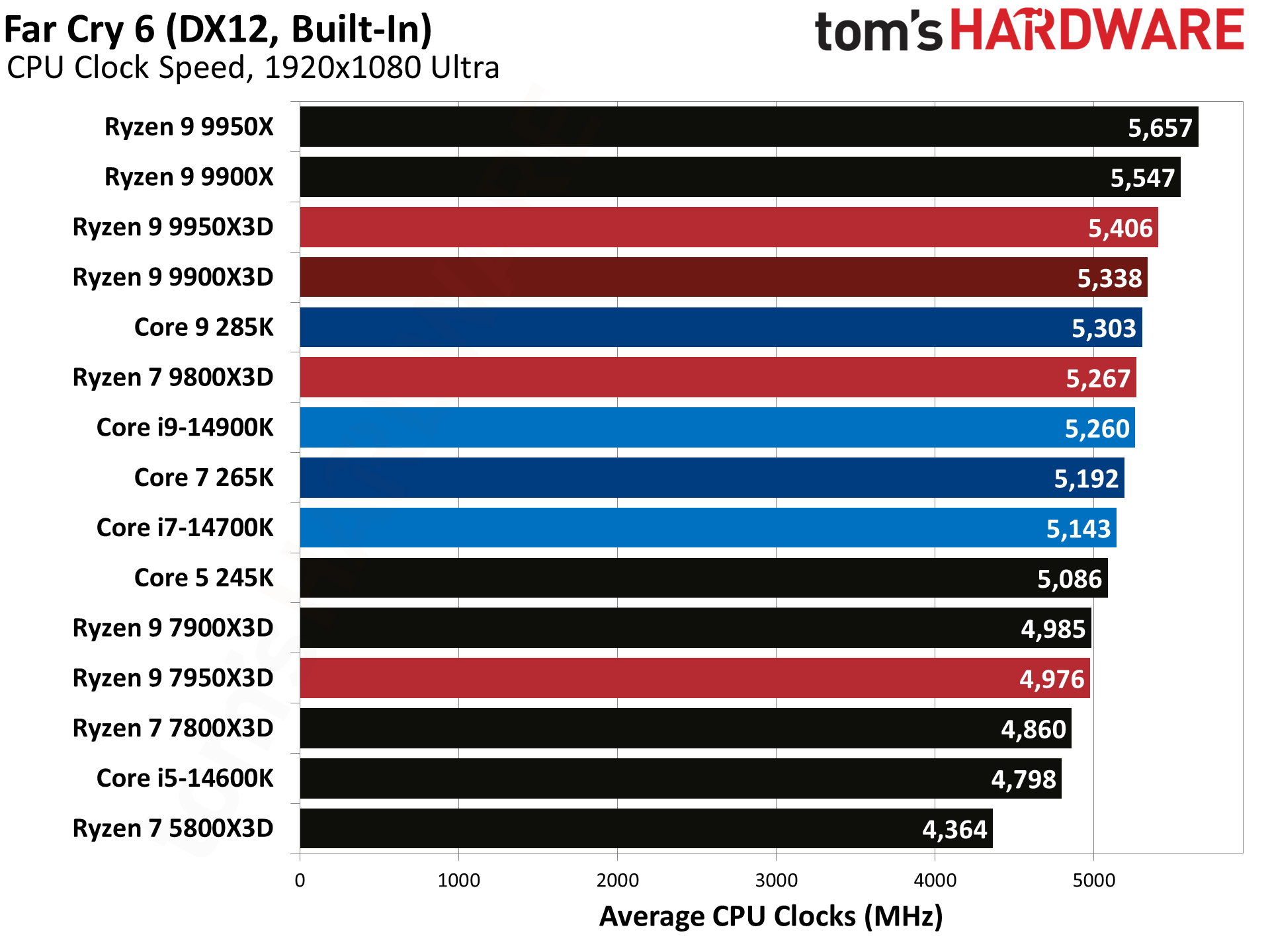
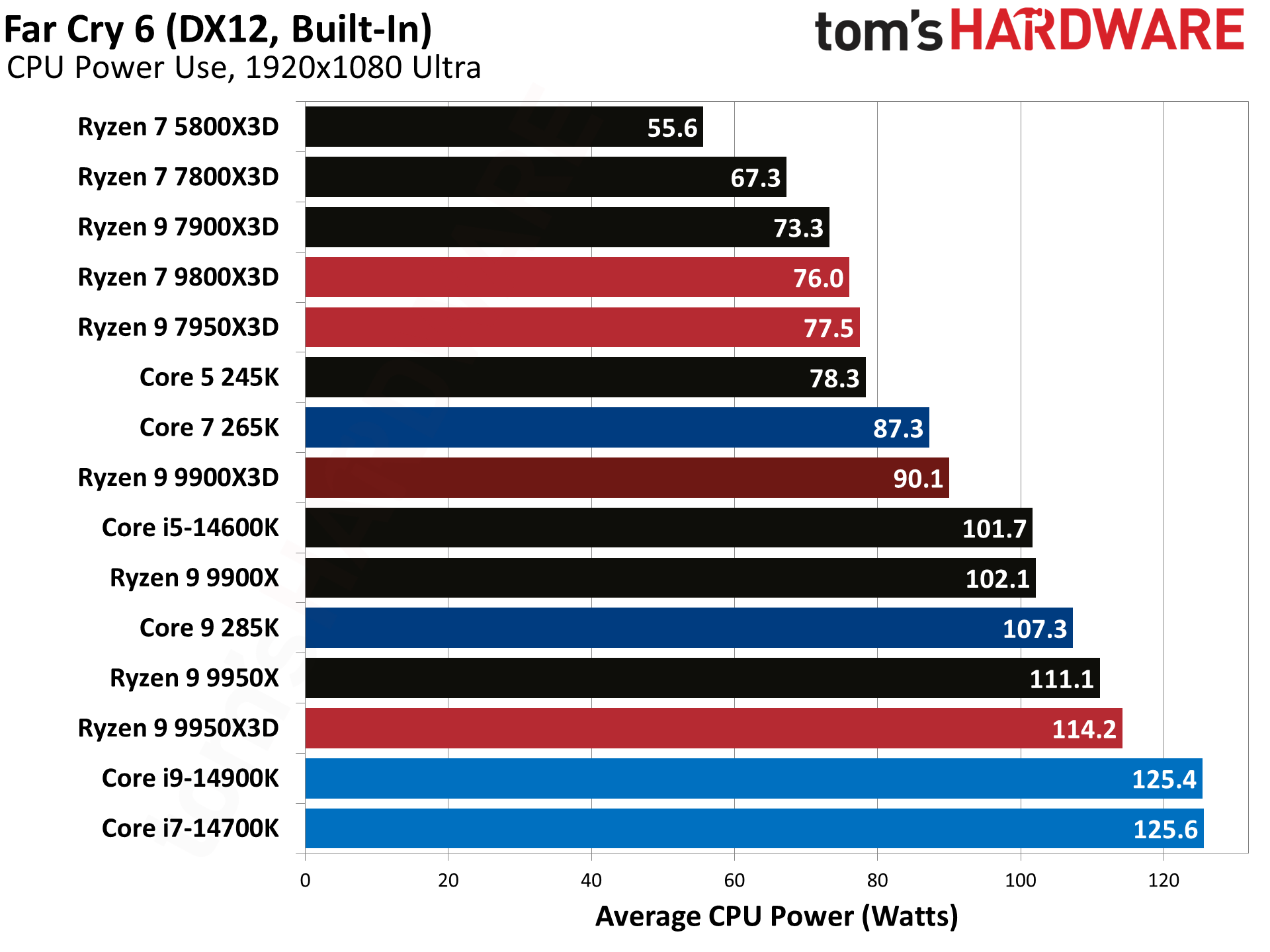
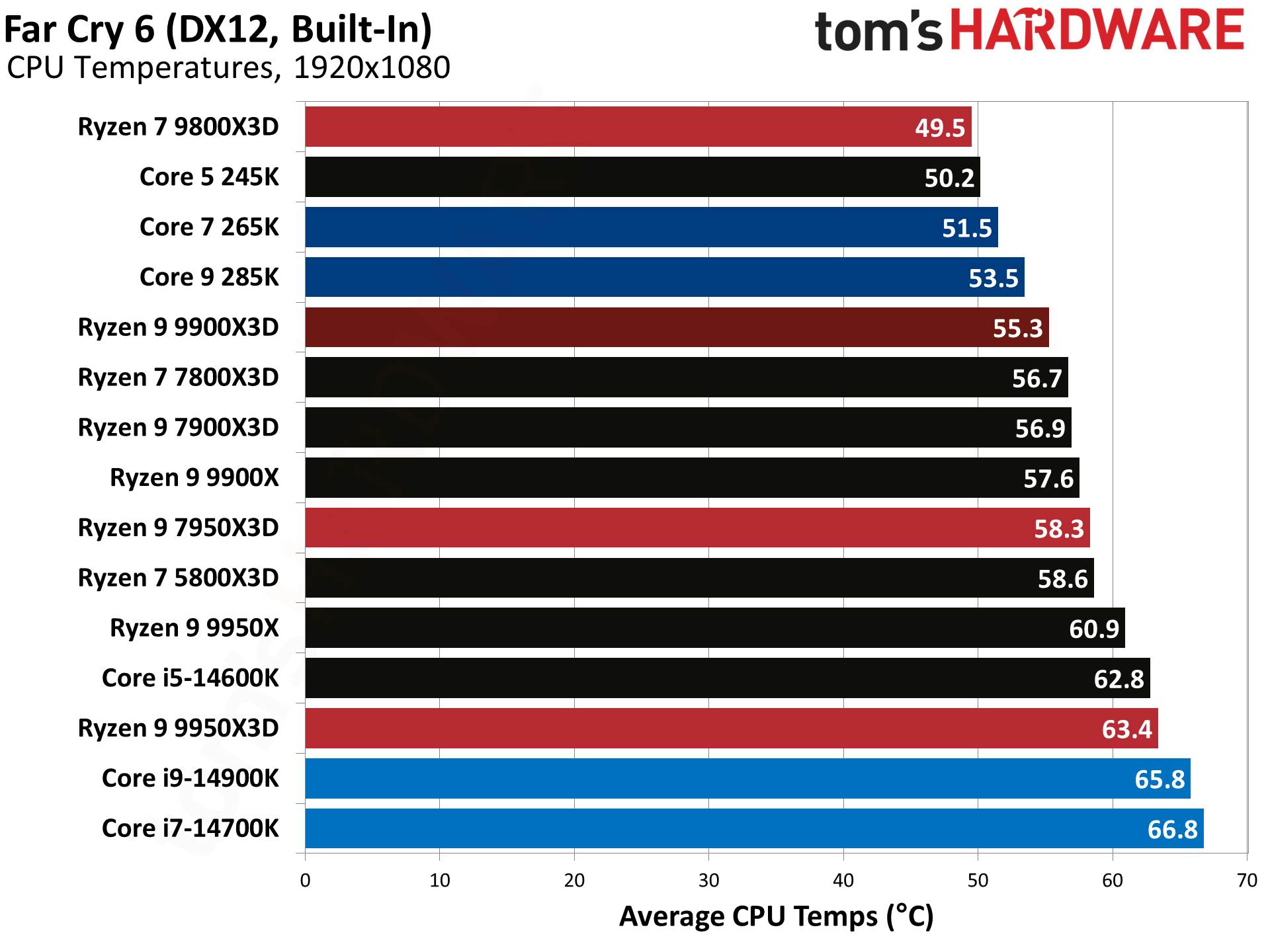
Far Cry 6 is an AMD-promoted game that responds incredibly well to 3D V-Cache.
Final Fantasy XIV Benchmarks
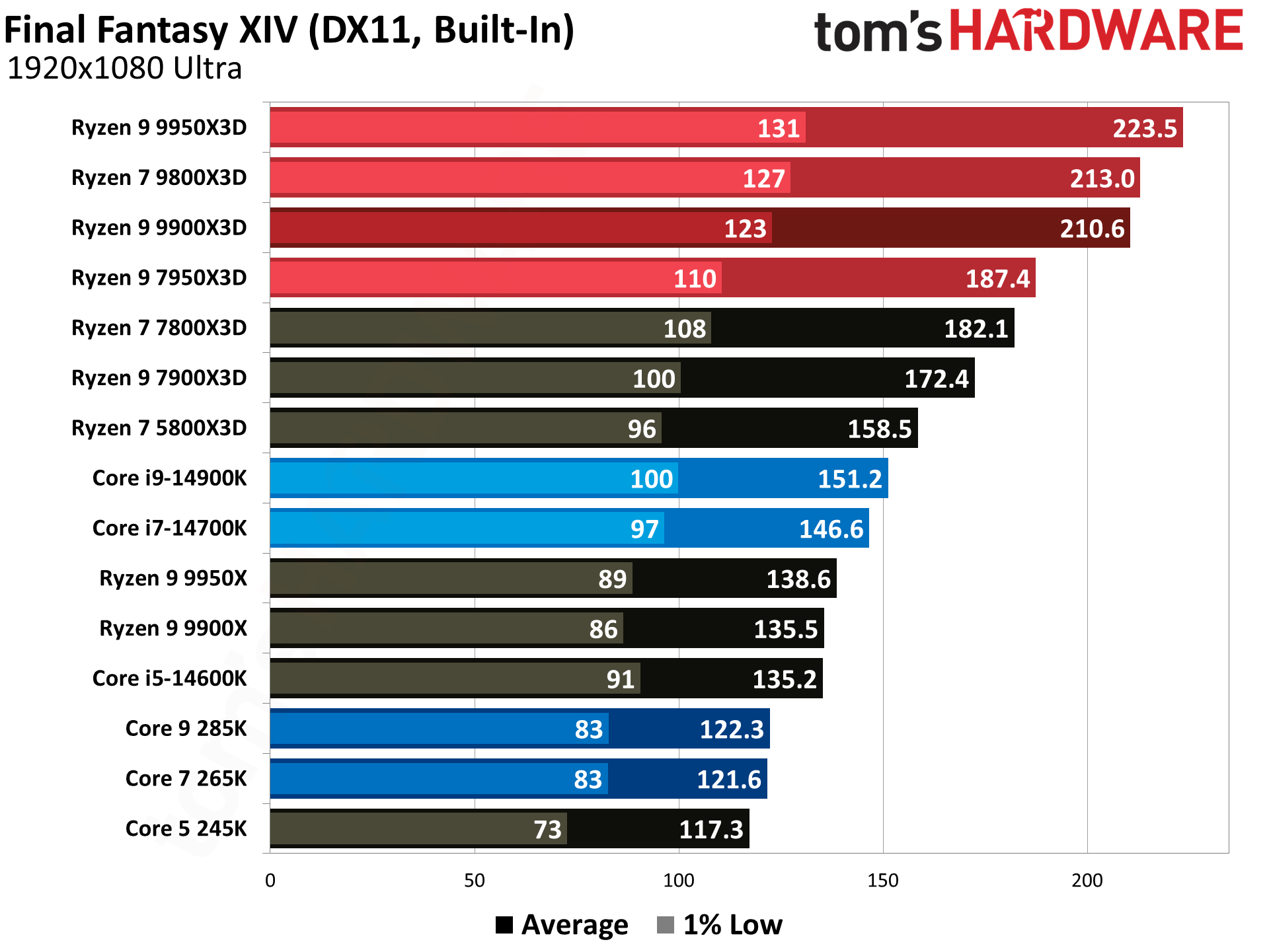
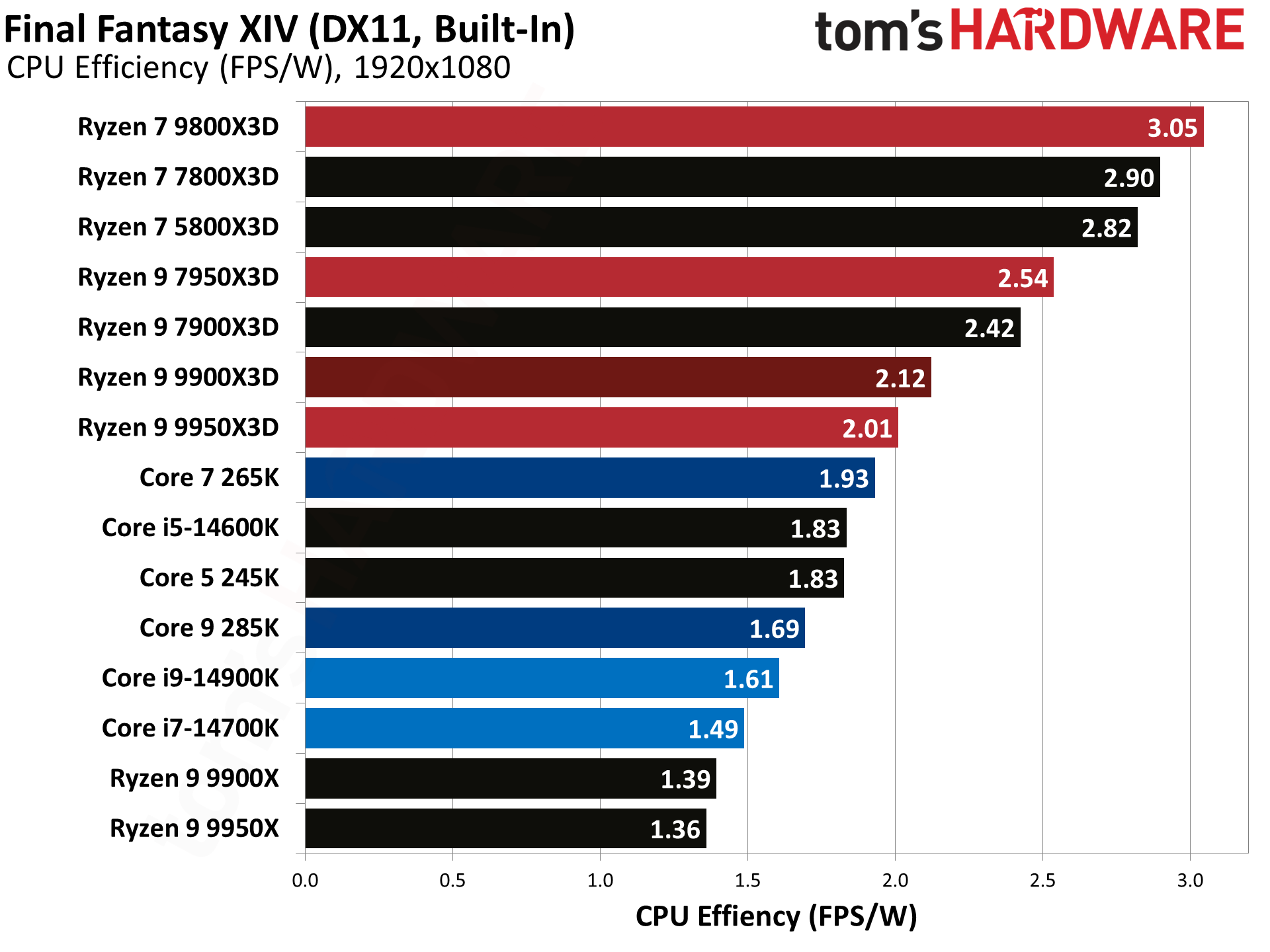
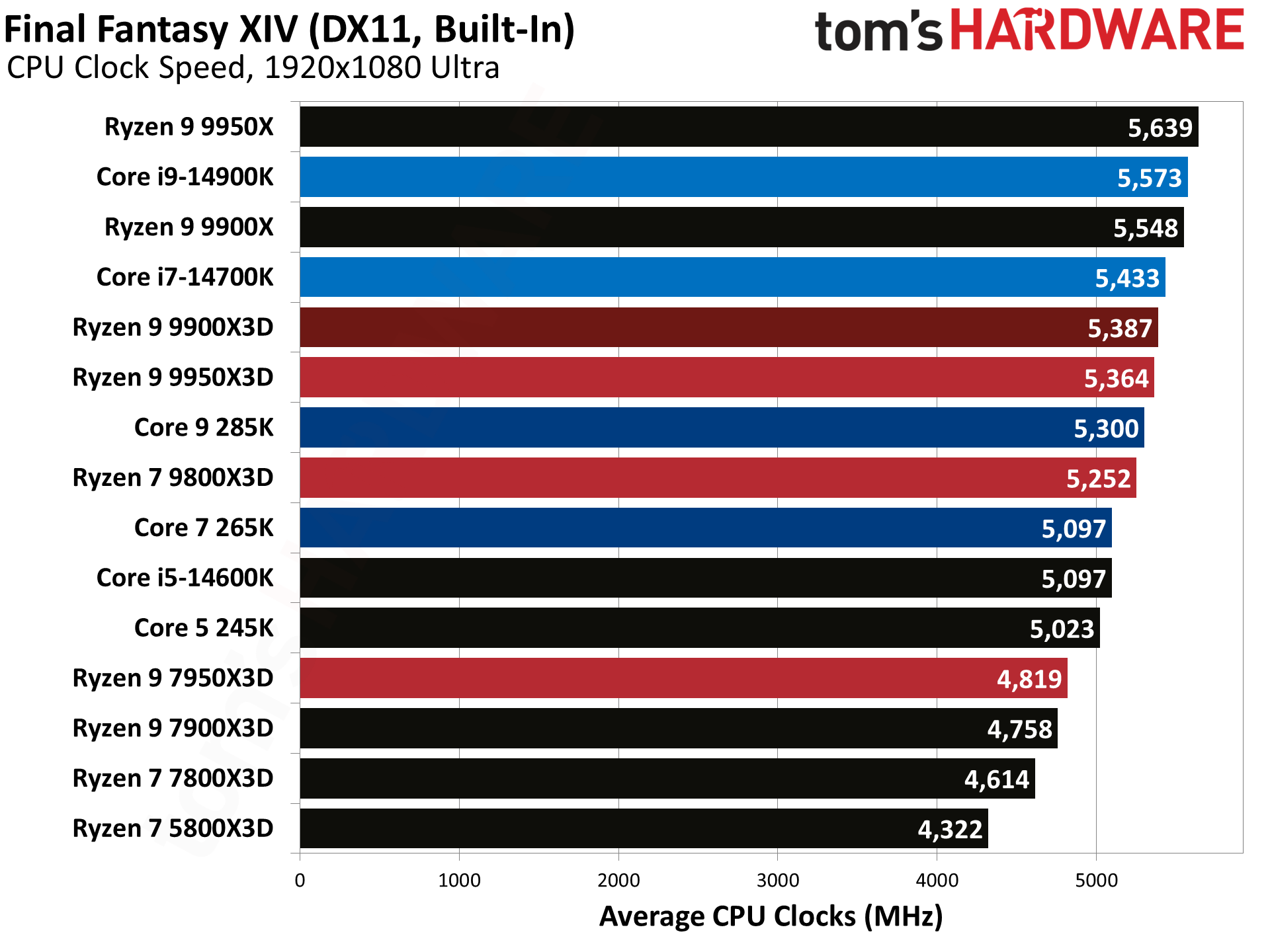
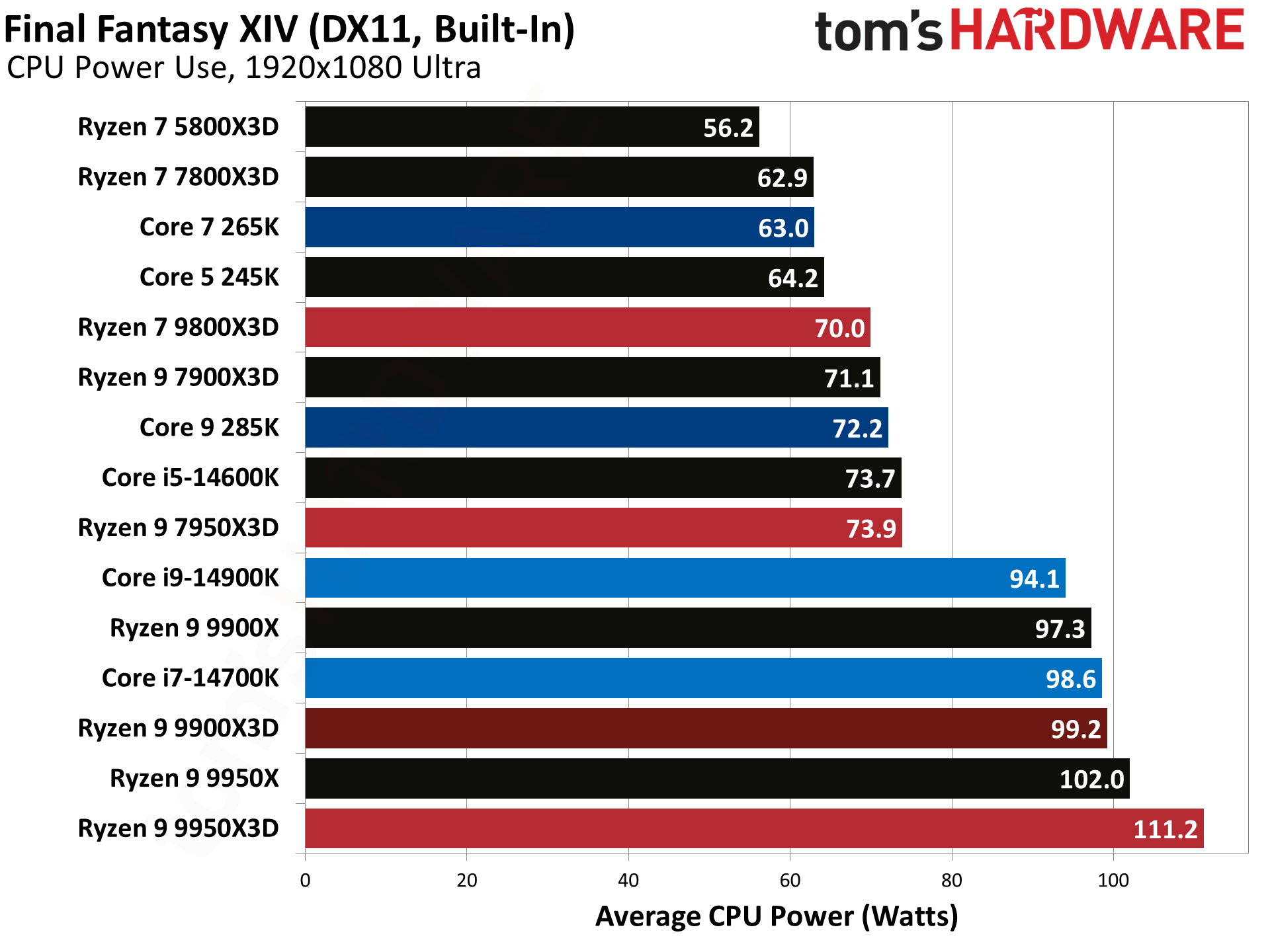
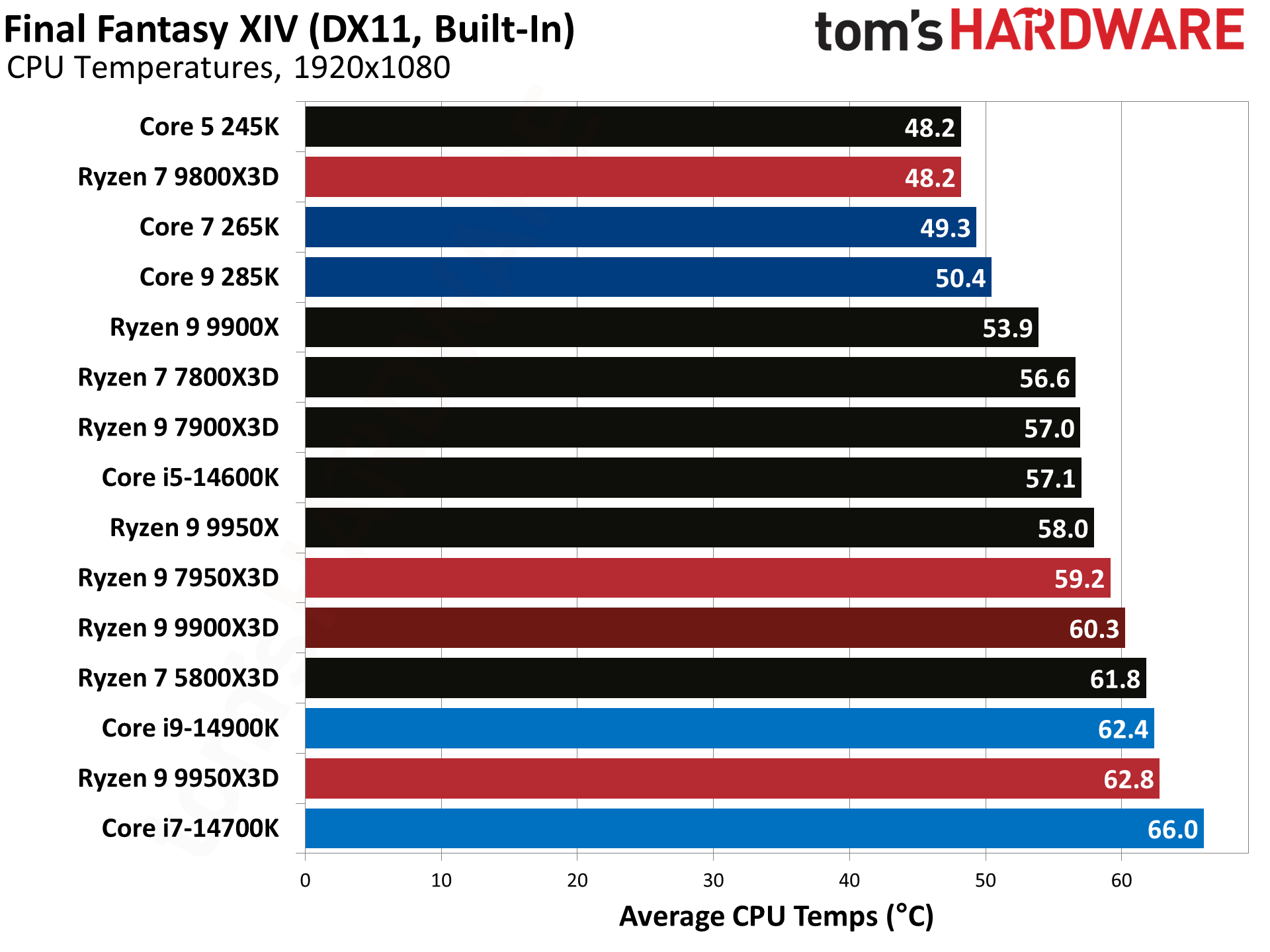
Hitman 3 Benchmarks
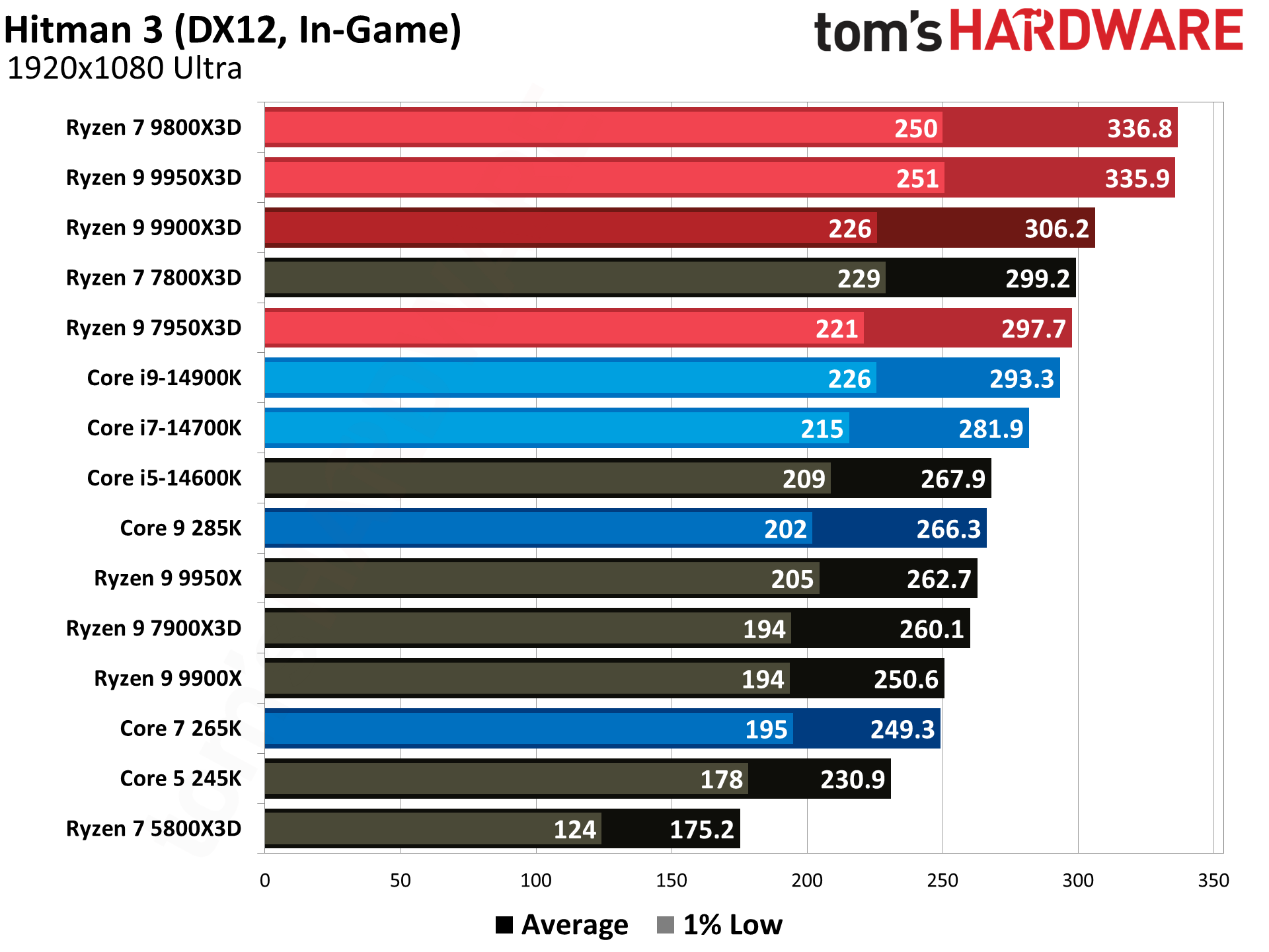
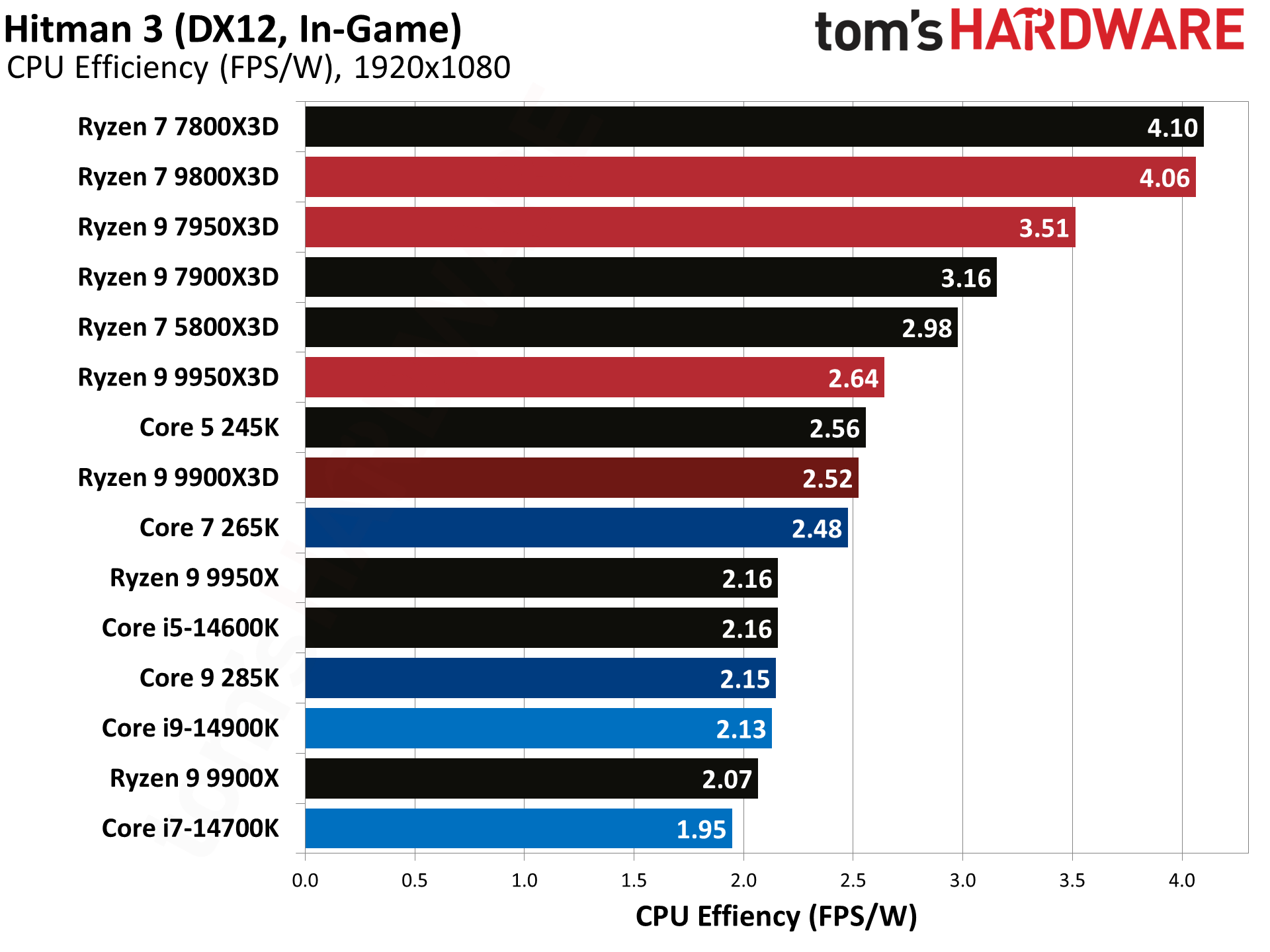
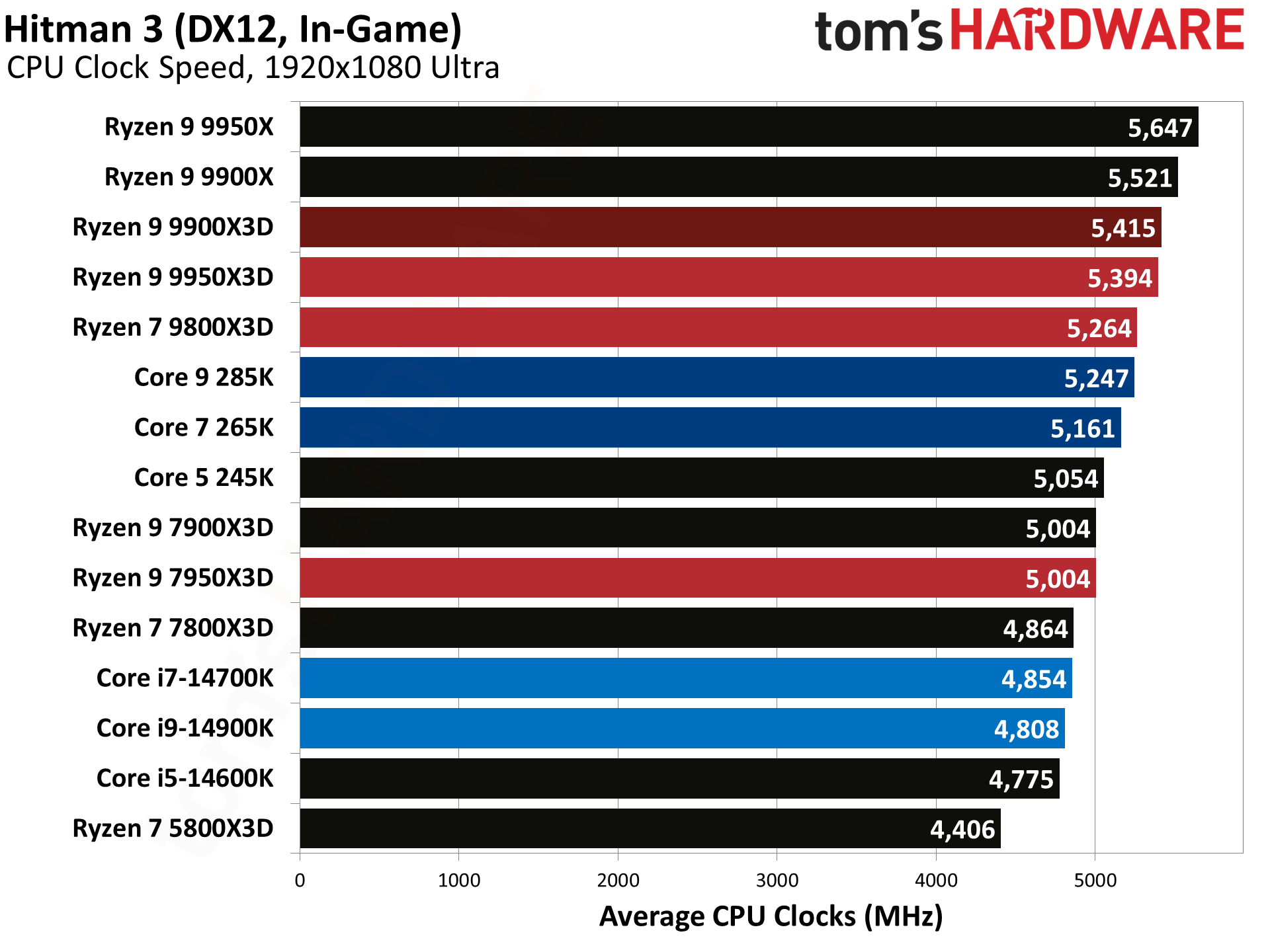
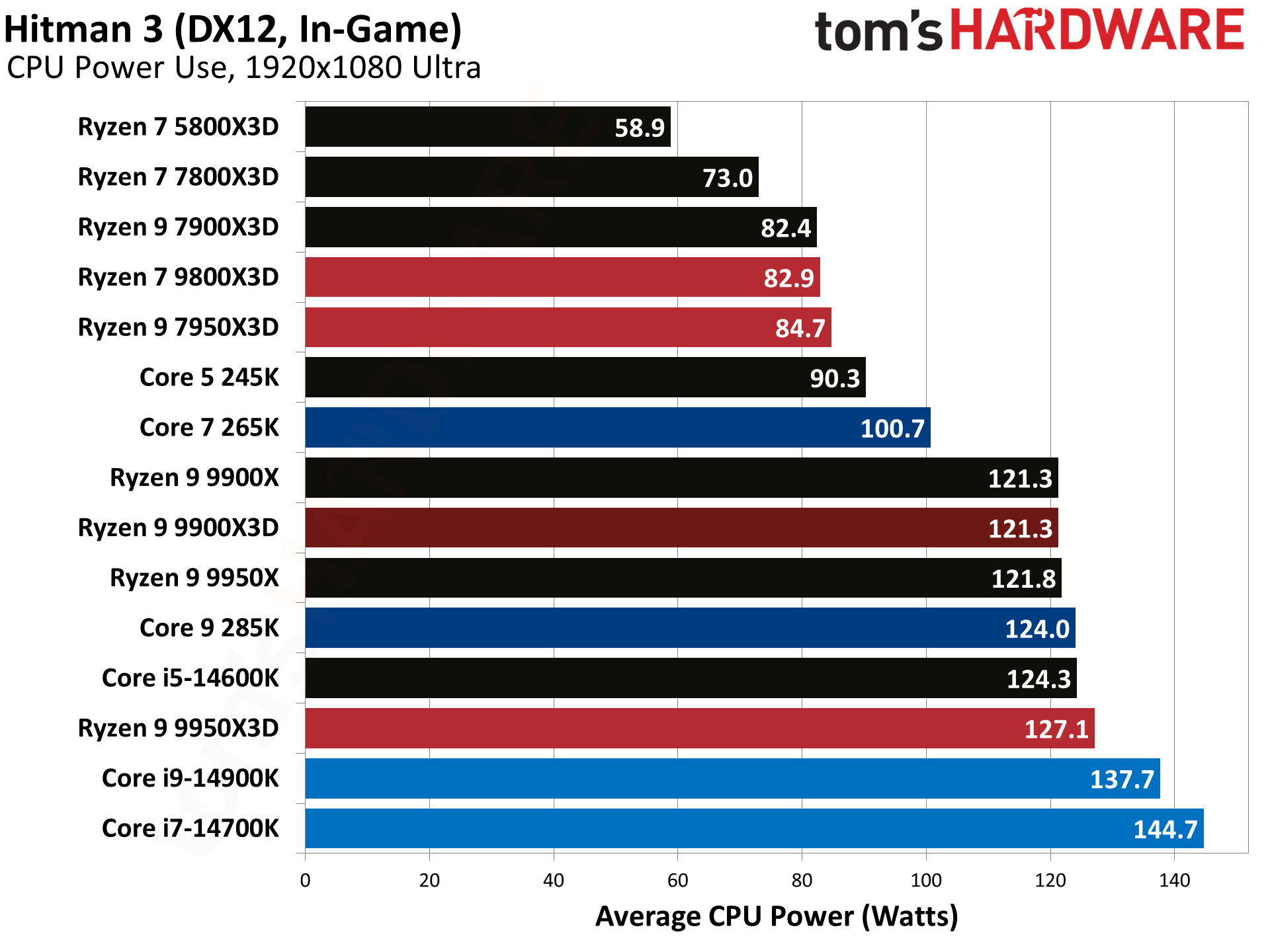
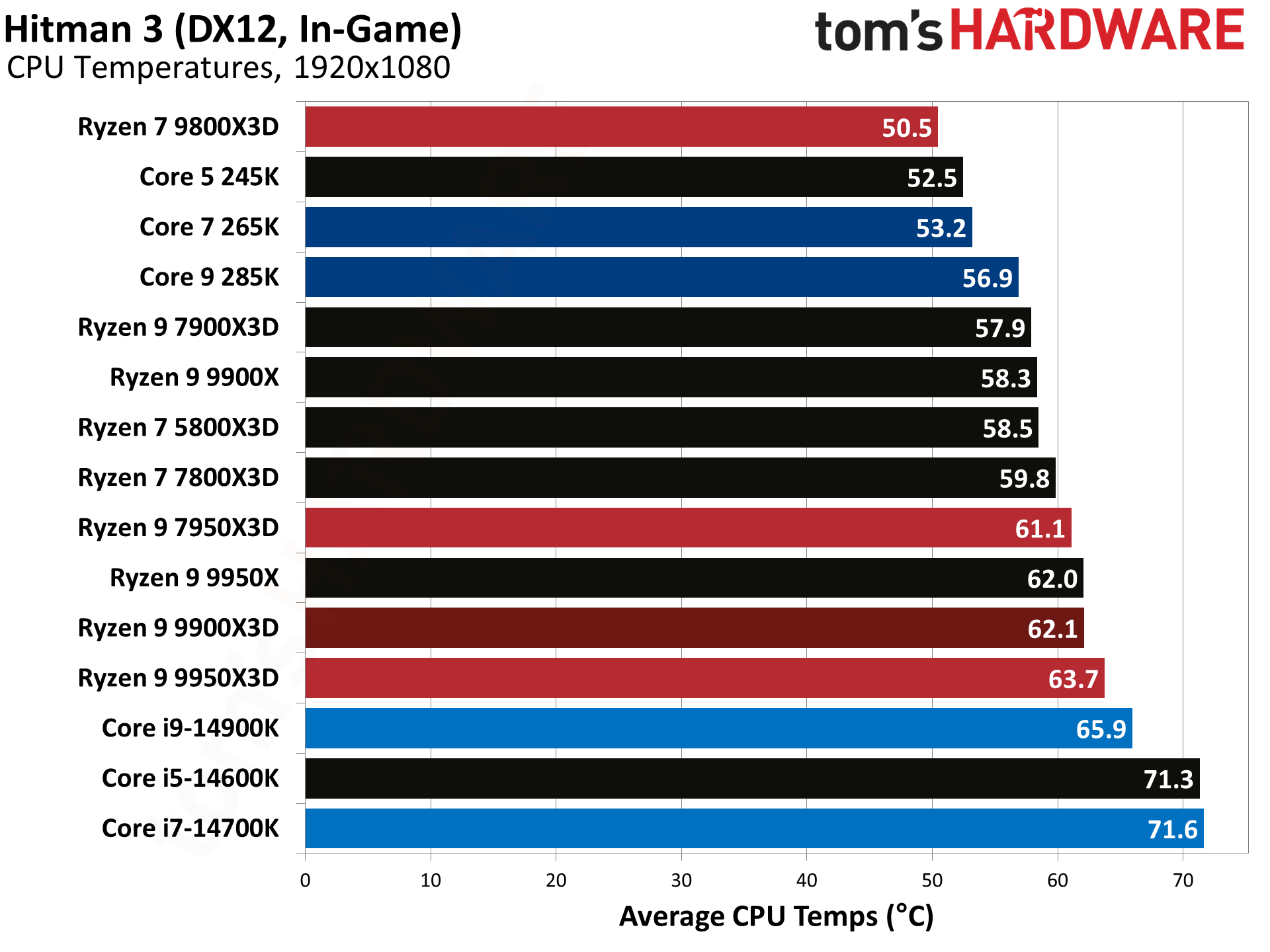
Hitman 3 leverages Intel's E-cores for certain game functions, but it also likes Ryzen X3D's voluminous L3 cache. We enabled ray tracing effects for this title to further tax the CPUs, but as you can see, the RTX 5090 still chews through this title easily if the CPU keeps it fed.
Get Tom's Hardware's best news and in-depth reviews, straight to your inbox.
Hogwarts Legacy Benchmarks
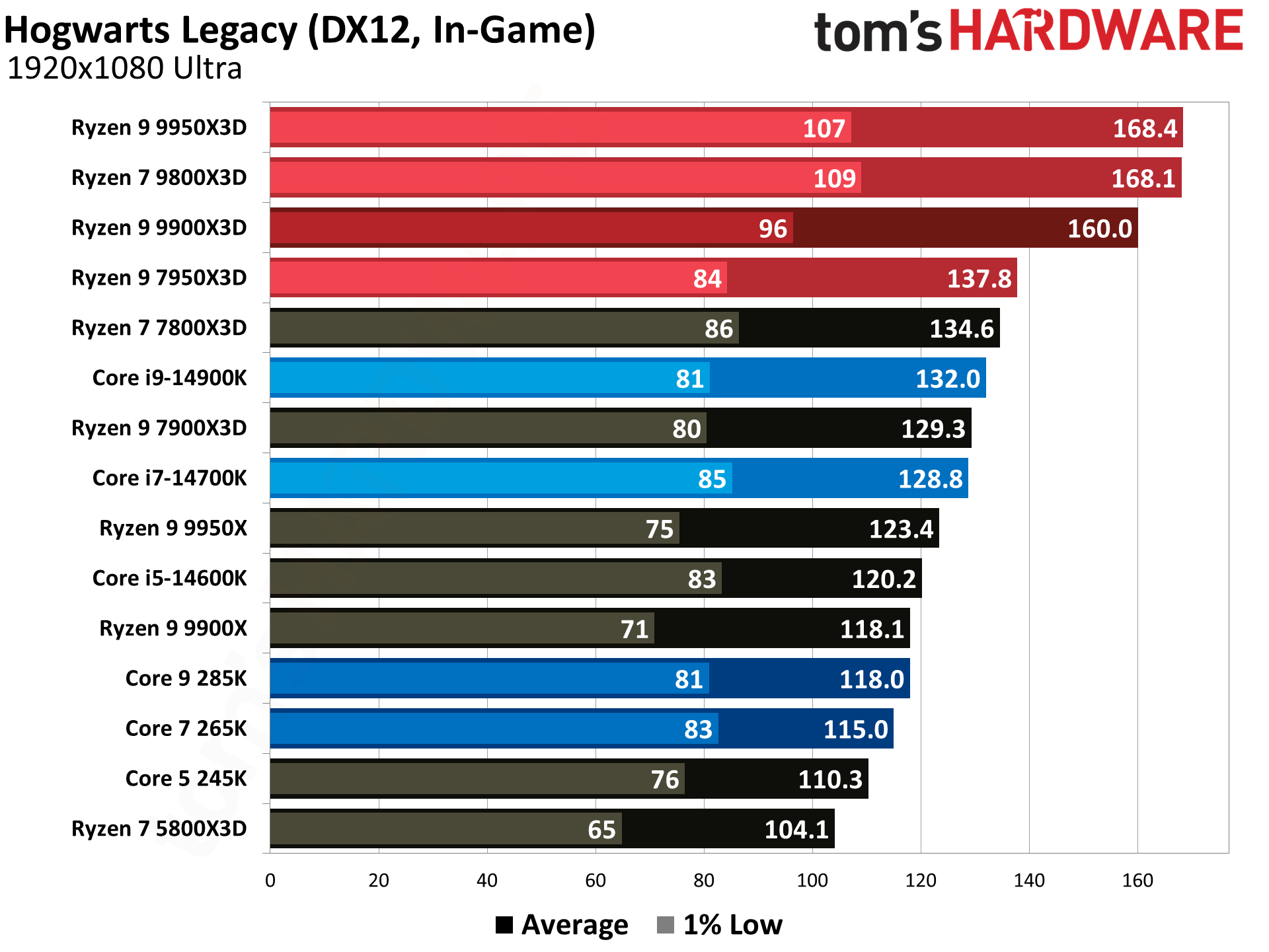
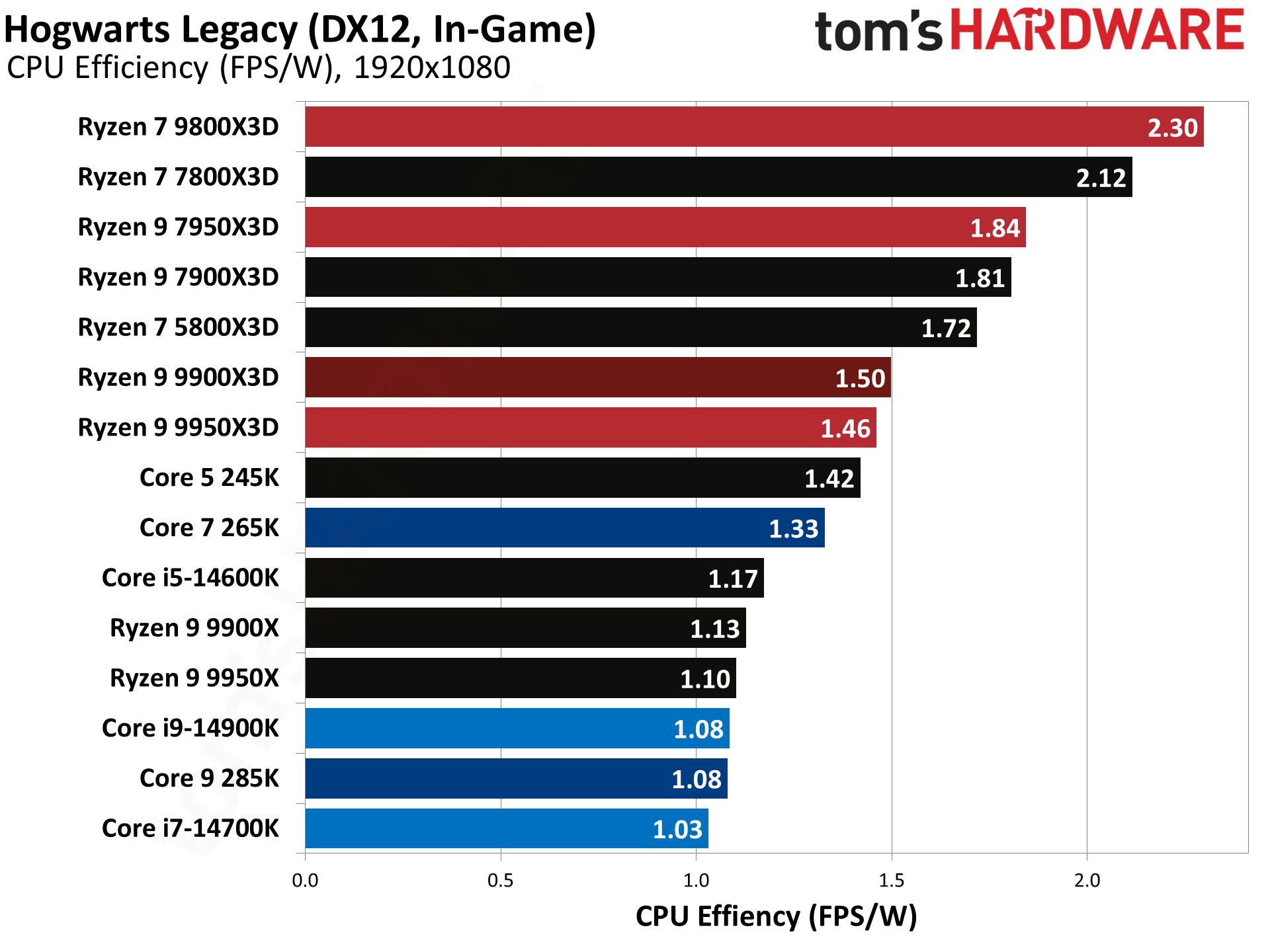
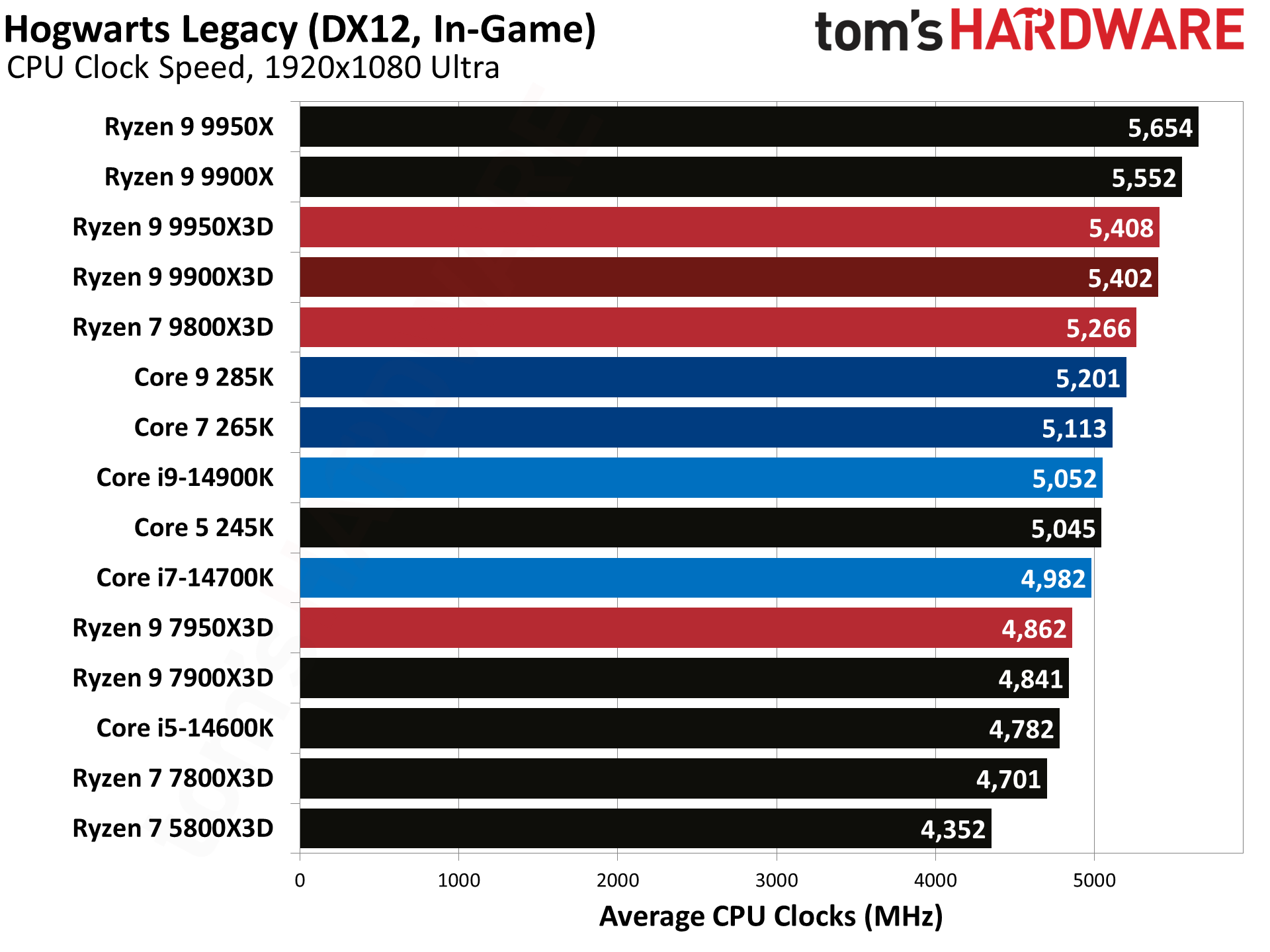
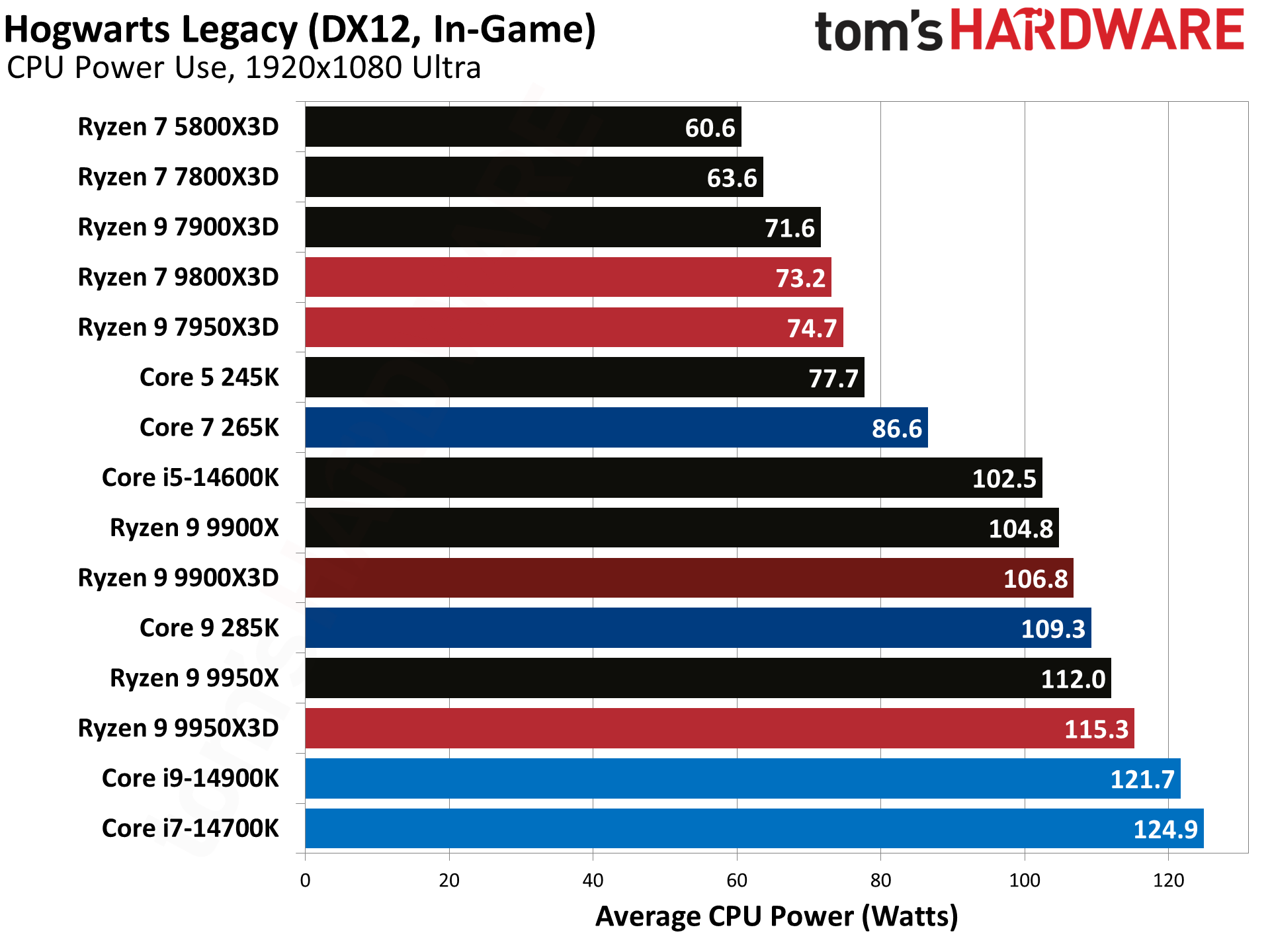
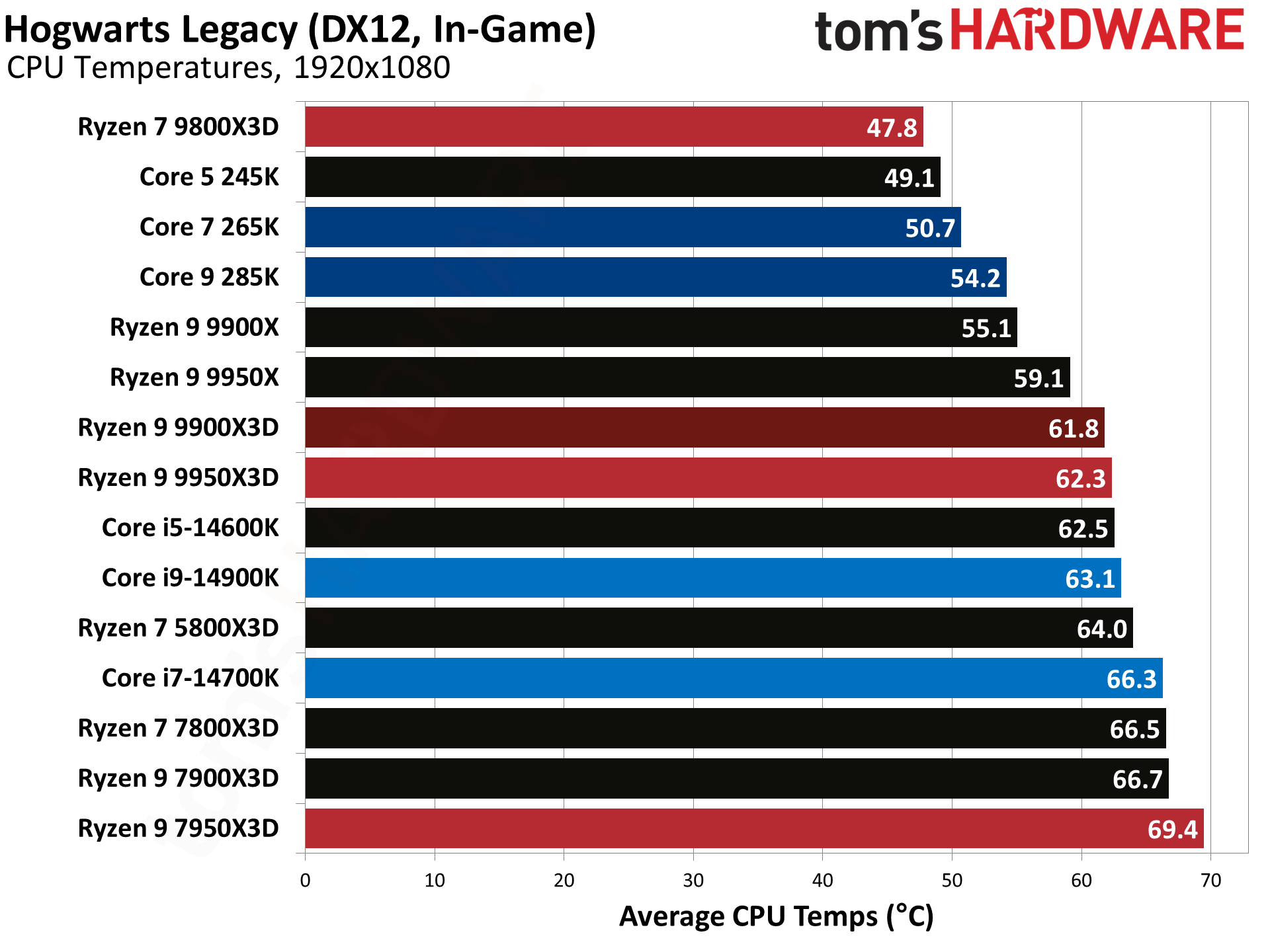
Microsoft Flight Simulator 2020 Benchmarks
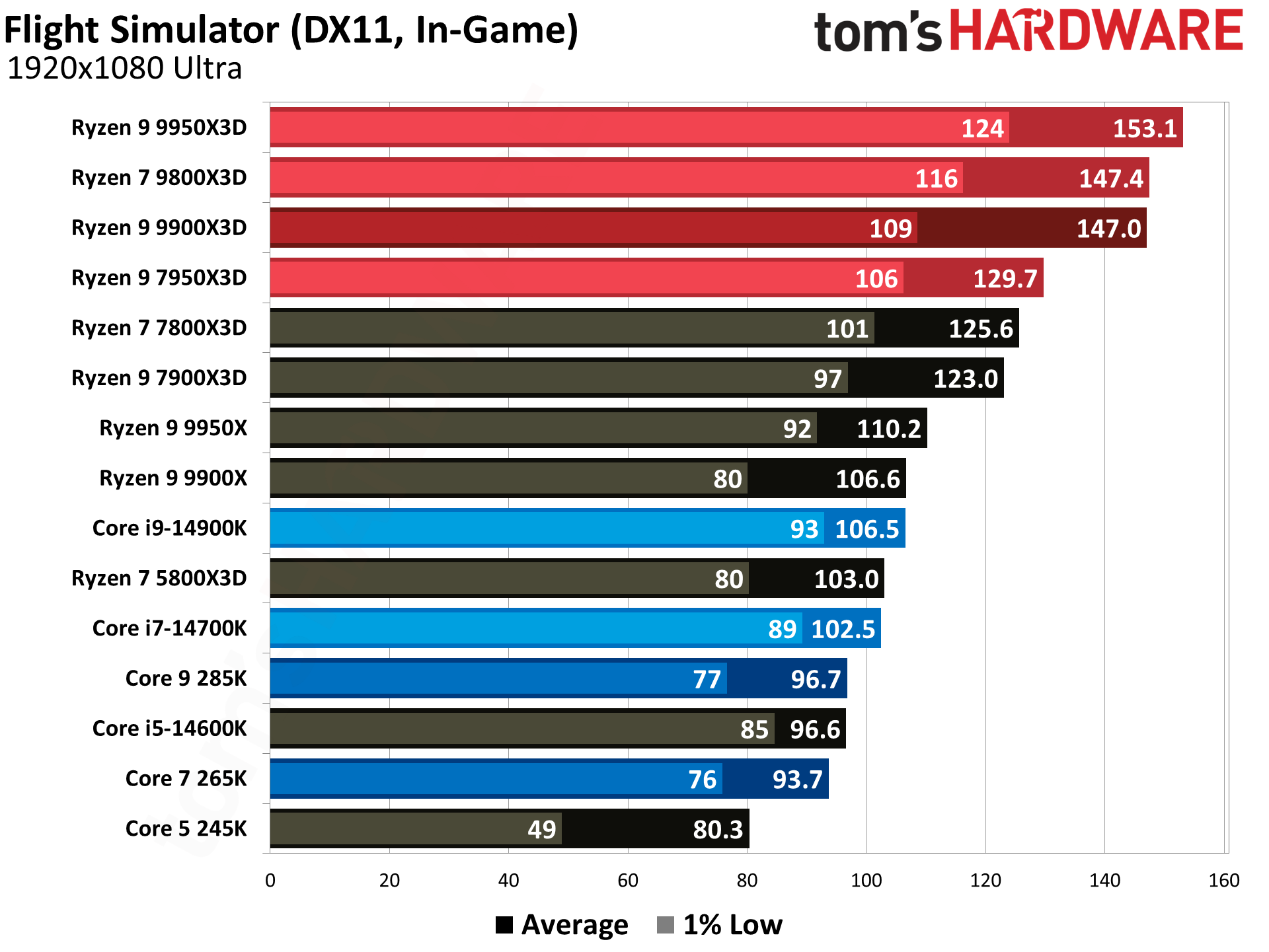

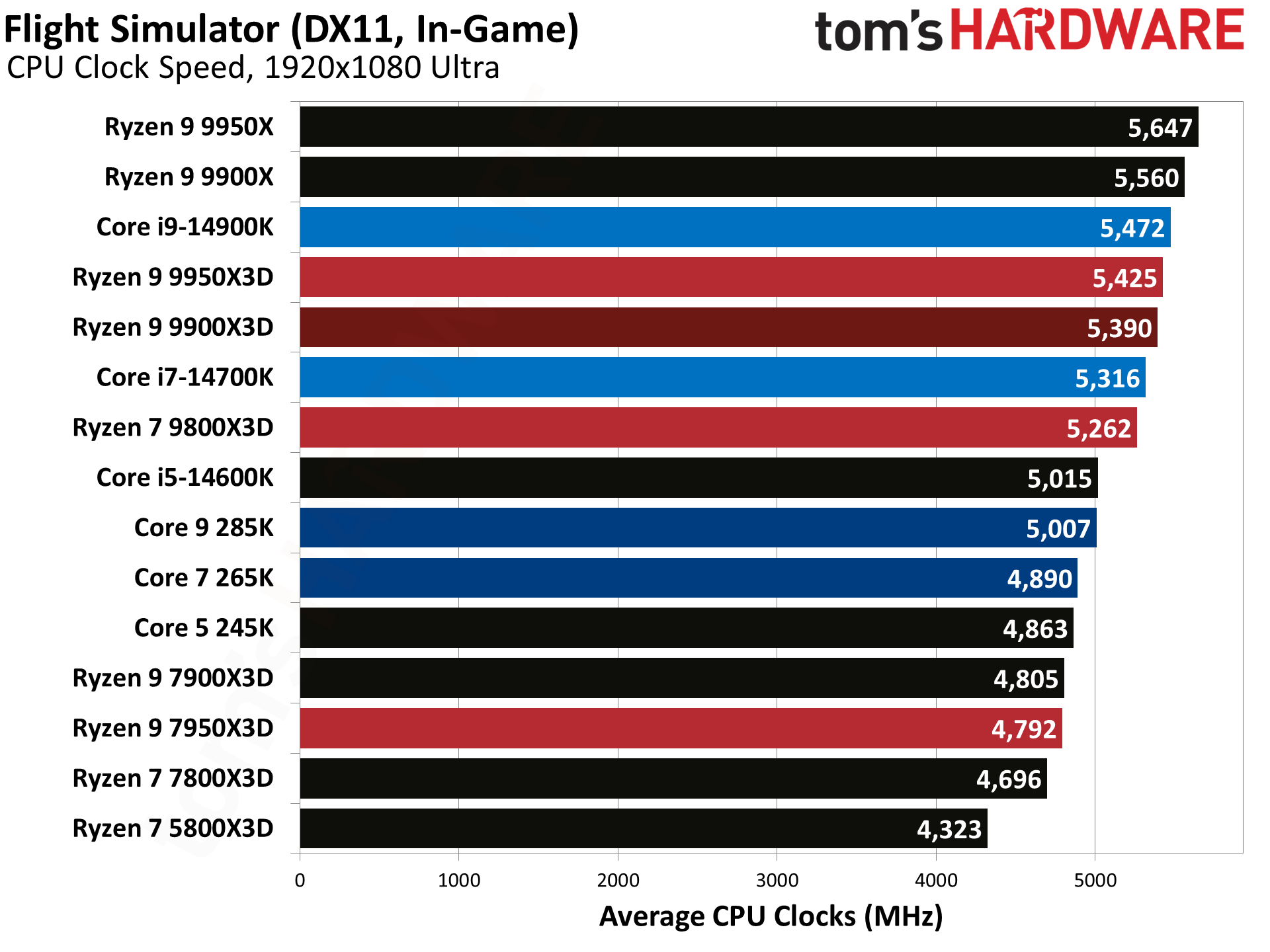
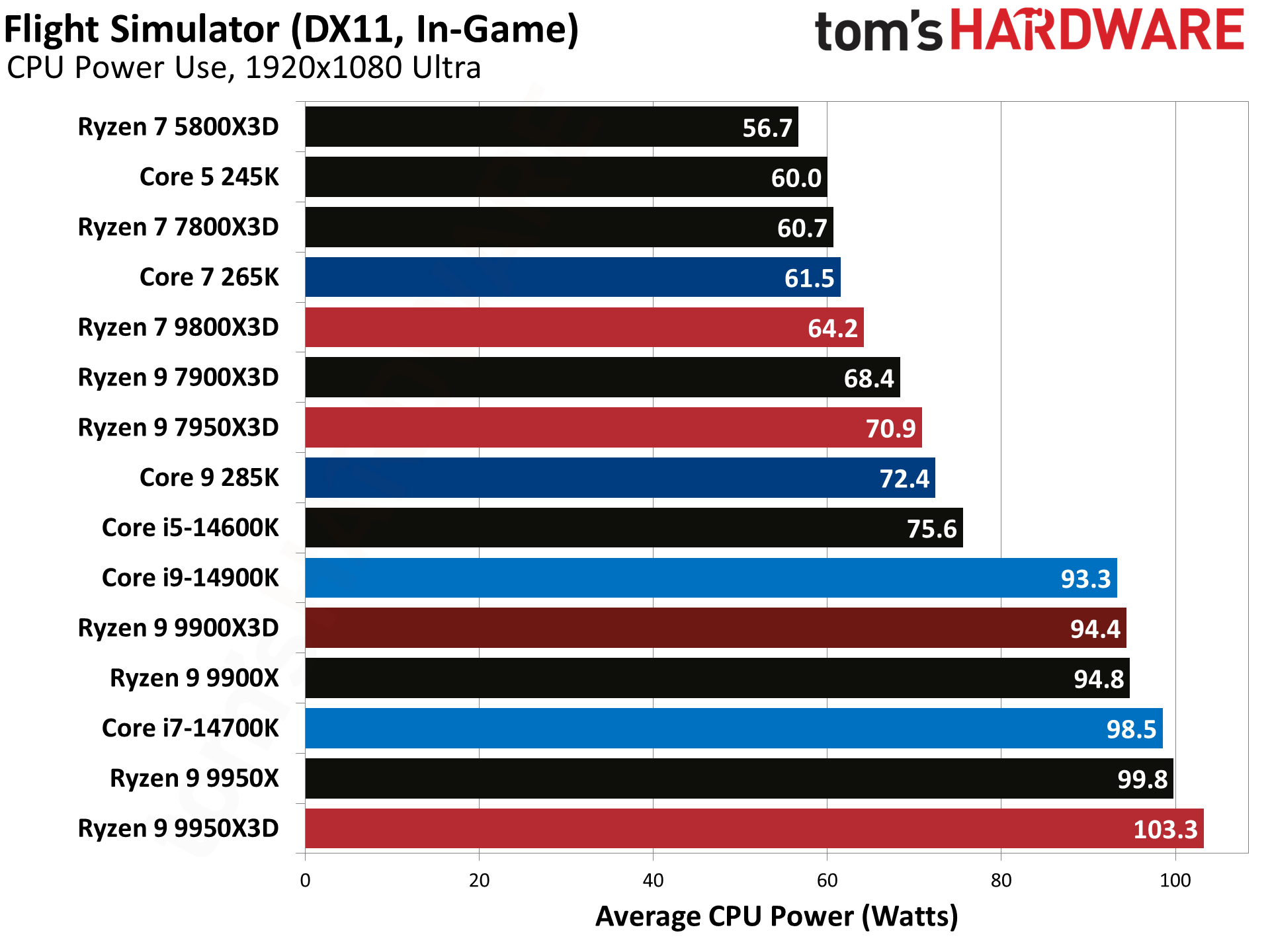
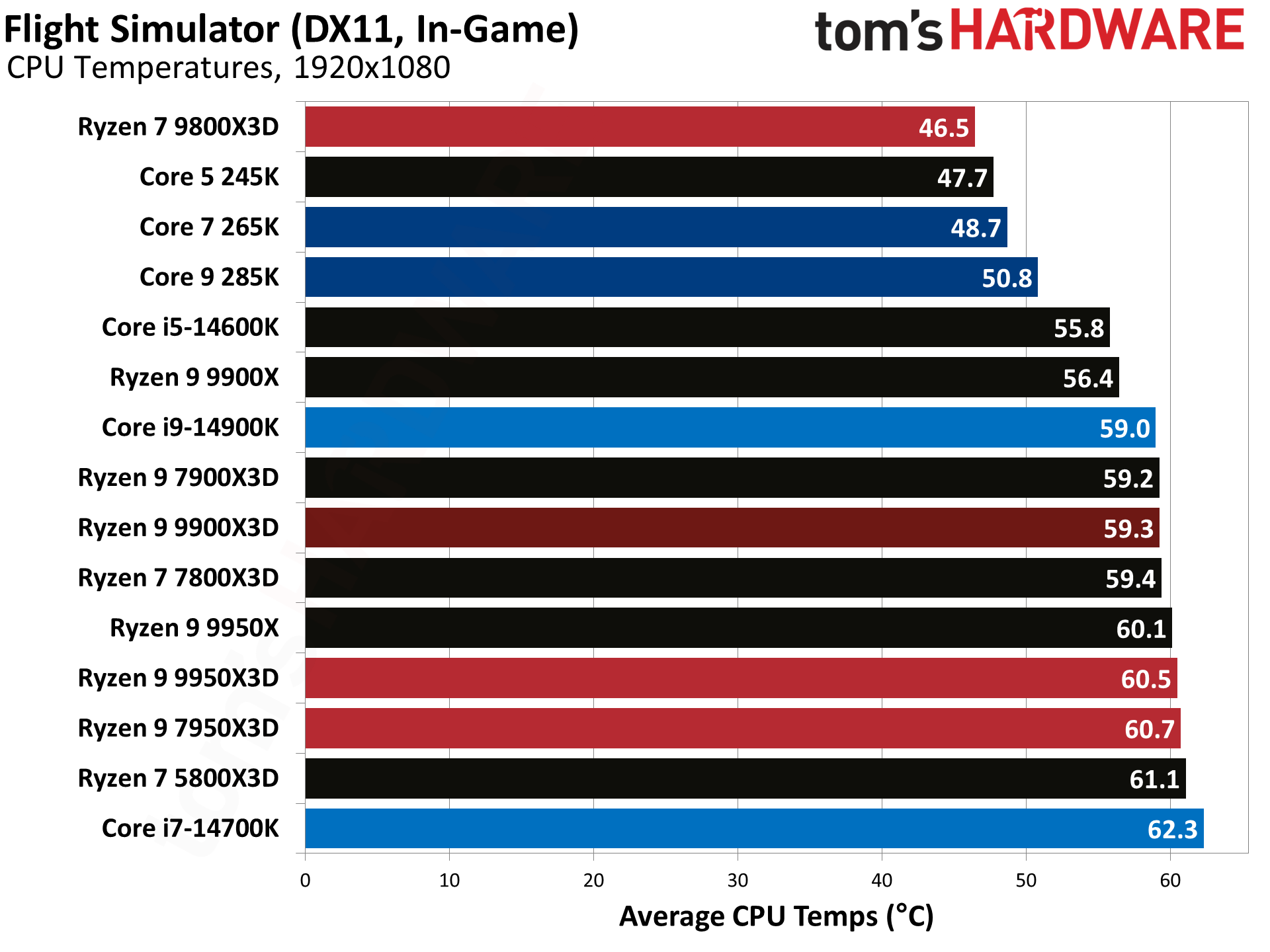
Microsoft Flight Simulator 2020 obviously benefits from L3 cache — the Ryzen X3D chips are incredible in this title. We've added the newer version of this game to our benchmark suite, too, but we'll keep this one around as well due to its popularity.
Microsoft Flight Simulator 2024 Benchmarks
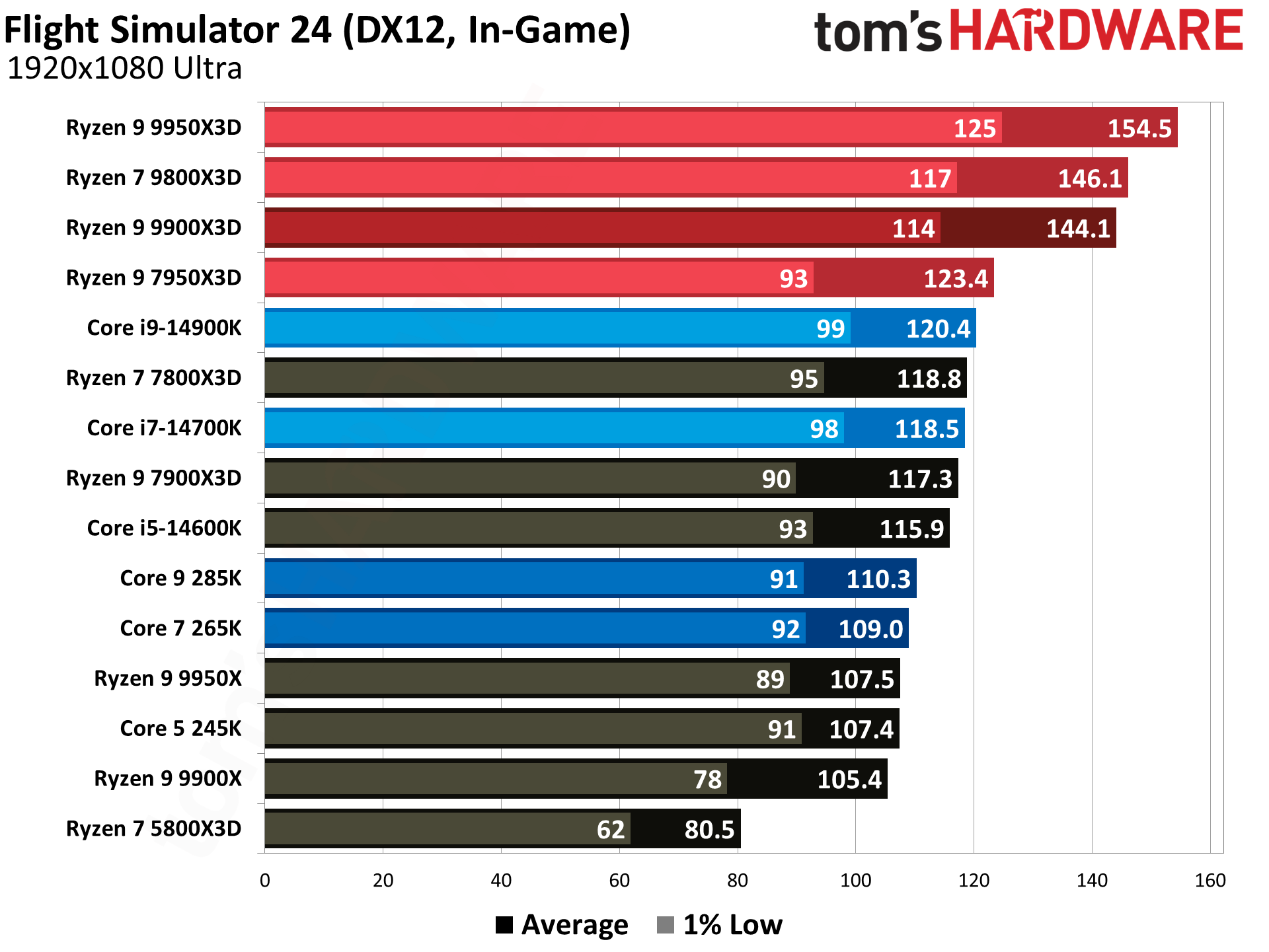

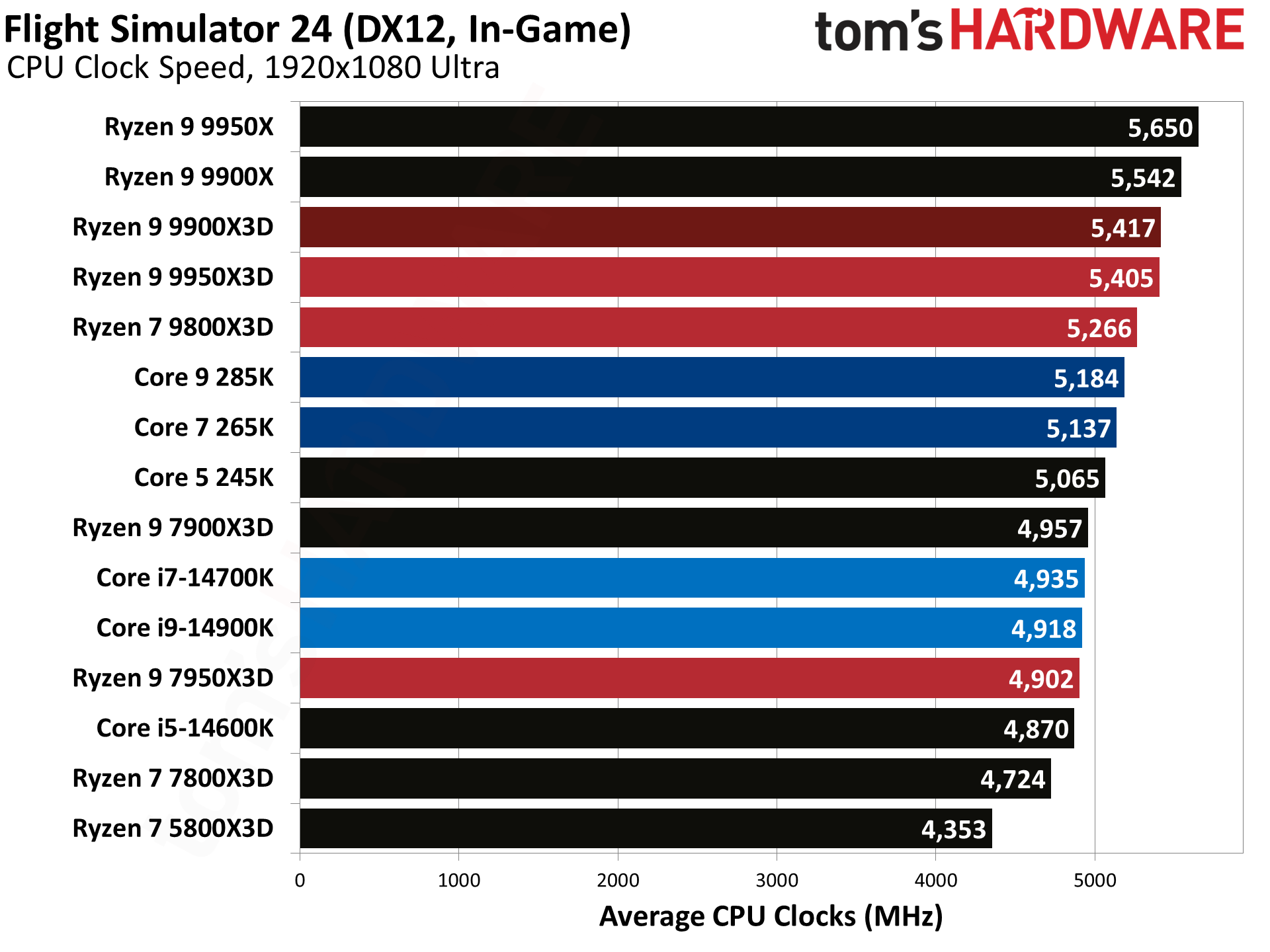
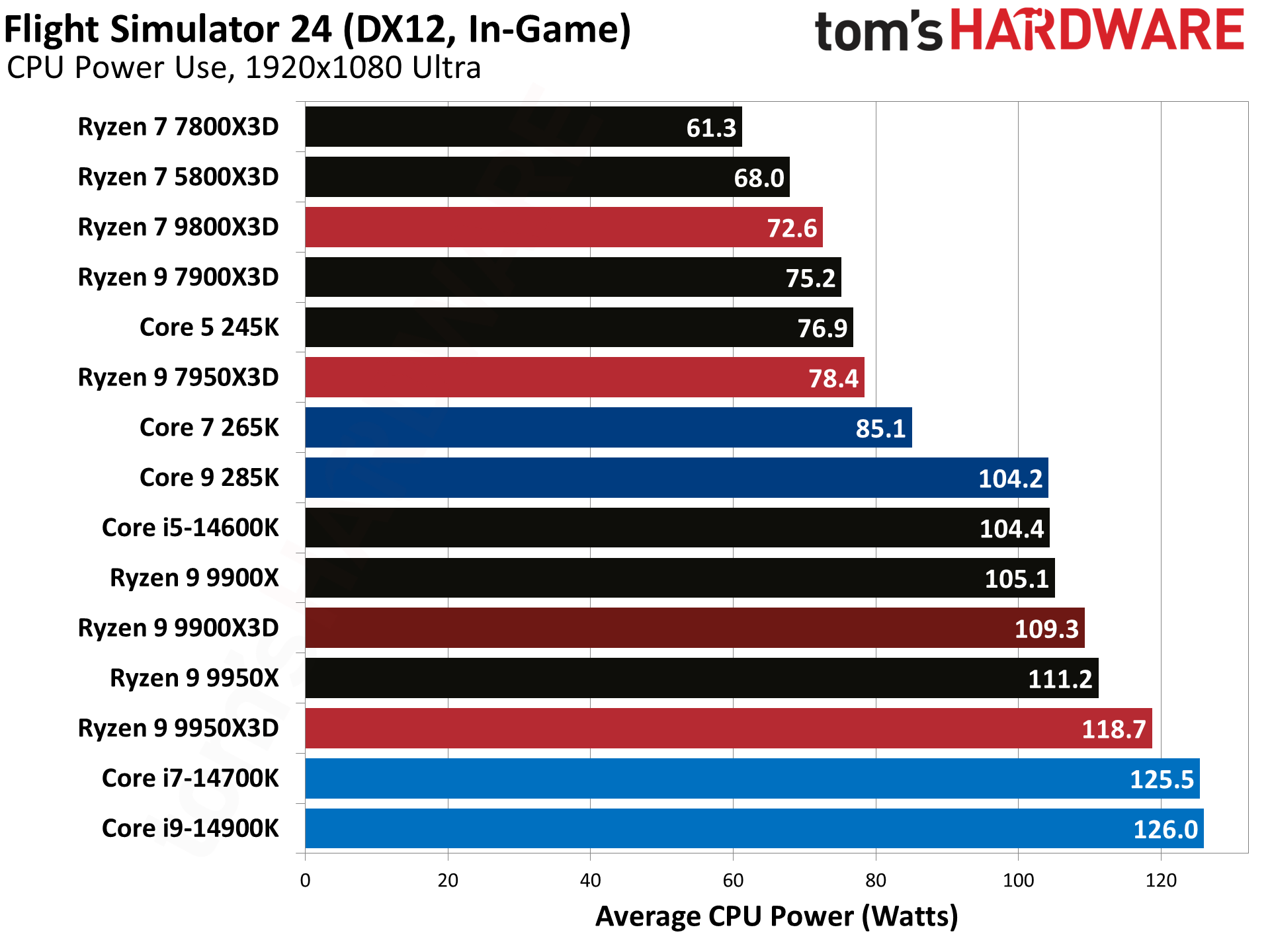
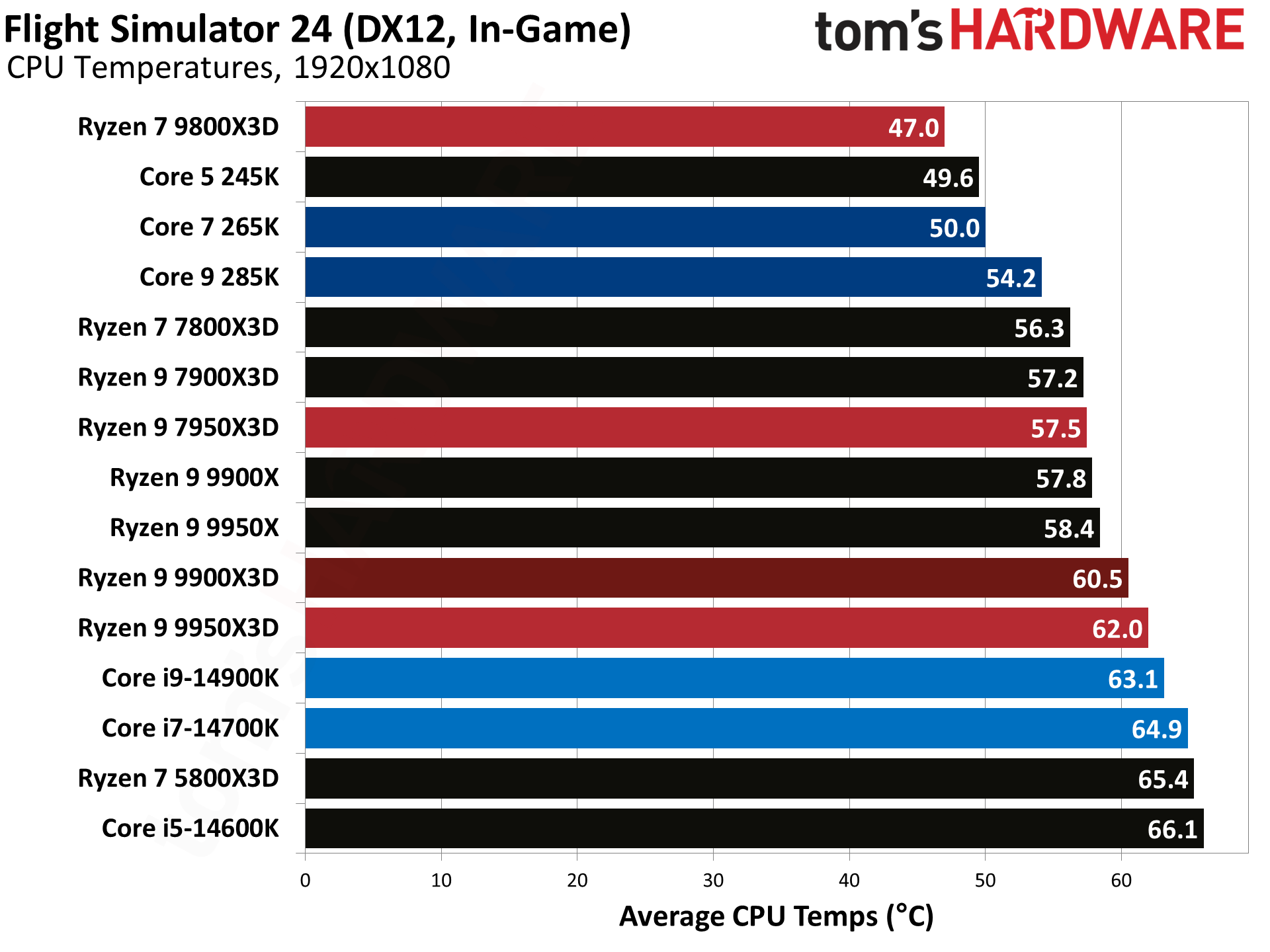
We've also begun testing Microsoft Flight Simulator 2024. This title relies heavily on data streaming and has a unique game engine, so it's time to start poking at it. As you can see, it inherits Flight Simulator 2020's love for 3D V-Cache (perhaps even more so).
Minecraft — AMD Ryzen 9 9950X3D
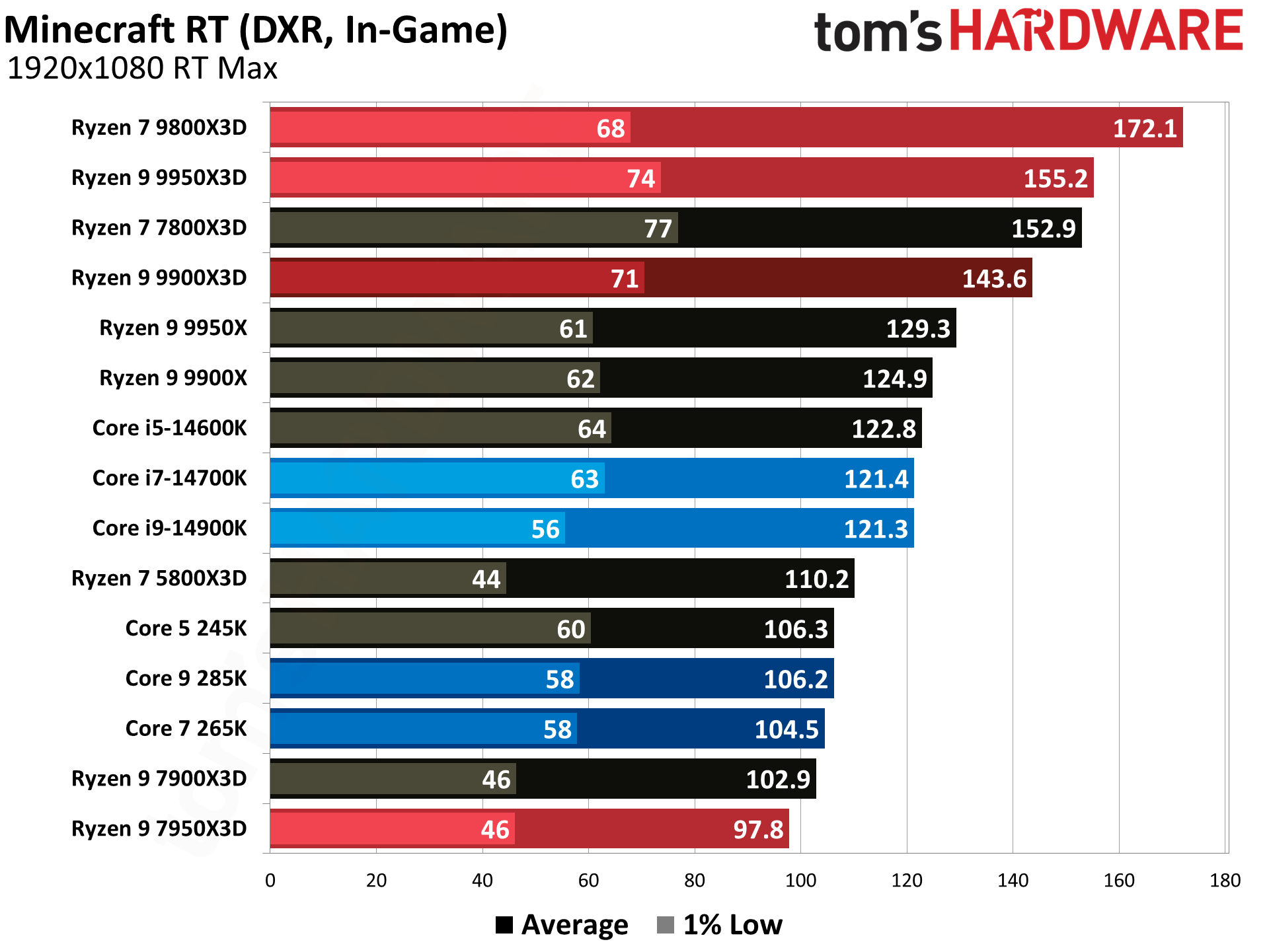
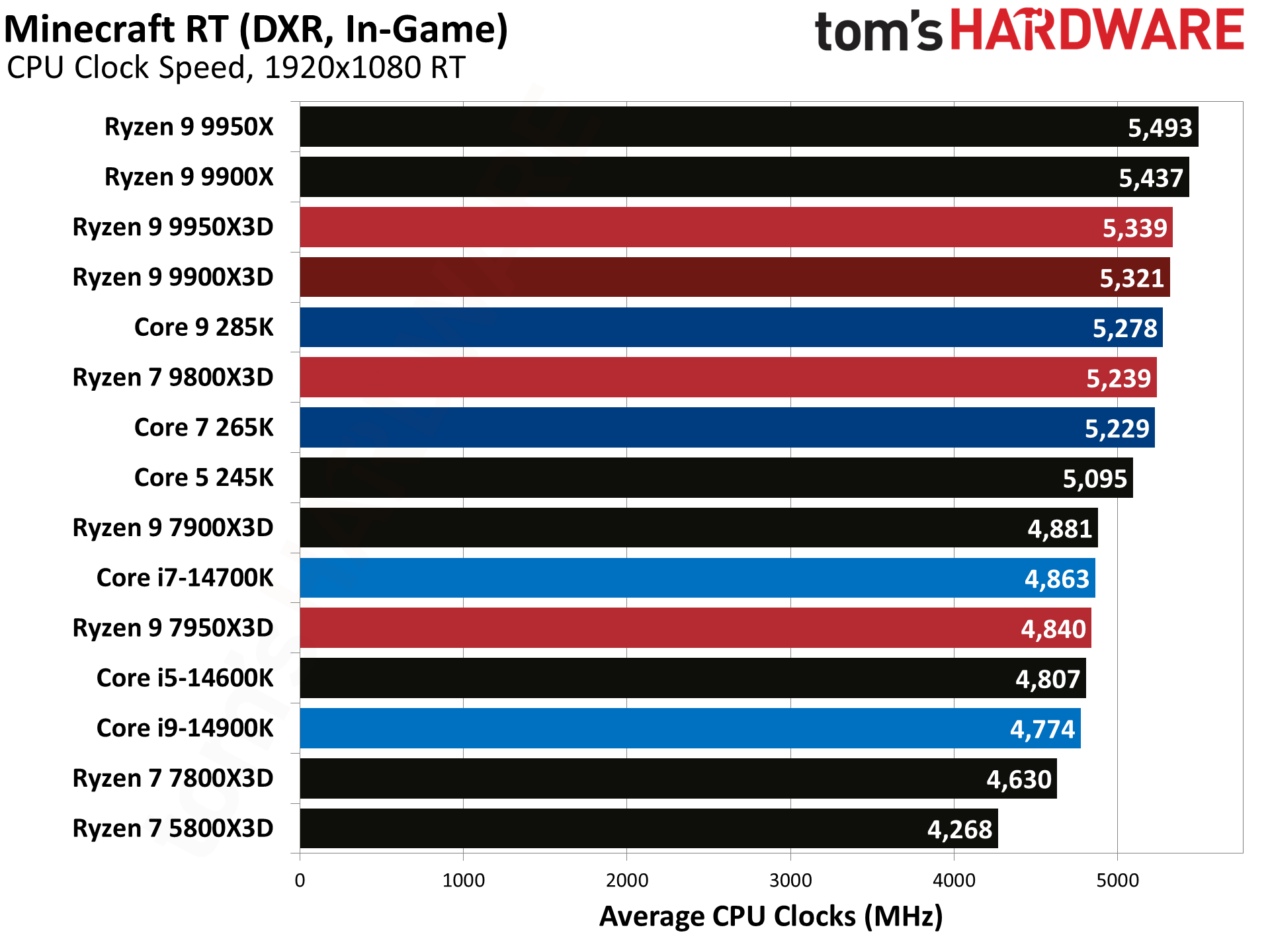

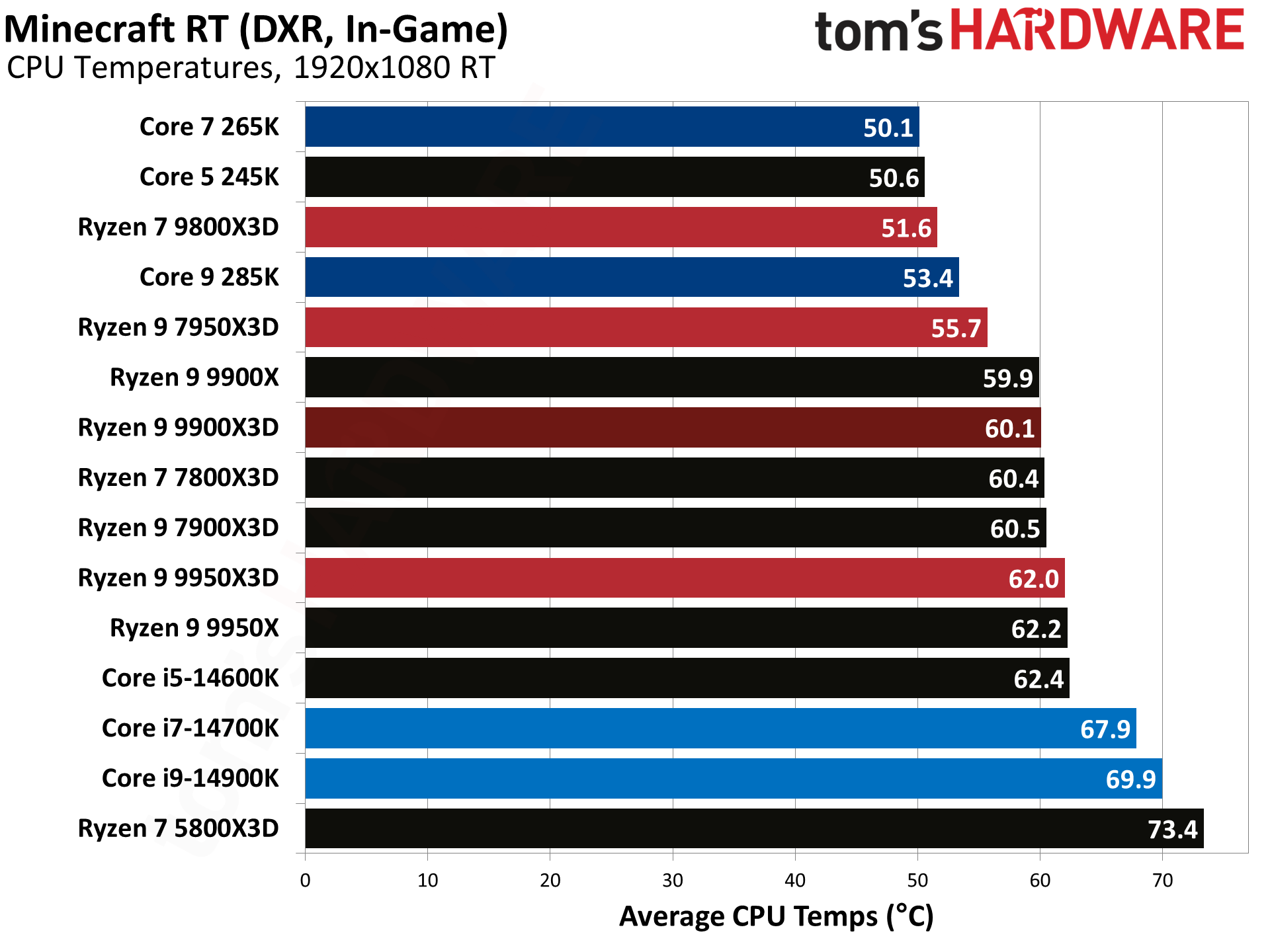
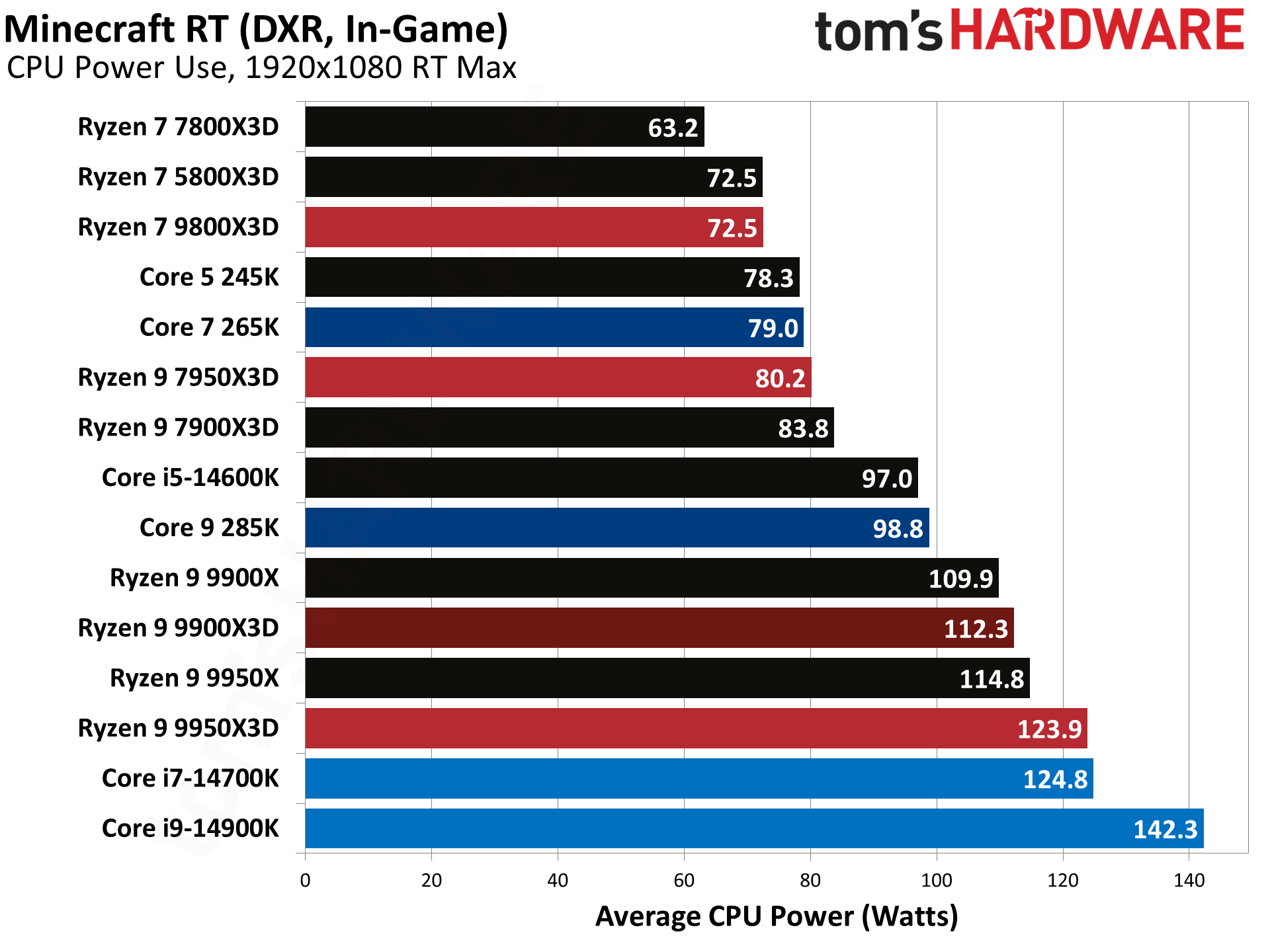
Monster Hunter Wilds
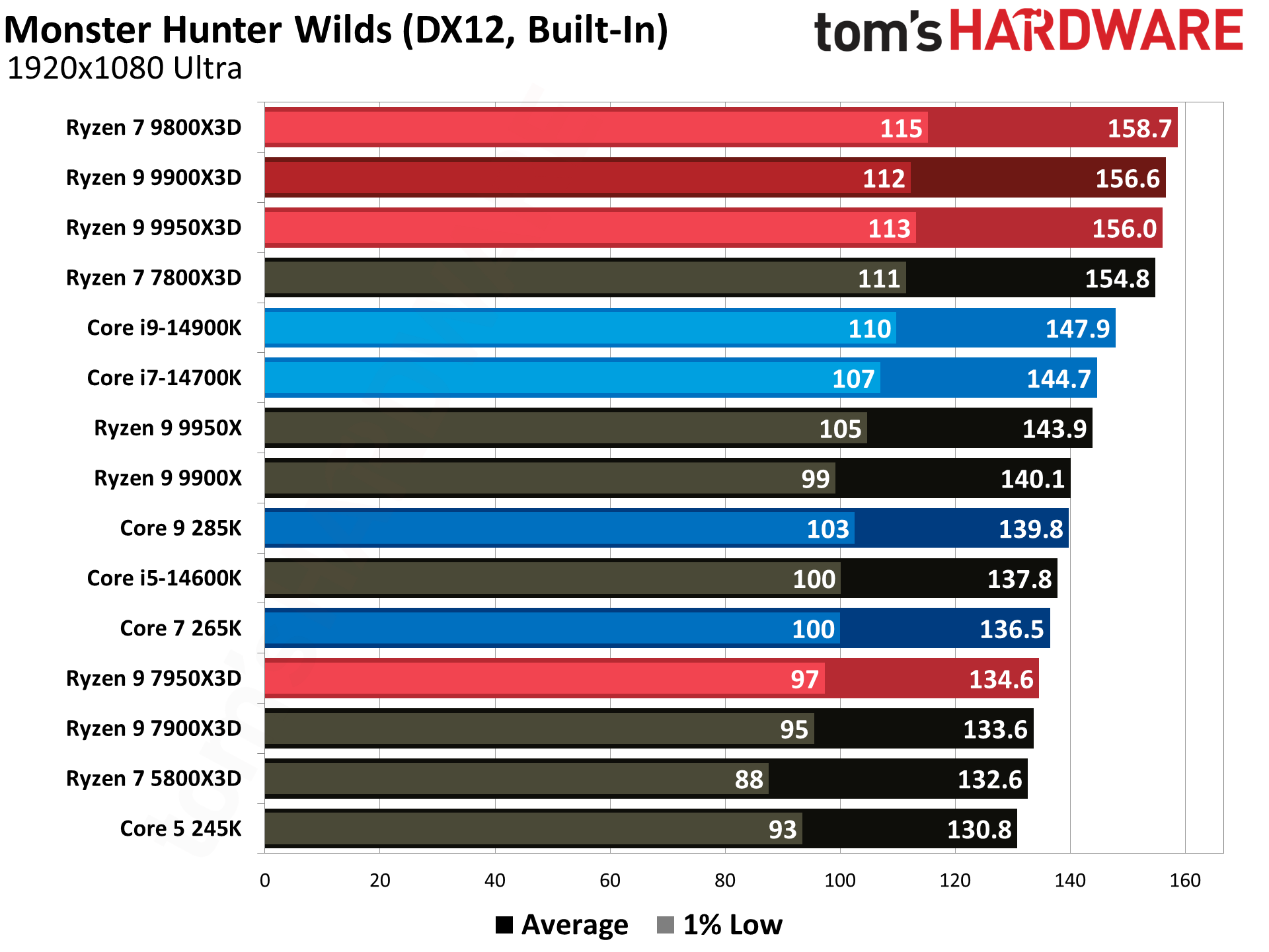

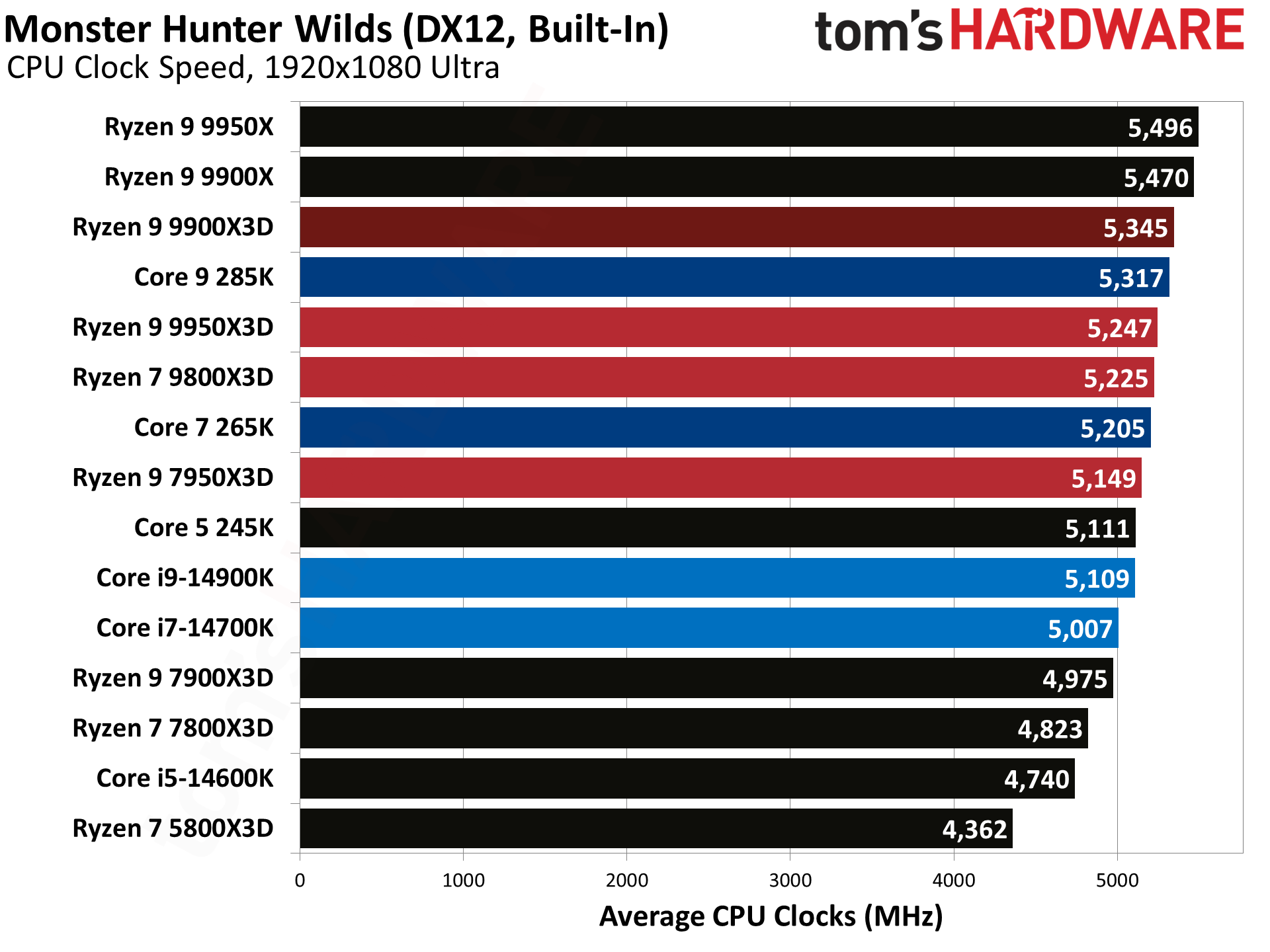
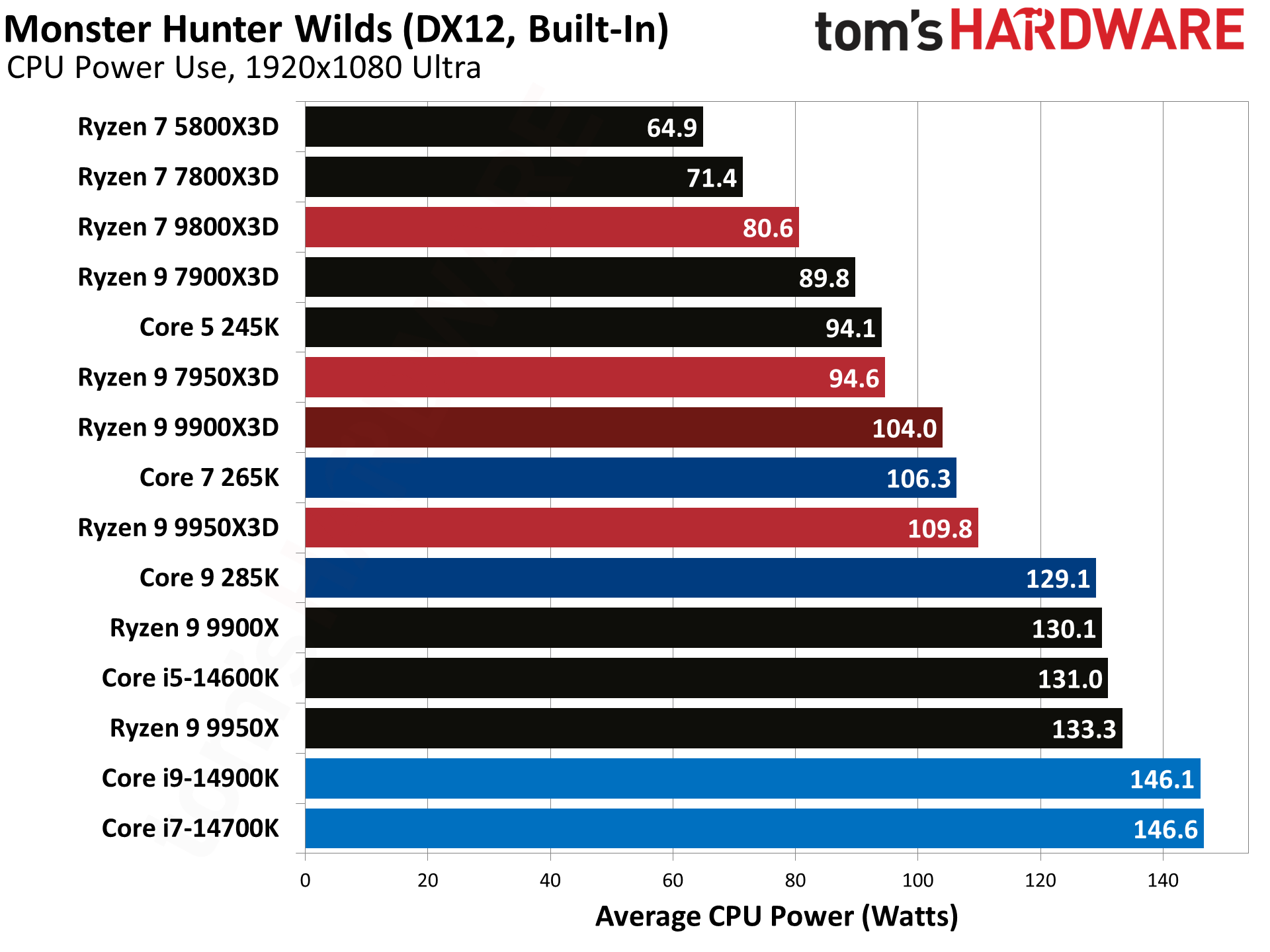
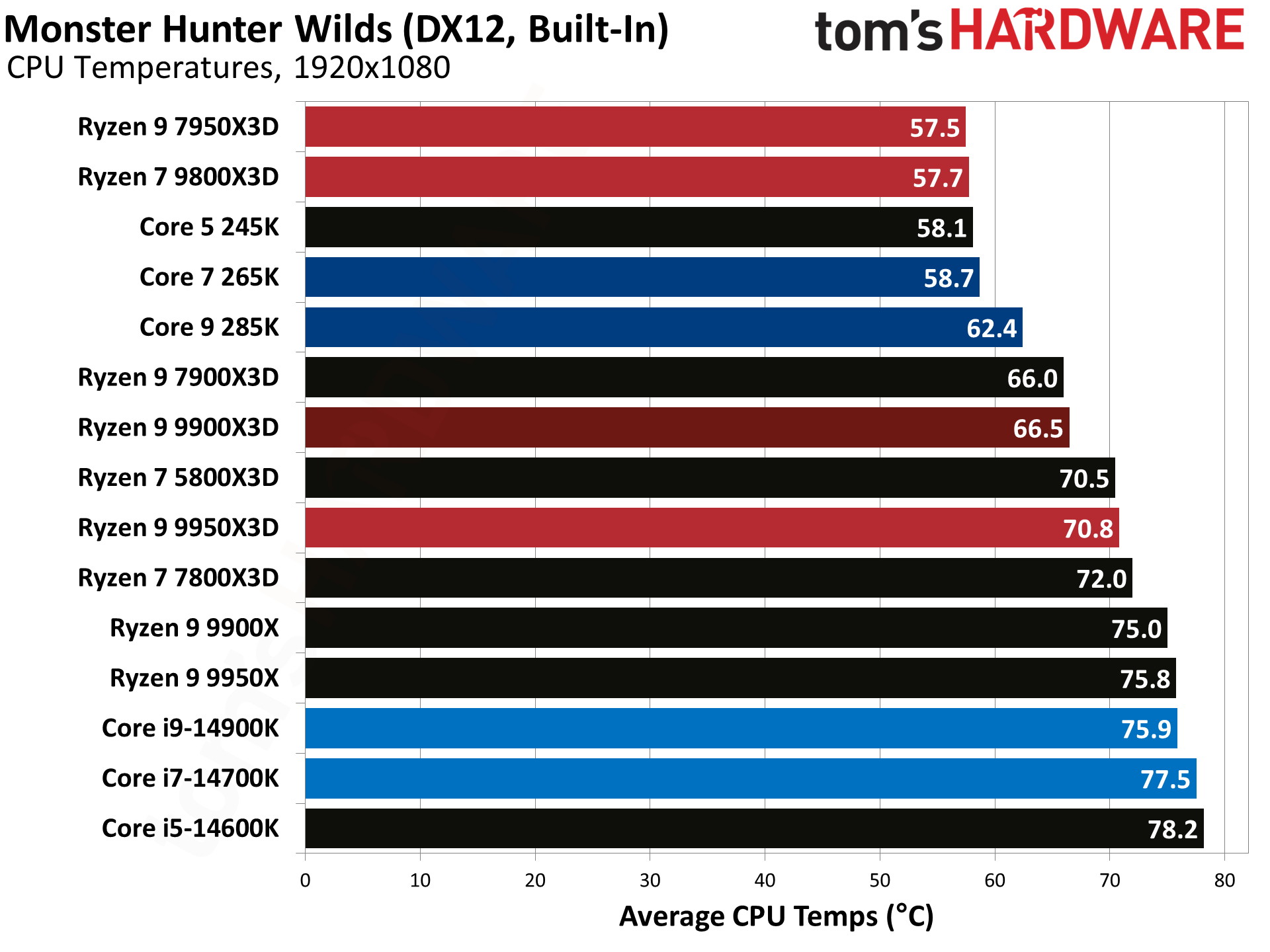
Spider-Man 2 Benchmarks

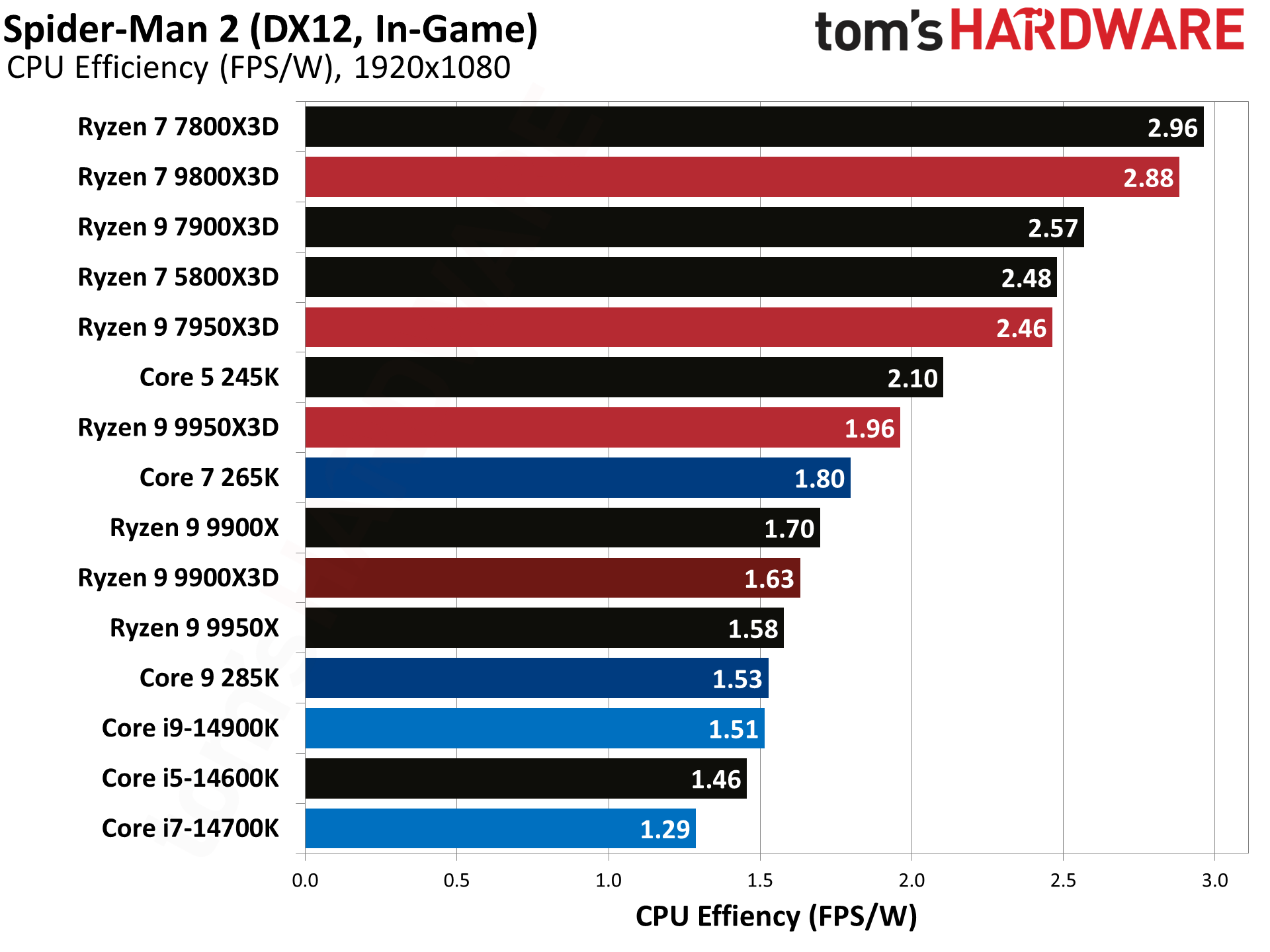
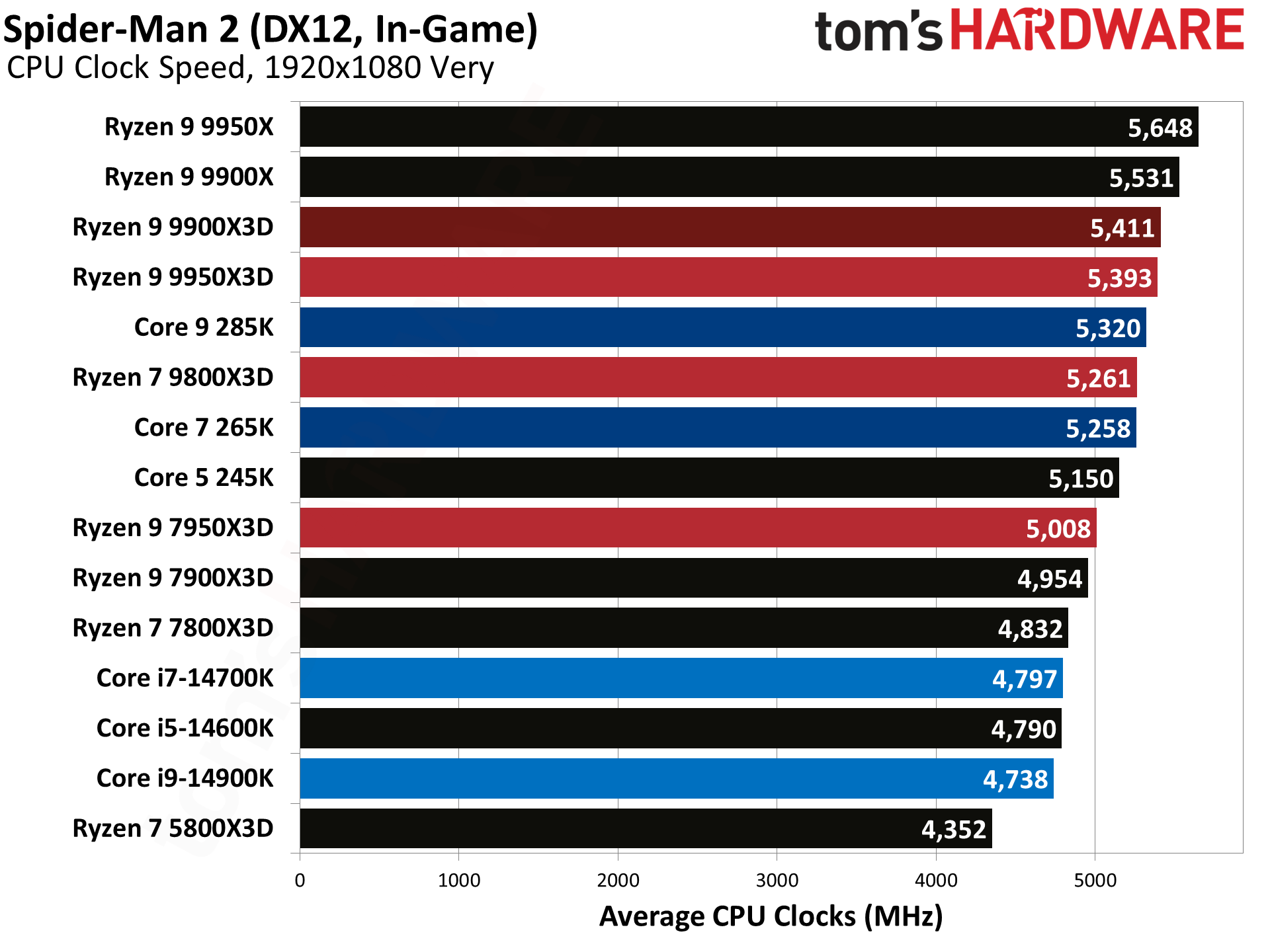
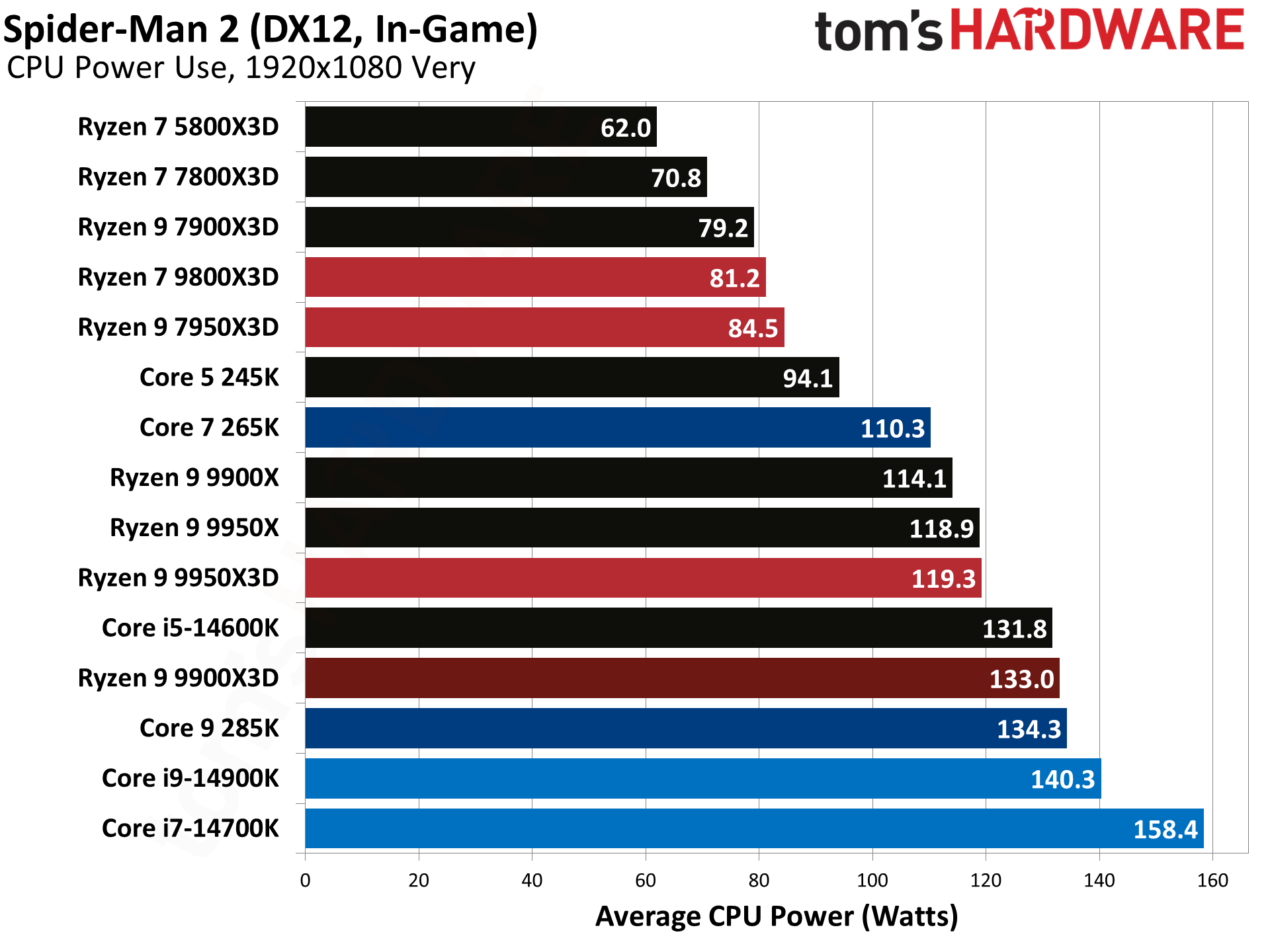
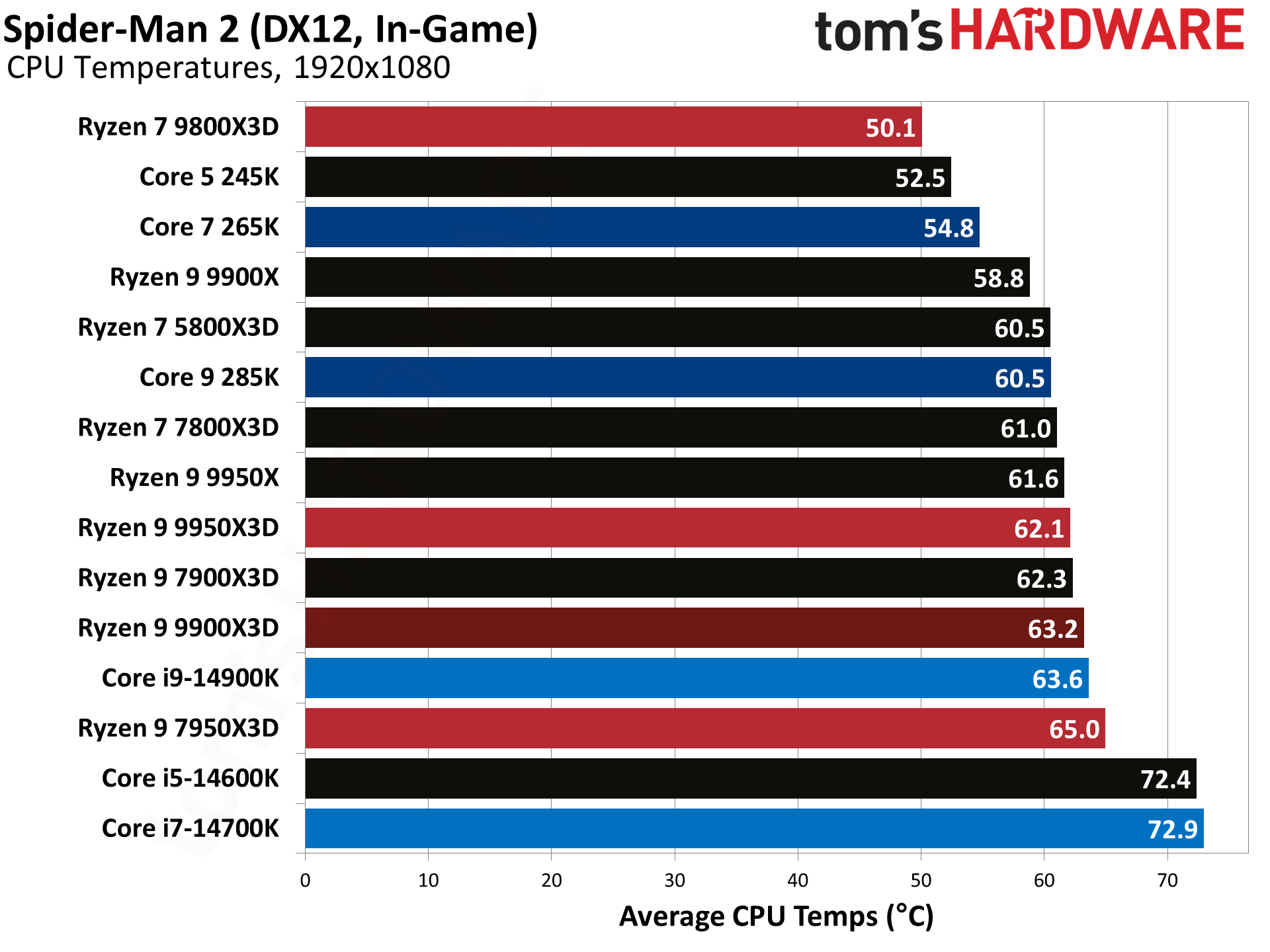
Starfield Benchmarks
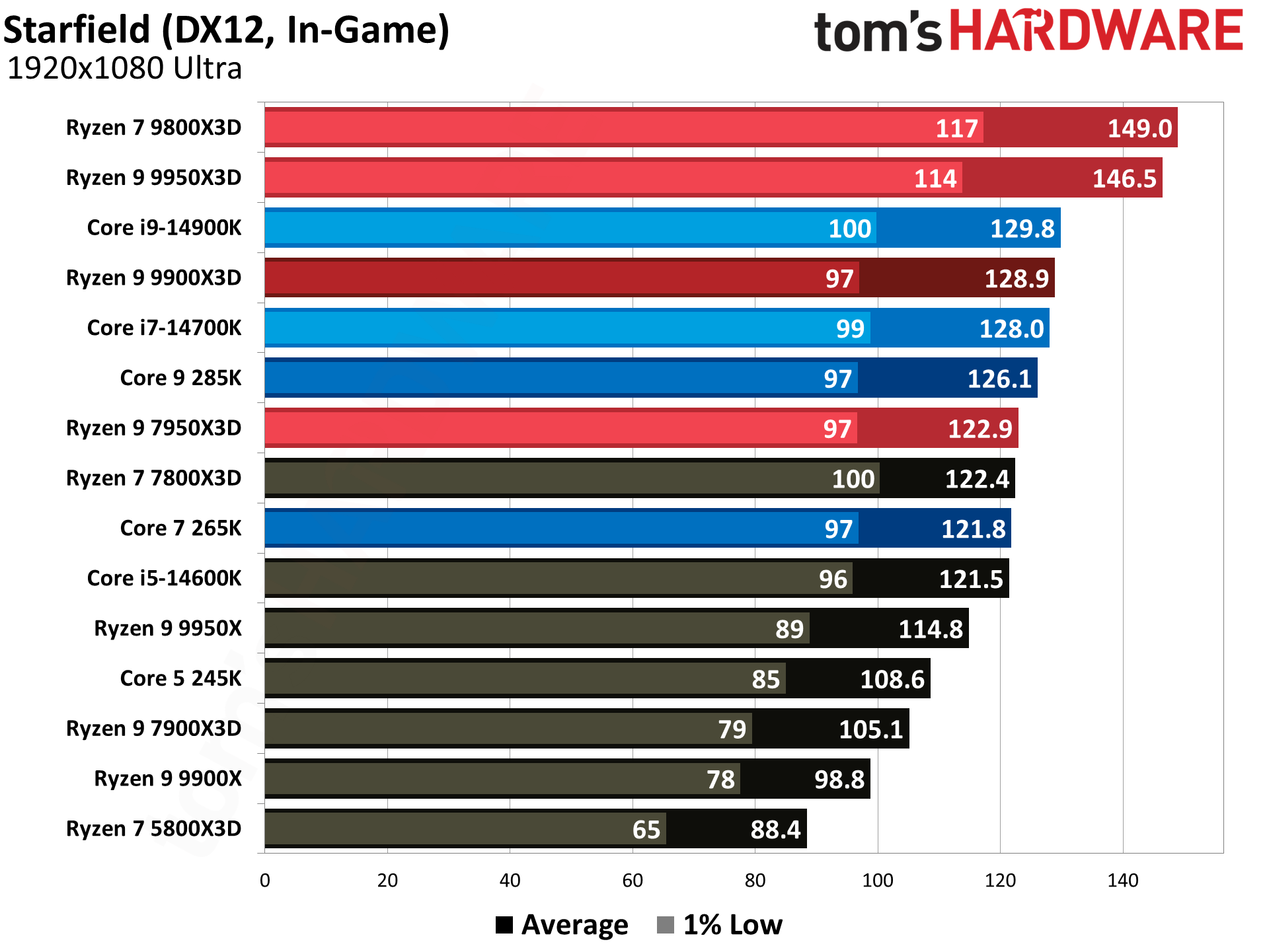
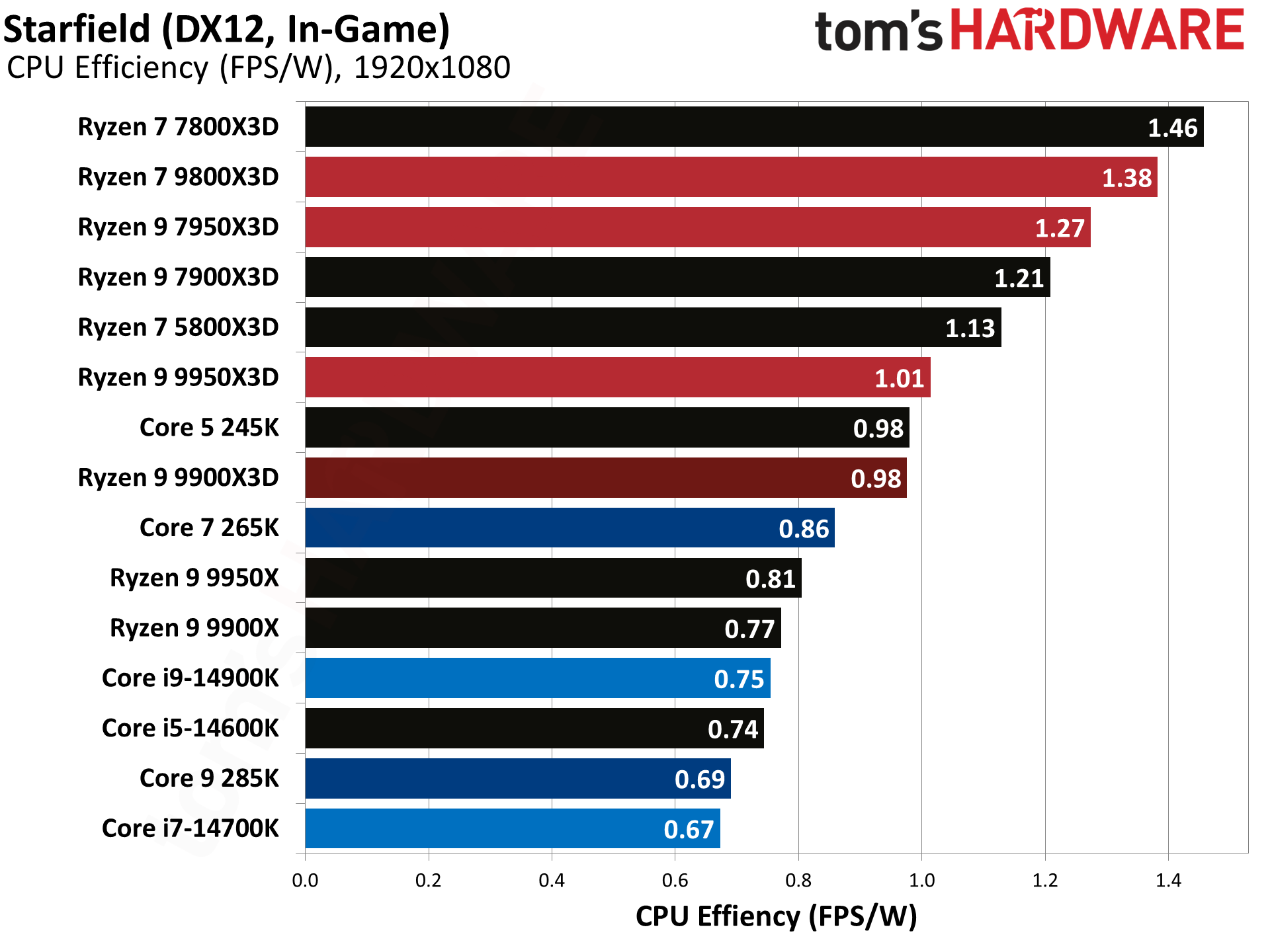
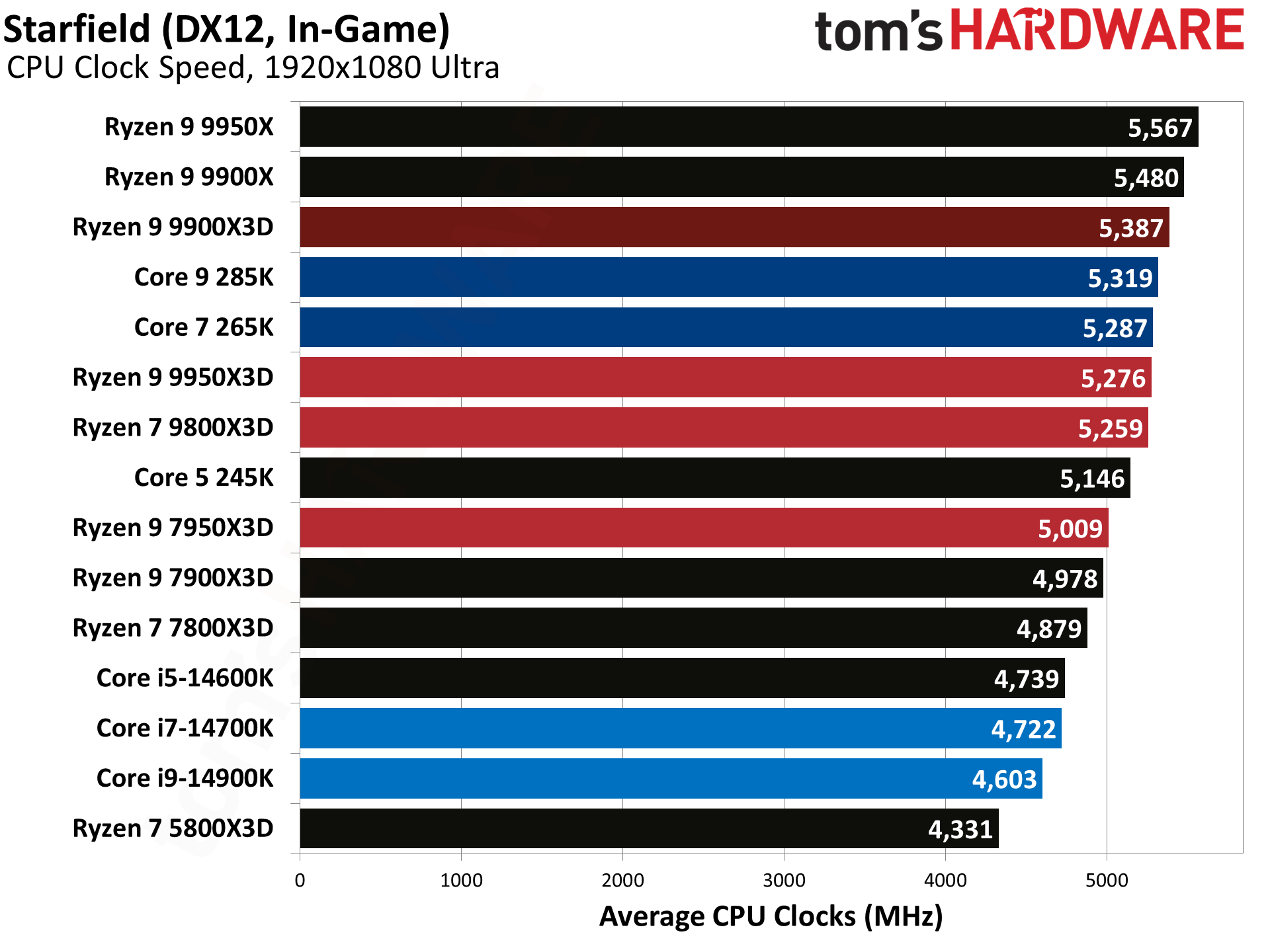
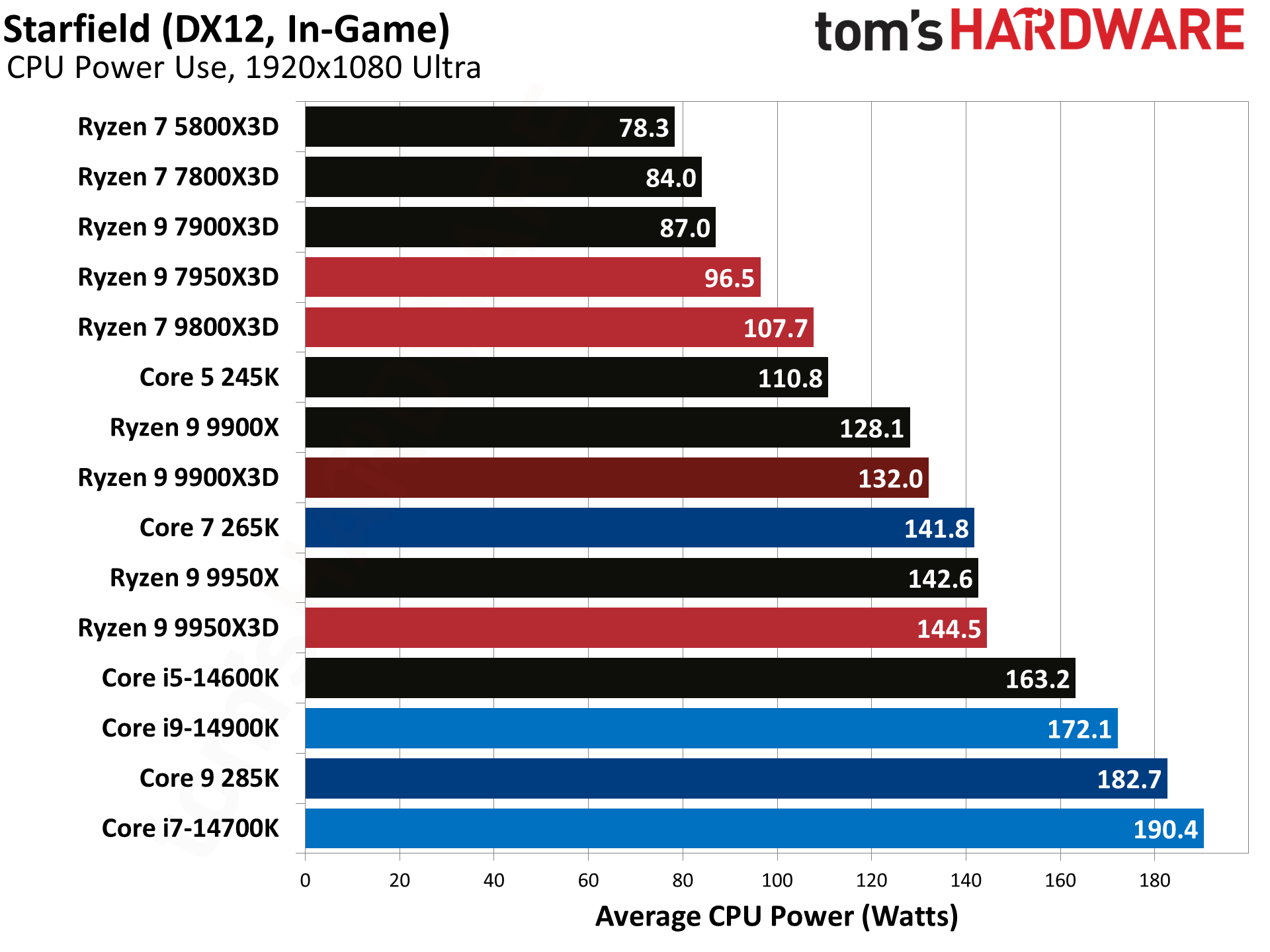

The Last of Us, Part 1
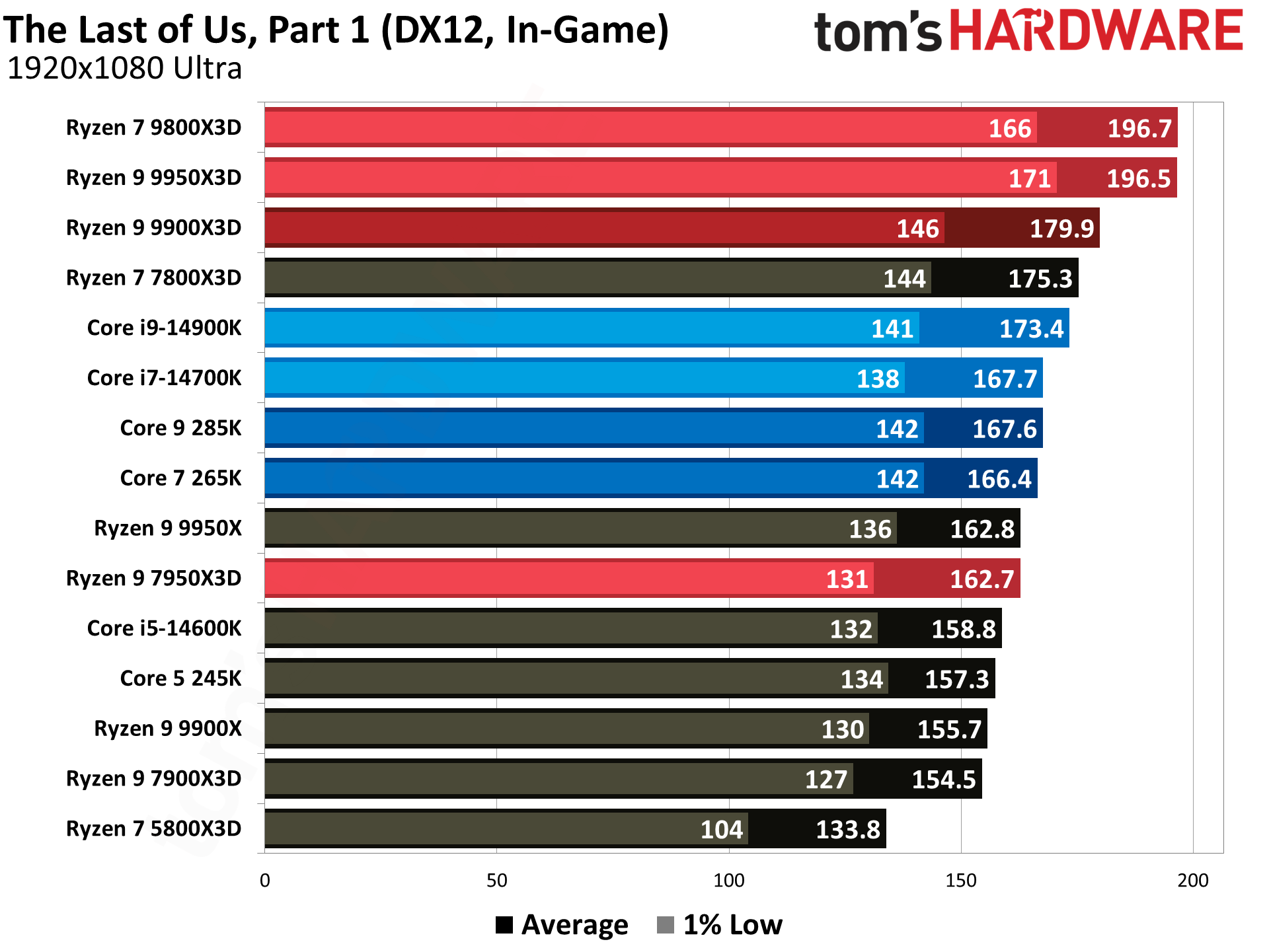
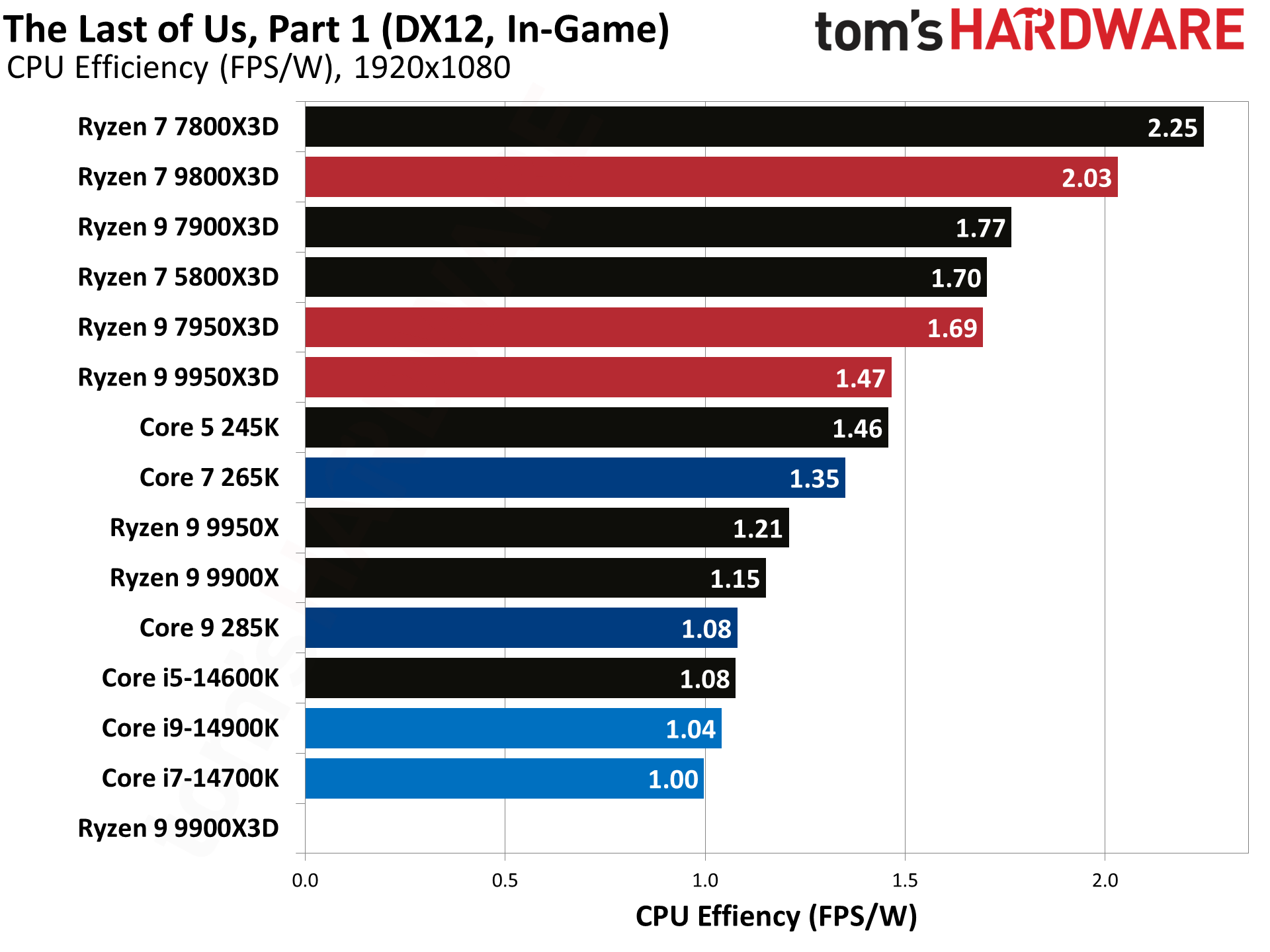
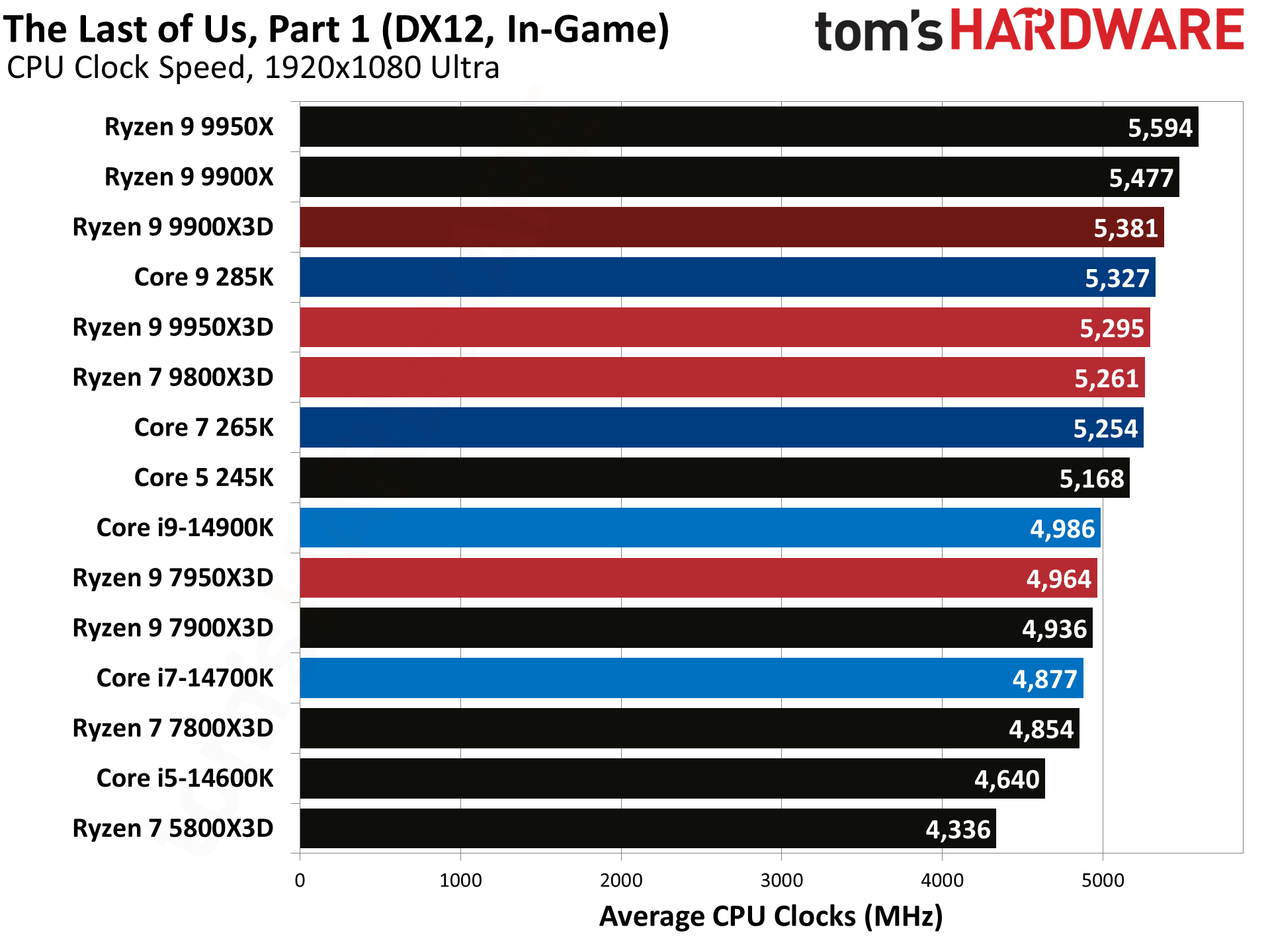
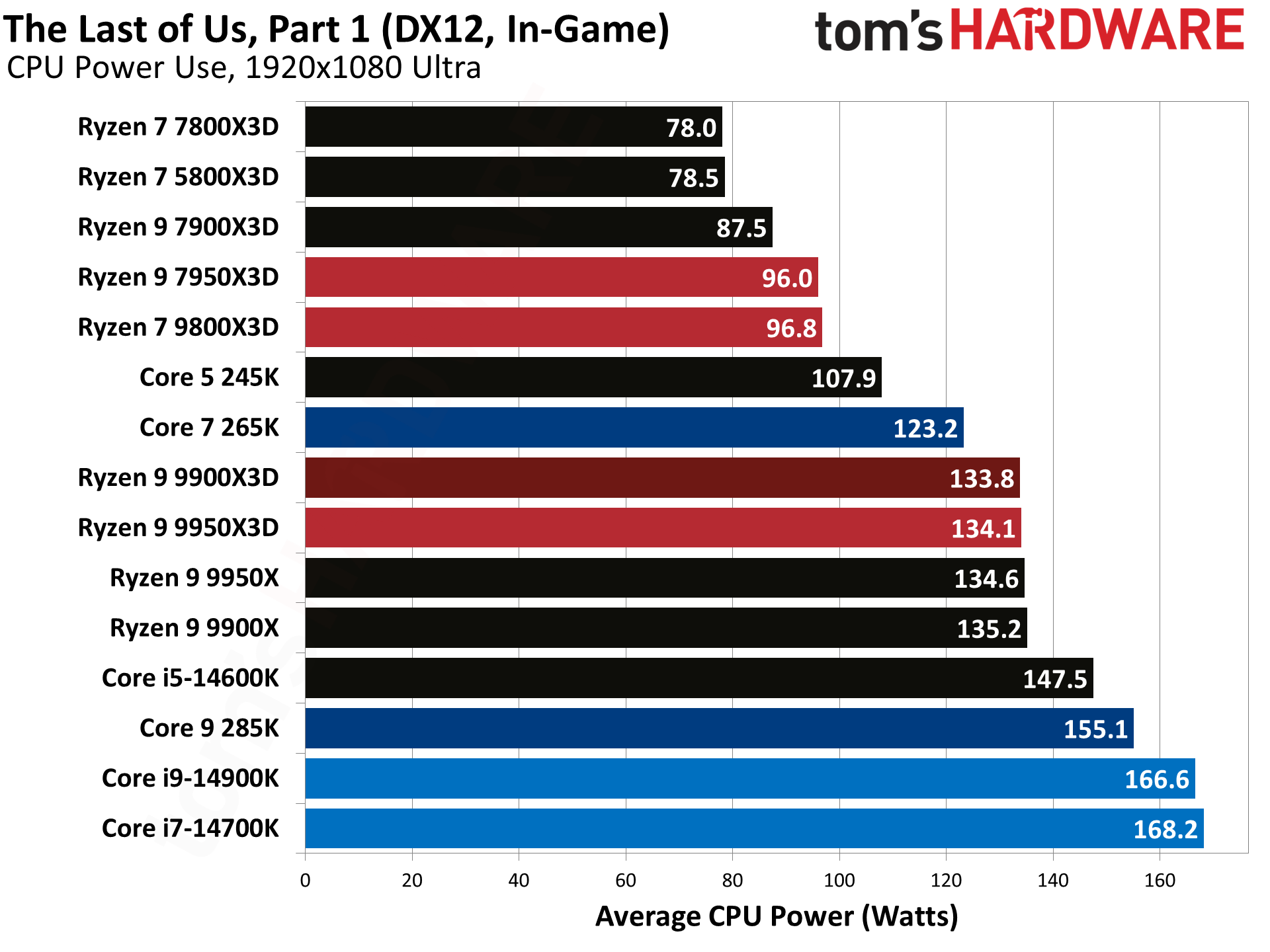
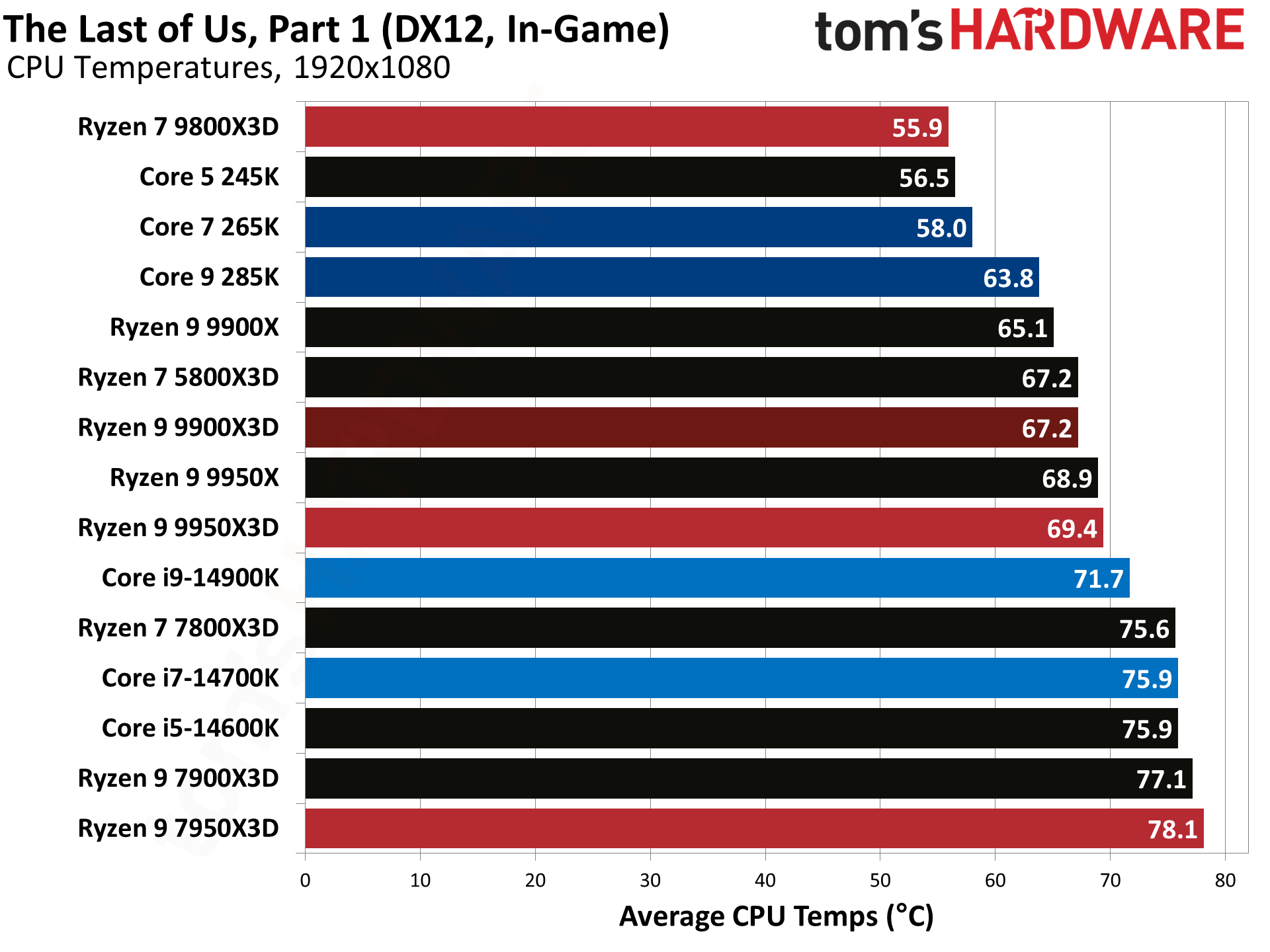
Watch Dogs Legion Benchmarks
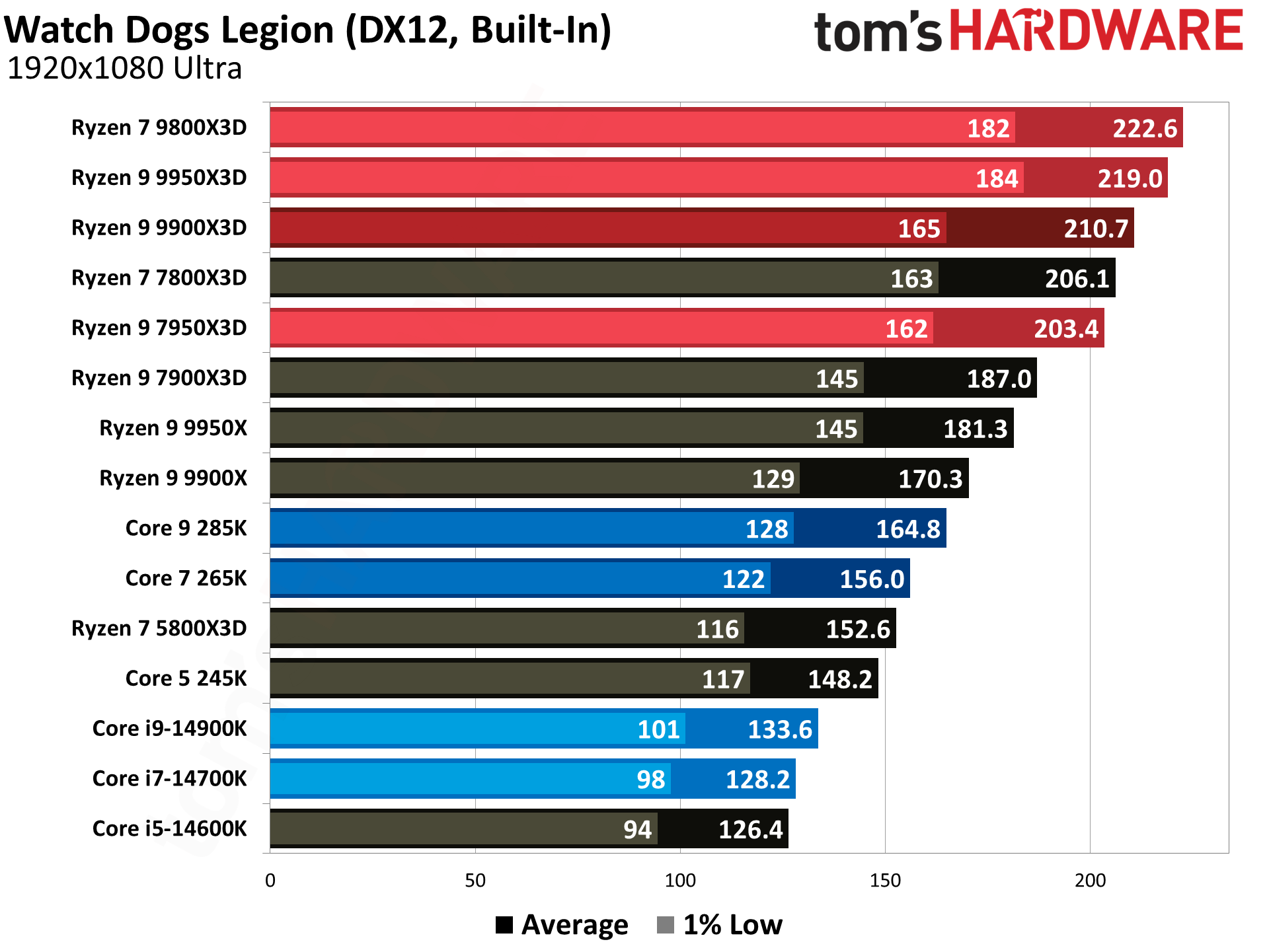
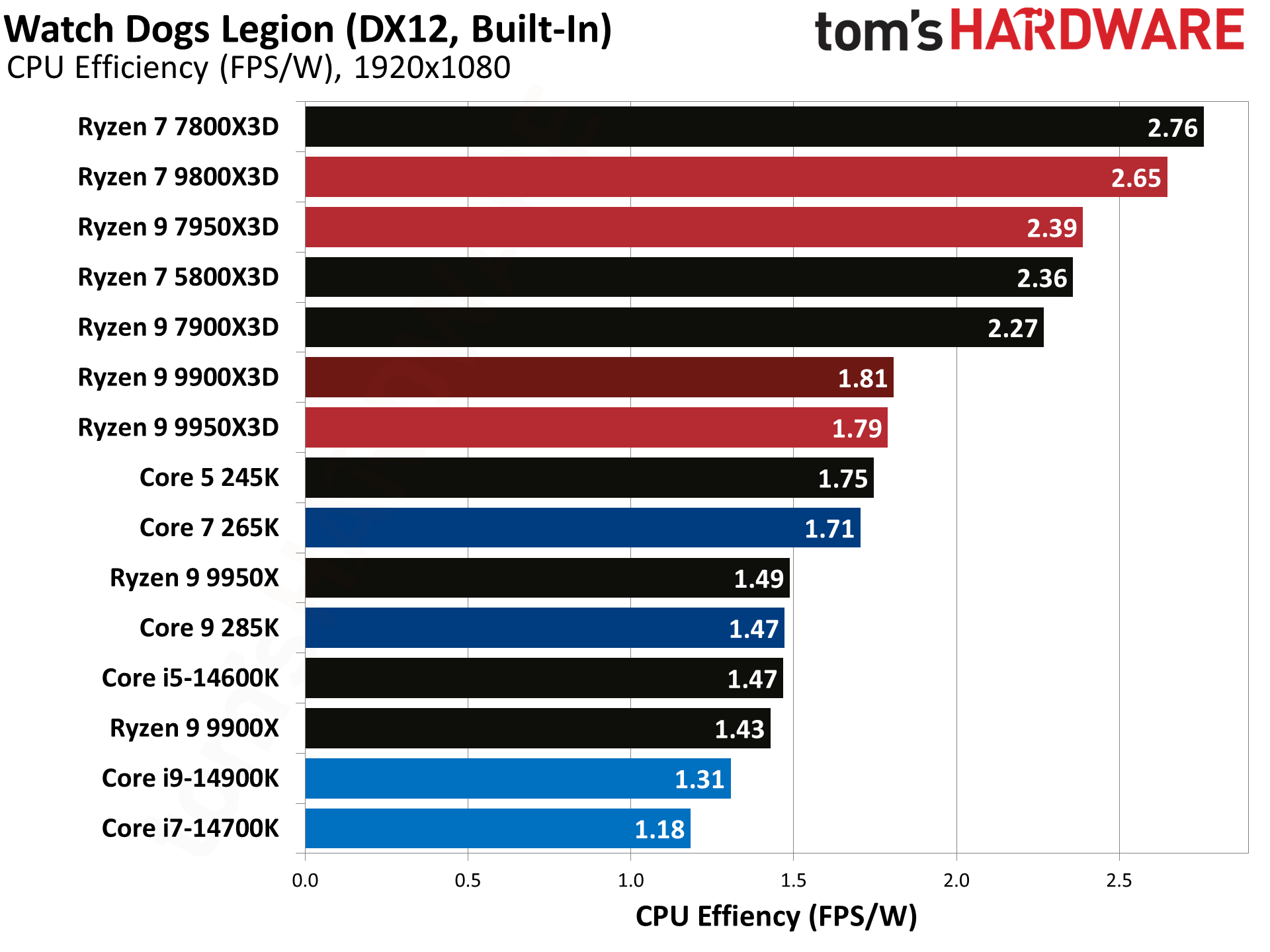
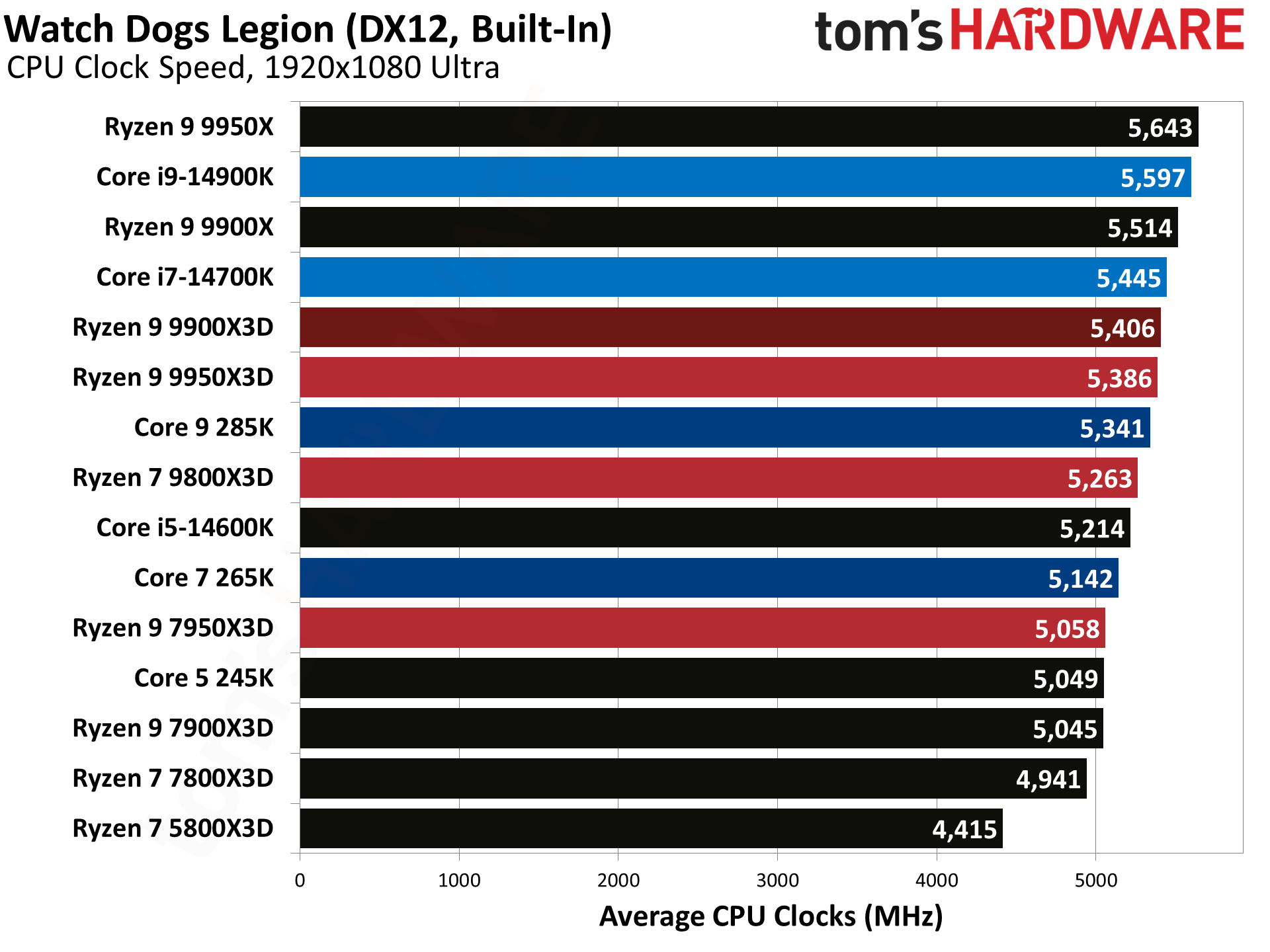
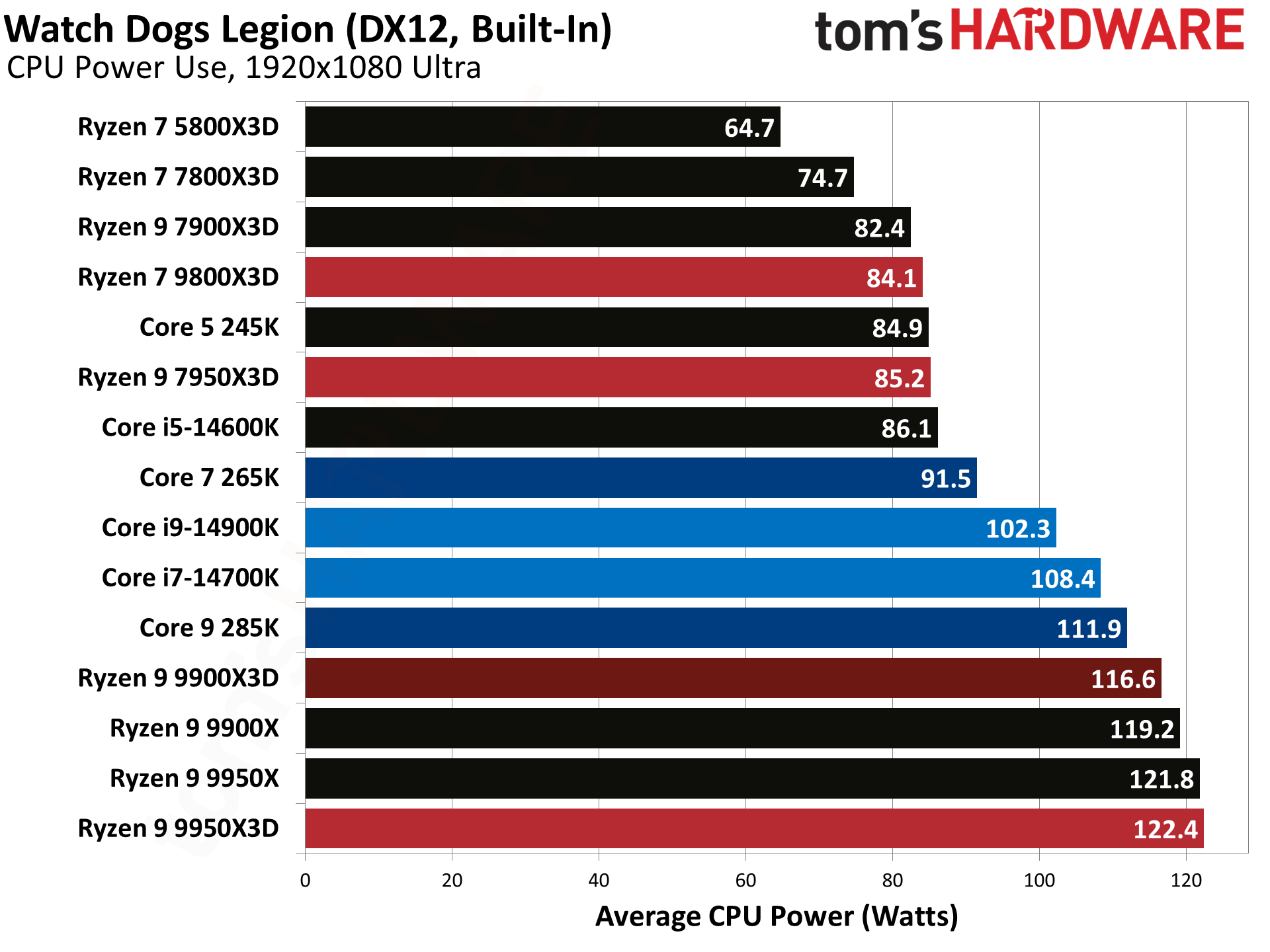
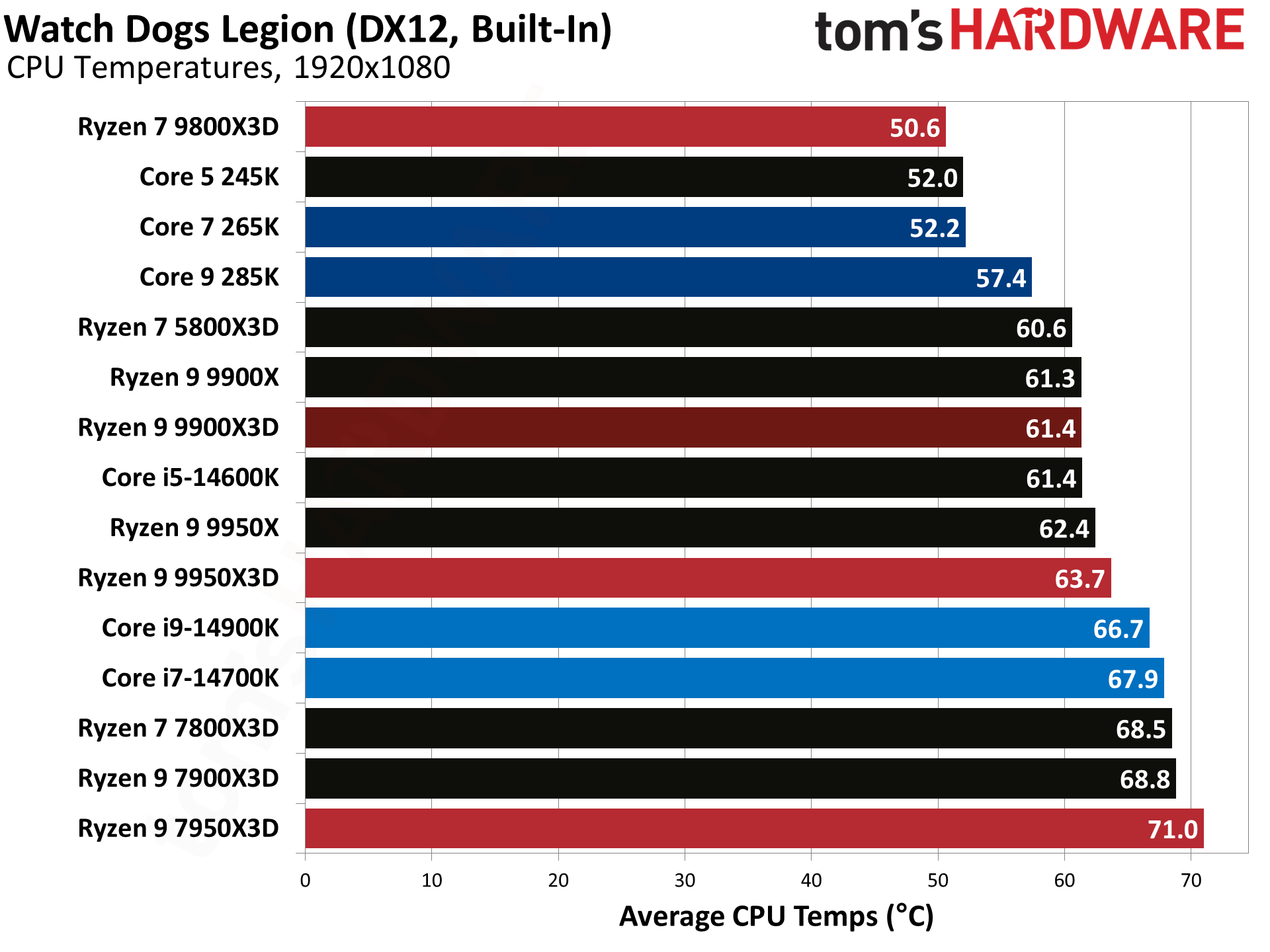
Watch Dogs Legion closes out our testing with mundane scaling instead of the typical large deltas we see with the X3D chips.
AMD's Ryzen 9 9900X3D Gaming Benchmarks
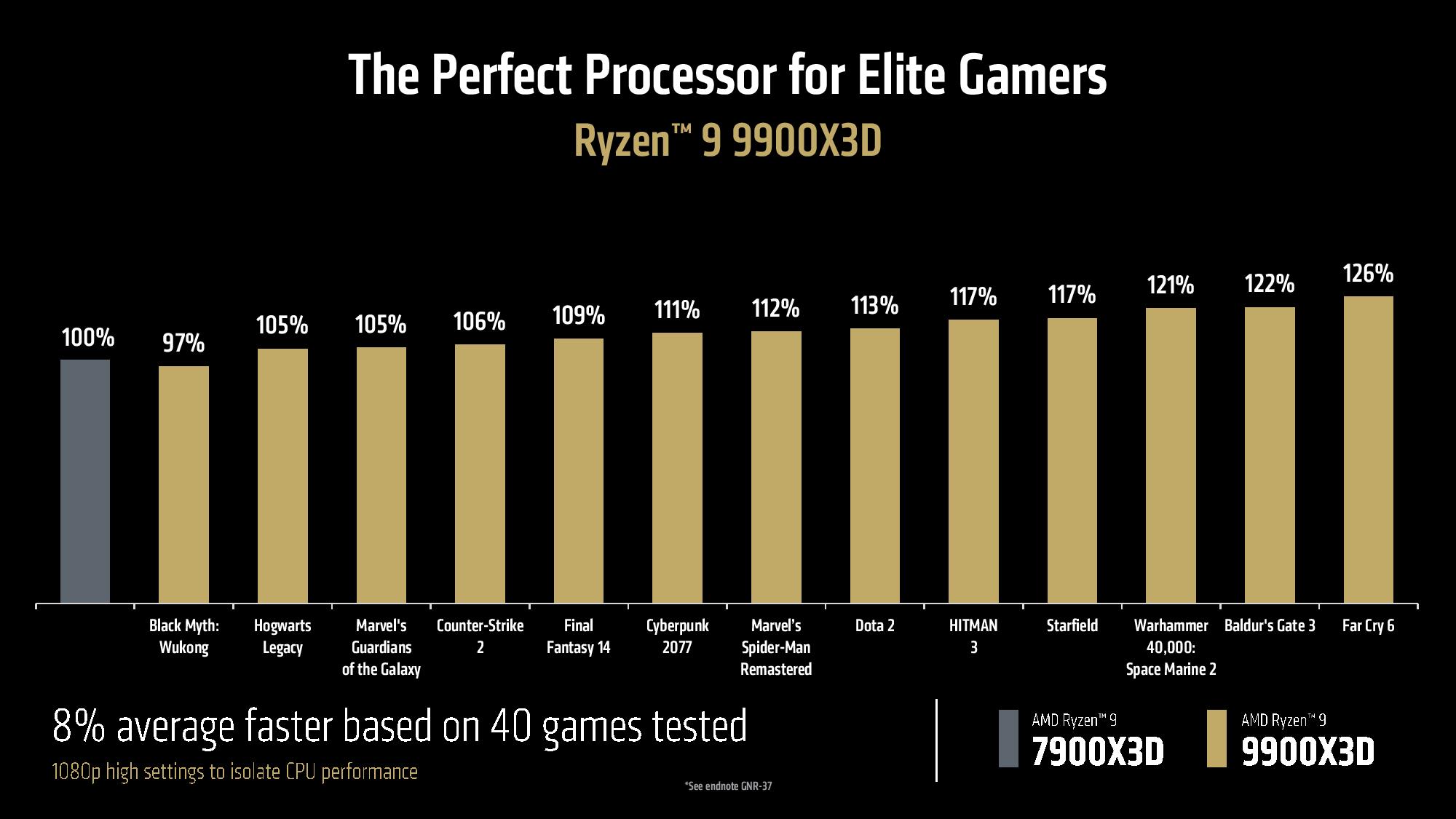
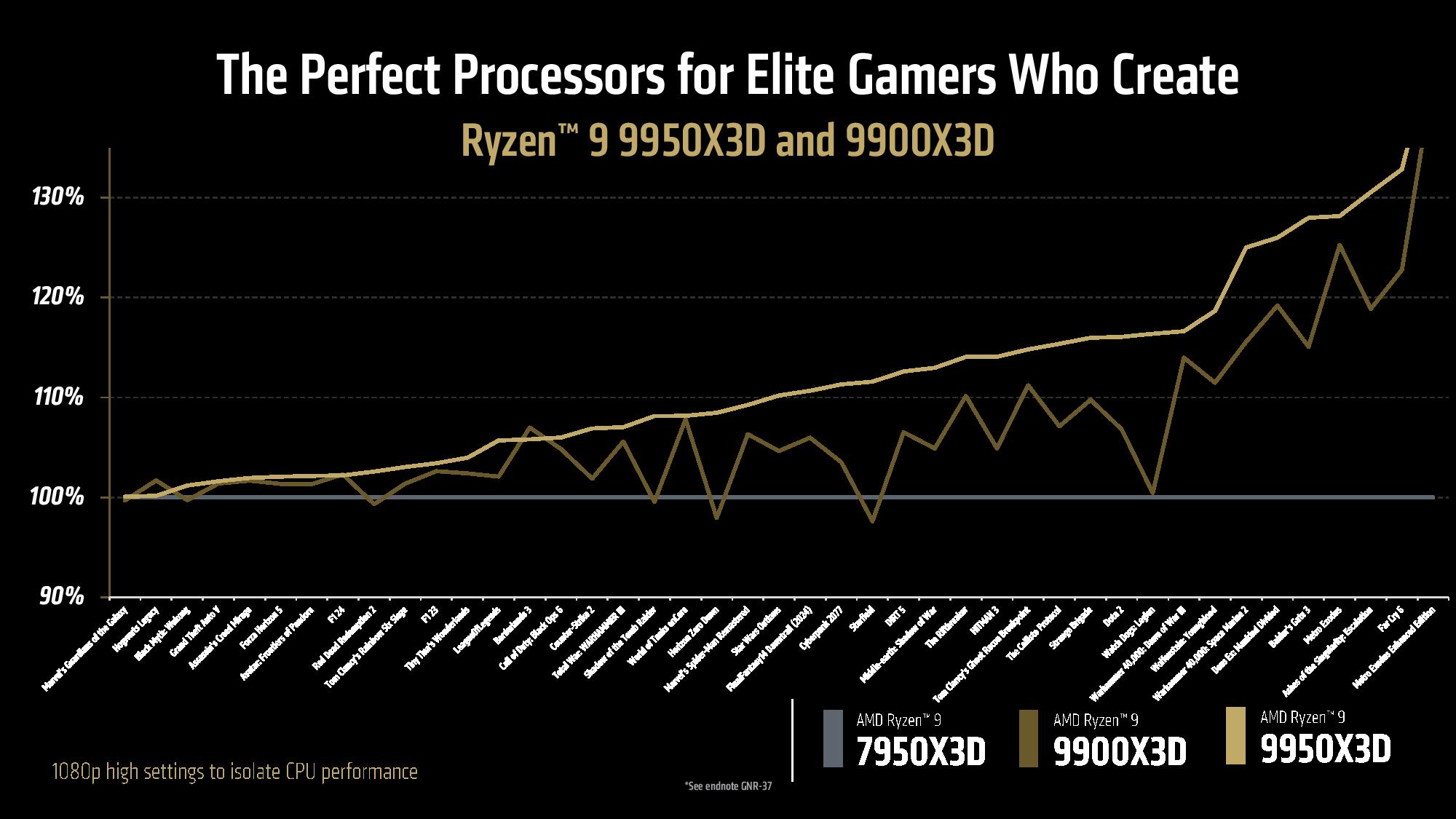
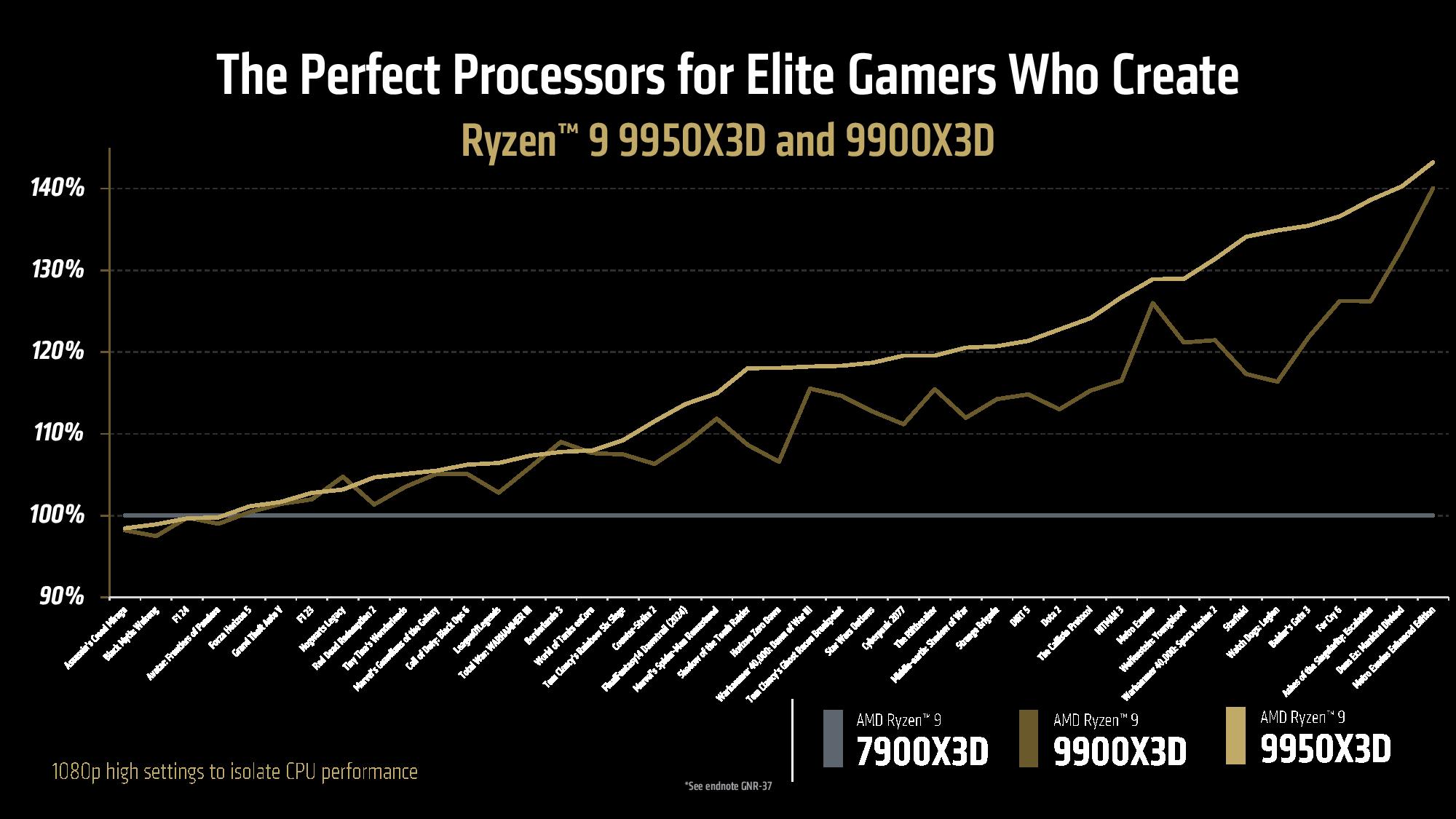
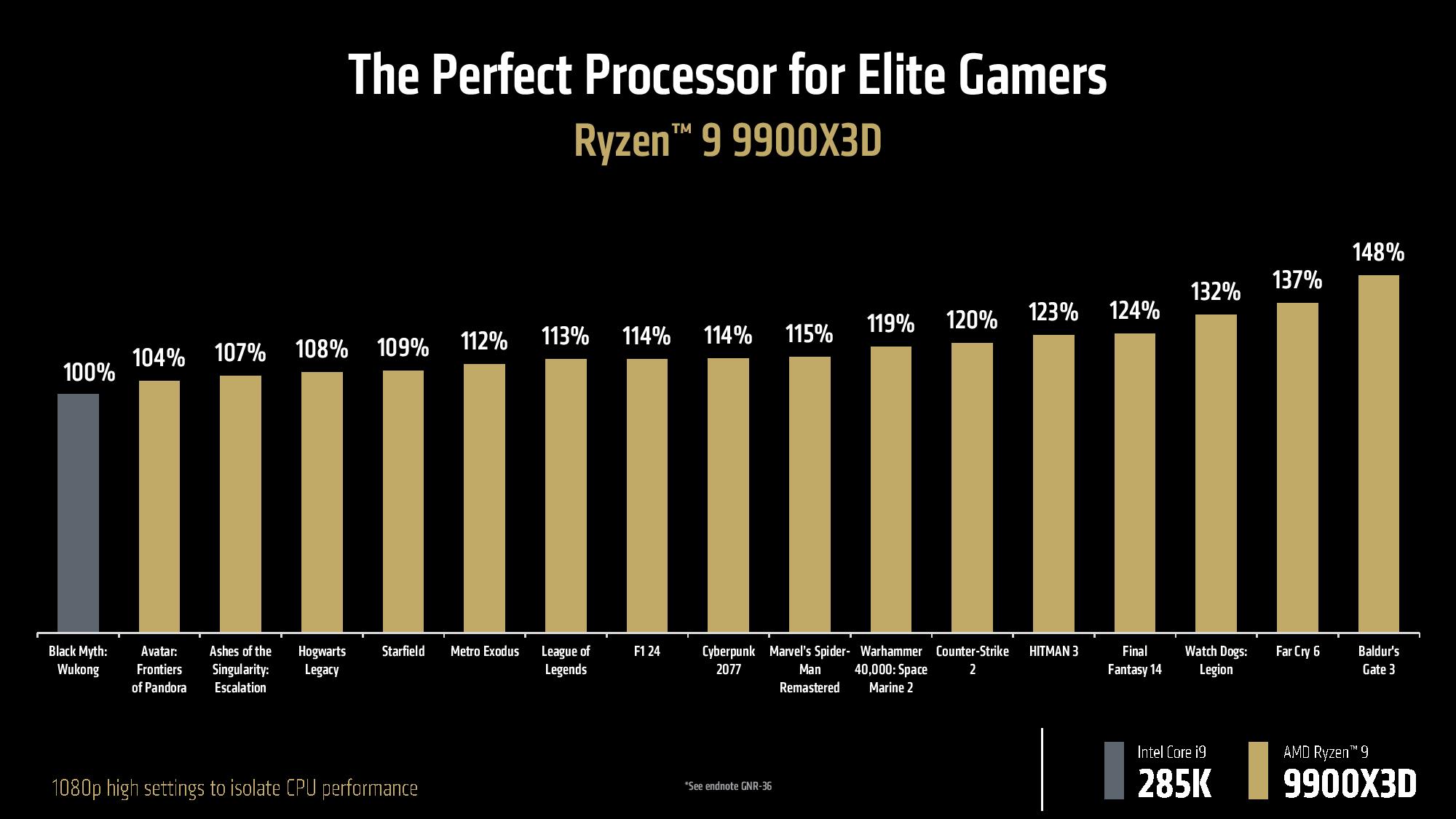
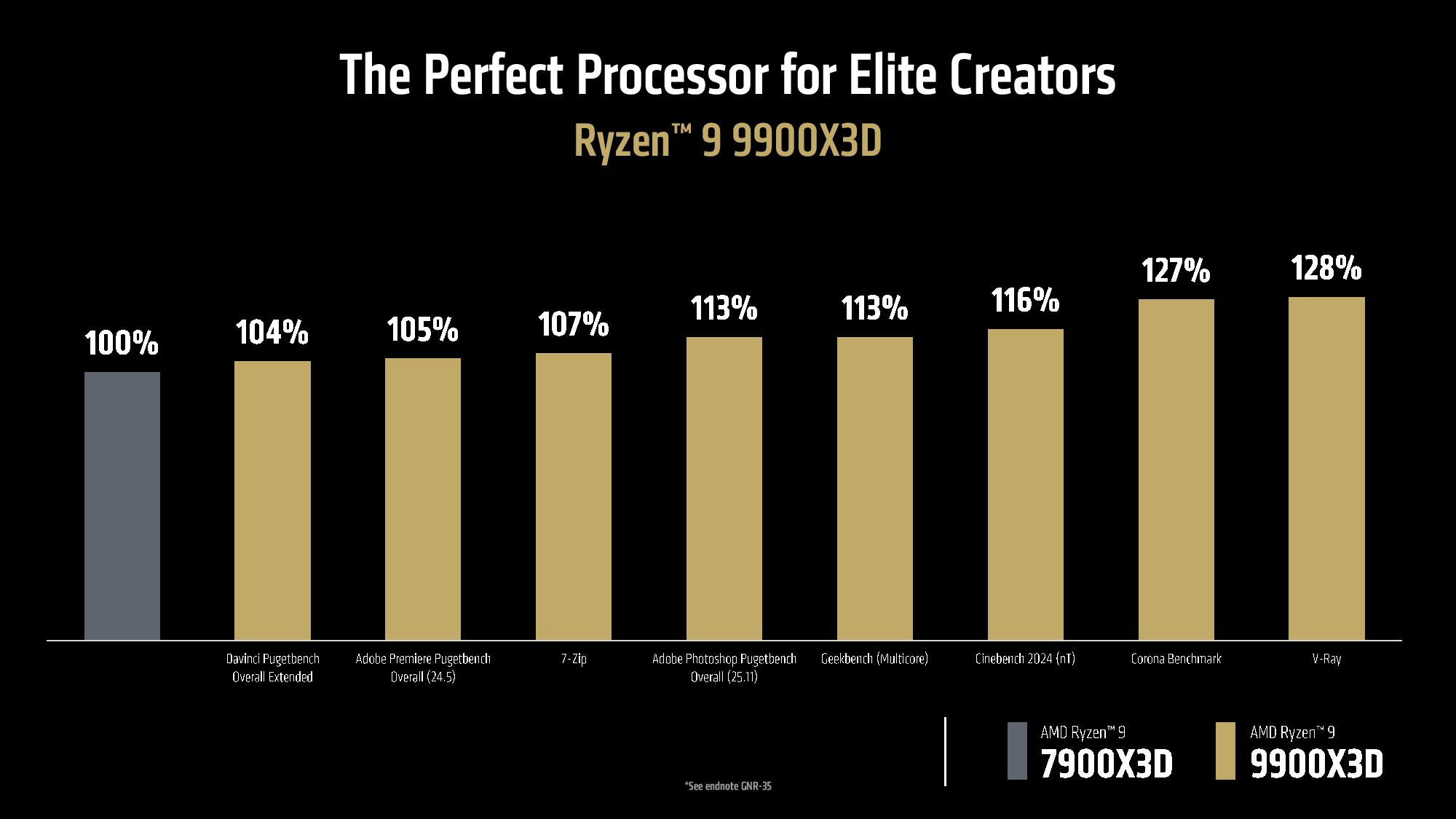
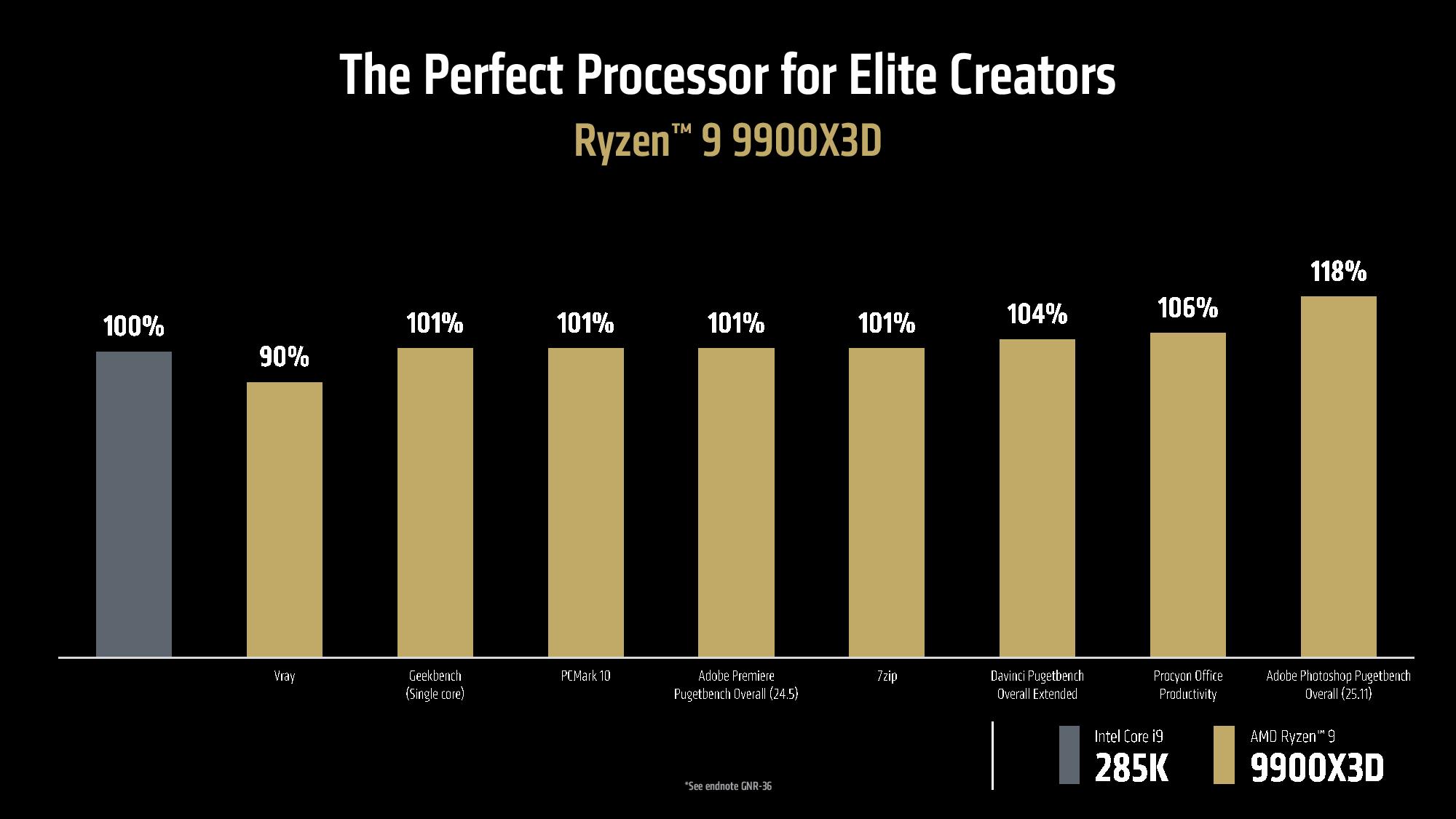
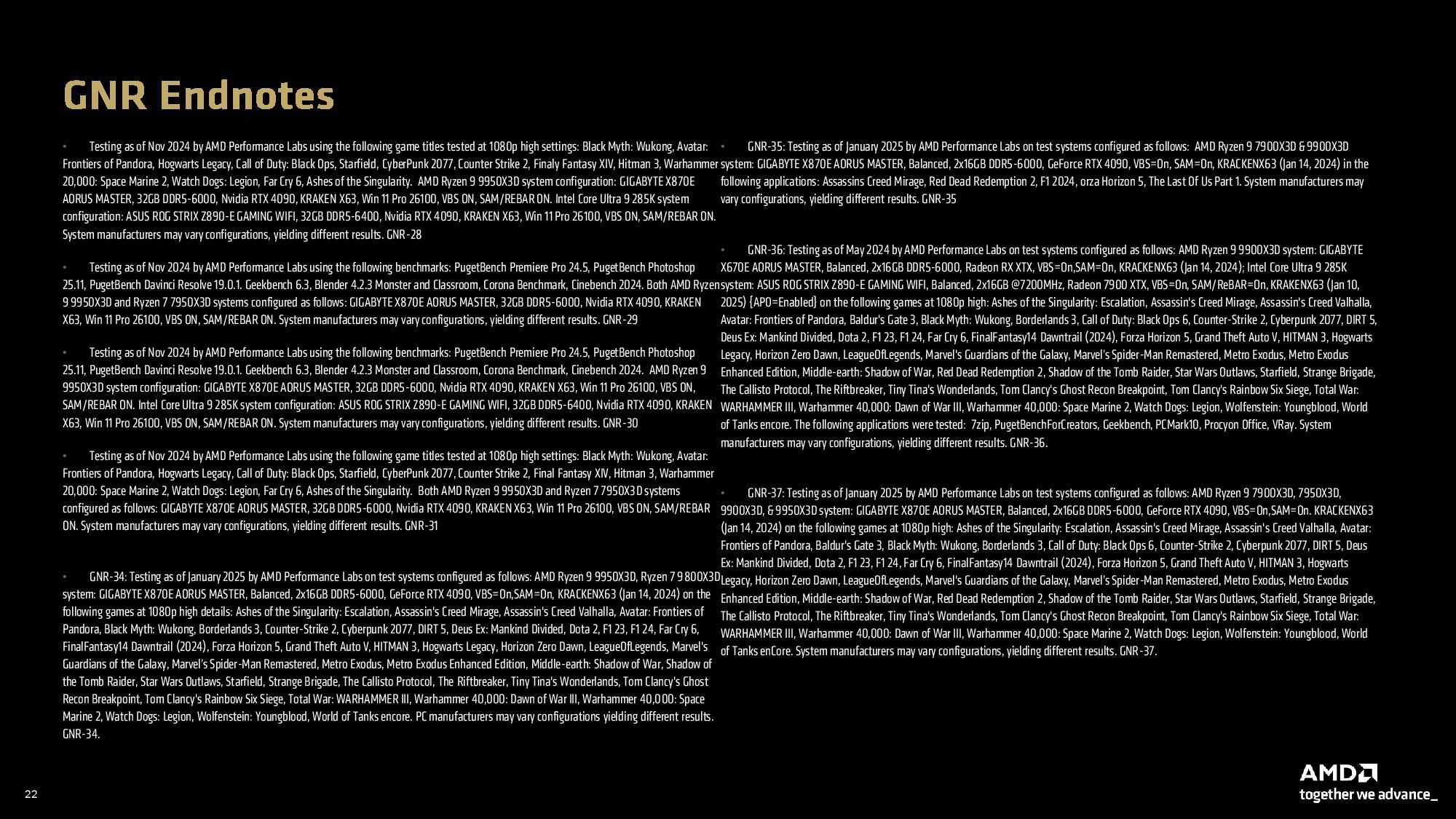
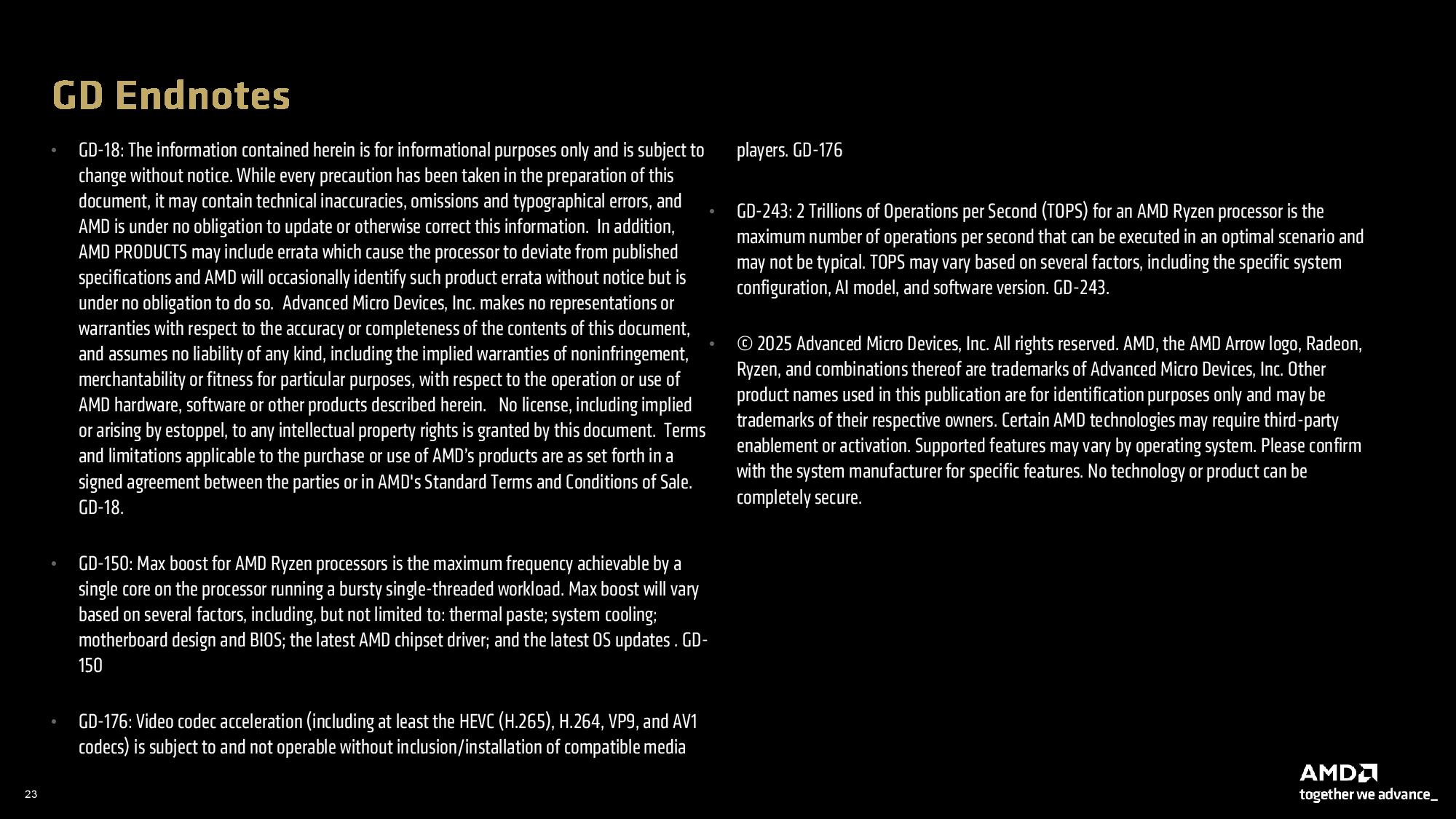
As mentioned, performance can vary based on the title. AMD shared its own benchmarks to highlight what you should expect in various titles, so this is useful information — especially given that our test suite is 3D V-Cache-friendly. As with all vendor-provided performance data, view it with the appropriate skepticism. AMD's test notes are on the final slide.
- MORE: Best CPU for gaming
- MORE: CPU Benchmark Hierarchy
- MORE: Intel vs AMD
- MORE: How to Overclock a CPU
Current page: AMD Ryzen 9 9900X3D Gaming Benchmarks
Prev Page The Middle Child Next Page AMD Ryzen 9 9900X3D Productivity Benchmarks
Paul Alcorn is the Editor-in-Chief for Tom's Hardware US. He also writes news and reviews on CPUs, storage, and enterprise hardware.
-
m3city High power usage in iddle, really? One could draw some conclusions based on graphs provided, but definitely not that.Reply -
Neilbob Really not sure why AMD are bothering with the #900 X3D variants. Neither the price or the performance fit, in either direction. Those 6 core chips with the extra cache would be far better diverted to a cheaper #600 X3D if there are enough defective dies to bother, that is.Reply
If it was another 50-75 of your chosen currency cheaper, then it might be more interesting. -
logainofhades I agree that they should just sell these dies as a 9600x3d, and skip the 9900x3d altogether.Reply -
Heat_Fan89 From reading and hearing several reviews (Gamers Nexus), i'm surprised that the 9950X3D and 9900X3D did not demolish the lesser and older 9800X3D. In fact Steve Burke from GN, said the 9950X3D was on par with the 9900X3D and 9800X3D. I decided for my gaming build to go with the 9800X3D, not because of price but the 9800 was the choice for a gaming rig. I recently snagged a new 9800X3D on sale from Amazon for $443.Reply -
JarredWaltonGPU Reply
Why not? Are you missing these charts?m3city said:High power usage in idle, really? One could draw some conclusions based on graphs provided, but definitely not that.
https://cdn.mos.cms.futurecdn.net/Wpec6VRKFNm8Yz2XX46WN3.pnghttps://cdn.mos.cms.futurecdn.net/MZ7DJqYn2gNn4vTHK9aWJ3.png
In idle and light workloads, AMD's CPUs are sitting about 14~17 watts higher than the Core Ultra 9 285K. Is that a terrible thing that should prevent people from buying it? No, but it is a weakness of AMD's design right now. It's something AMD should look into addressing with future designs. Because even though it's only 15W or so (that's two 60W LED bulb equivalents), it should be possible to get that power use down.
Imagine a phone or mobile device that used almost 3X more power at idle than the competition. That would be a major concern. And in light workloads like YouTube, if it had to use twice as much power, that would also be bad.
Some people seem to think the pros and cons are us screaming "THESE ARE AMAZING ASPECTS" and "THESE ARE TEH WORST ASPECTS" but they're really just a high-level summary of some key points — things that are going well, things that could be improved (without the shouting).
I'm not sure why anyone would be surprised that, in gaming, the 8-core X3D and the 8-core X3D plus 8-core standard CCDs perform better in games than a 6-core X3D plus 6-core standard configuration. The whole point of the X3D is to shift cache-sensitive workloads to that CCD, away from the other CCD that lacks the extra cache.Heat_Fan89 said:From reading and hearing several reviews (Gamers Nexus), i'm surprised that the 9950X3D and 9900X3D did not demolish the lesser and older 9800X3D. In fact Steve Burke from GN, said the 9950X3D was on par with the 9900X3D and 9800X3D. I decided for my gaming build to go with the 9800X3D, not because of price but the 9800 was the choice for a gaming rig. I recently snagged a new 9800X3D on sale from Amazon for $443.
It's a whitelist software solution (meaning, AMD explicitly lists which games should effectively disable the non-X3D CCD), and not everything benefits. But as we've seen plenty of times in the past, the dual-CCD (and quad-/hex-/octal-CCD Threadripper) solutions add latency to memory and cache transactions and that reduces gaming performance.
In fact, that's precisely the problem Intel has with Arrow Lake: higher memory latency means lower gaming performance. -
usertests Reply
Higher margin on the chip, perhaps? Although the street price is already below MSRP.Neilbob said:Really not sure why AMD are bothering with the #900 X3D variants. Neither the price or the performance fit, in either direction. Those 6 core chips with the extra cache would be far better diverted to a cheaper #600 X3D if there are enough defective dies to bother, that is.
This should be the last hurrah for the awkward AMD 12-cores. Zen 6 will move to 12-core chiplets. The equivalent chip in that lineup might have 16, 18, or 20 cores, a minimum of 8 cores in each CCX. The 3D cache whitelisting problem could persist, but the single-CCD 9800X3D successor will have 12 cores and walk all over the 9900X3D in every scenario. -
Neilbob Reply
Oh, I definitely understand the reason for it, but I like to delude myself in to thinking that AMD would do something 'nice' for us dinky liddle consumers. I know; I may as well wish for world peace, with a mysterious multi-million inheritance thrown in.usertests said:Higher margin on the chip, perhaps? Although the street price is already below MSRP.
Then again, I can't see how a 9600X3D wouldn't sell like hot cakes at 300, or even a bit more. -
usertests Reply
The other reason they are wary of doing a wide, early release of 6-core X3D is because it clearly undercuts the 8-core X3D for the many games that are fine running on 6 fast cores.Neilbob said:Oh, I definitely understand the reason for it, but I like to delude myself in to thinking that AMD would do something 'nice' for us dinky liddle consumers. I know; I may as well wish for world peace, with a mysterious multi-million inheritance thrown in.
Then again, I can't see how a 9600X3D wouldn't sell like hot cakes at 300, or even a bit more.
They could probably get away with charging $350 for a 9600X3D, but if it costs about the same to make as $480+ 9800X3D due to high yields, a chunk of money is left on the table. So it will probably get introduced much later in this generation when enough defective chips are accumulated, following the pattern. -
Albert.Thomas "We measured the Core Ultra 9 285K at 20W under these conditions, but the Ryzen 9 9900X3D consumed 37W. While we can see that the 9900X3D has improved compared to the previous-gen Ryzen 7000X3D models, this is still a significantly higher amount of active idle power draw than the Intel chips."Reply
What about medium-light conditions Paul?
I've been able to pull a (relatively) insane amount of power with the 9950X3D just by spinning my mouse around really quickly.
With the disclaimer that I haven't tested this in detail, it appears that AMD's flagship X3D CPU is much less efficient below 100W, but is more efficient above 100W. -
Notton What AMD really needs is an 8+4, not a 6+6Reply
Although, judging by the amount of binned 4-cores they sell, it seems the yields are so good they have almost none.
